- Travel Planning Guide

Is Panama Expensive?

- Is Panama expensive?
How expensive is Panama?
How expensive is a one week trip to panama, how expensive is a two week trip to panama.
- How expensive is a one month trip to Panama?
Is it expensive to backpack in Panama?
Are hotels expensive in panama.
- How expensive are activities in Panama?
Is food expensive in Panama?
Is transportation expensive in panama, is panama expensive to visit.
Panama is not only a popular destination, but it is also fairly affordable. Compared to the rest of Central America, it is a moderately priced country to visit. It's ranked in the top 50% of countries in Central America for its travel costs, and is comparable to destinations such as Honduras and Belize.
Panama is not as popular with tourists as other countries, but you'll find a nice selection of destinations at a range of prices. Bocas del Toro is one of the most expensive places to visit. However, if you're looking for a cheaper alternative, you can check out Pedasi.

On average, visitors spend about $79 per day during their visit to Panama (U.S. Dollars). Prices vary dramatically by travel style and length of trip, but if you stay at moderately priced hotels, eat at affordable restaurants, and use public transportation when possible, you can expect to stay close to this budget. See more travel costs for Panama here .
Based on the travel expenses of others, a one week trip to Panama costs around $551 on average, per person. This includes food, sightseeing, local transportation, accommodation, and nightlife. For two people, a one week trip costs $1,102.
Based on our calculations from previous travelers, a two week trip to Panama will cost around $1,102 per person. This amount includes sightseeing activities, hotels, restaurants, local transportation, and other travel expenses. For two people, a two week trip would cost $2,204.
How expensive is a month long trip to Panama?
On average, a one month trip to Panama costs about $2,362 per person. This is based on the previous expenses of actual travelers, and includes accommodation, food, activities, local transportation, and more. For two people, a one month trip costs $4,723.
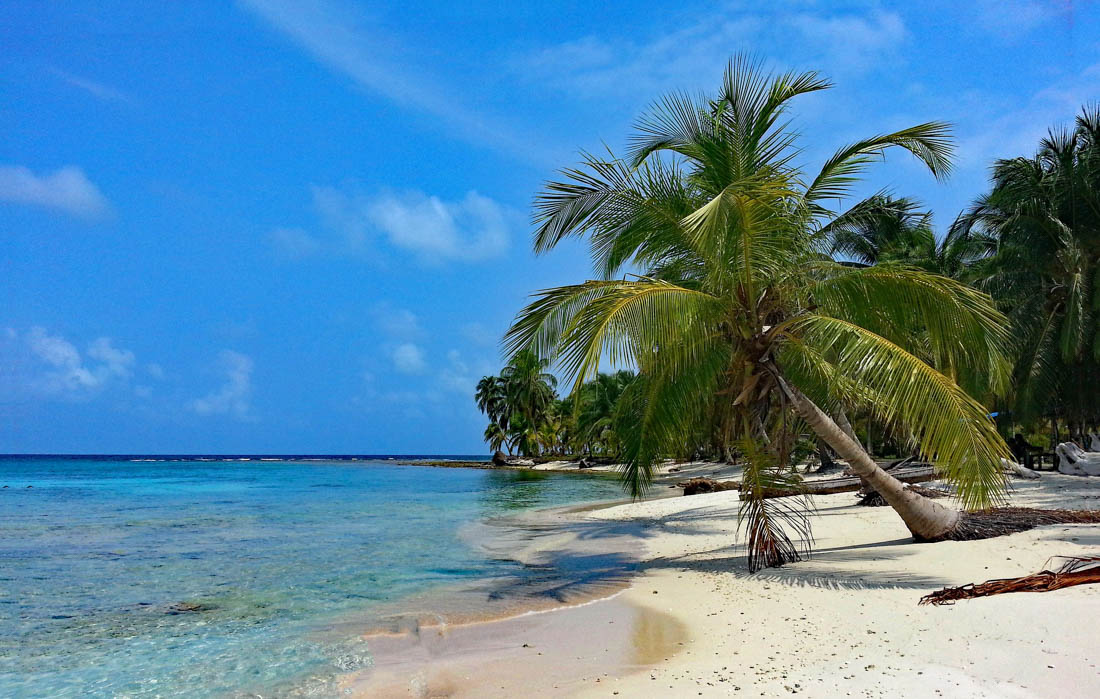
With over 50 hostels in the country, Panama is somewhat popular with backpackers. On average, hostel prices in Panama are around $14 per night for a dorm. You'll find a variety of hostels around the country, particularly in the more popular backpacker destinations like Panama City and Bocas del Toro. The most expensive hostels are in Bocas del Toro, which cost on average $16 per night. The cheapest hostels are generally found in Boquete with an average price of [HOSTELS_CHEAPEST_1_PRICE] per night.
Here are a few sample prices from popular hostels in Panama.
- $10 for a dorm bed at Hostal Casa Areka in Panama City more details
- $20 for a dorm bed at Bambuda Lodge in Bocas del Toro more details
- $18 for a dorm bed at Bambuda Castle in Boquete more details
When analyzing the price of hotels in Panama , they're slightly more affordable compared to the rest of the world. The average price is $85 per night for a decent hotel room. Keep in mind that places like Boquete are more expensive, averaging around $122 per night. But fear not, there are budget-friendly destinations like David where you can book a room for an average of $64 per night.
Ramada Plaza by Wyndham Panama Punta Pacifica
Tropical suites hotel bocas del toro.

How expensive are sightseeing activities in Panama?
Activities and things to do in Panama can vary in price depending on the type of activity, length, and location. Below are a number of popular activities to give you an idea of what to expect when visiting. Generally, previous travelers have spent $28 per day on sightseeing activities and things to do when visiting.
- The City Safari - A Classic Car Tour of Panama City Viator $ 150
- The City Safari - A Classic Car Tour of Panama City: $150
- Stopover Tour in Panama: City and Canal: $80
- Dirtbike adventure in Boquete (half day): $165
- Private Tour Experience in Panama City: $35
- Guided Colonian Heritage Walking Tour in Panama: $40
- City Tour of Panama City, Panama including the Panama Canal: $135
- Private Guided Tour: Discover El Valle de Anton on E-Bike: $65
- Full Day Private Bird and Nature Sightseeing Tour in Pipe Line : $120
Food in Panama can vary in price depending on the restaurant and food options available. Generally, other travelers have spent $23 on food per person per day. To save money, eat at less expensive restaurants, try street food, or cook your own meals when possible.
- The 'Real' Panamanian Private Food Tour Viator $ 200
- The 'Real' Panamanian Private Food Tour: $200
- 4-Hour Guided Panamanian Cooking Class and Markets Experience: $85
- 10-Recipe Boozy Panamanian Cooking Class : $85
- Panamanian Dinner and Folkloric Show Ticket with Pickup: $60
- Panama: 10-Recipe Boozy Panamanian Cooking Class + Dinner: $85
- Panama Evening Food Tour: $60
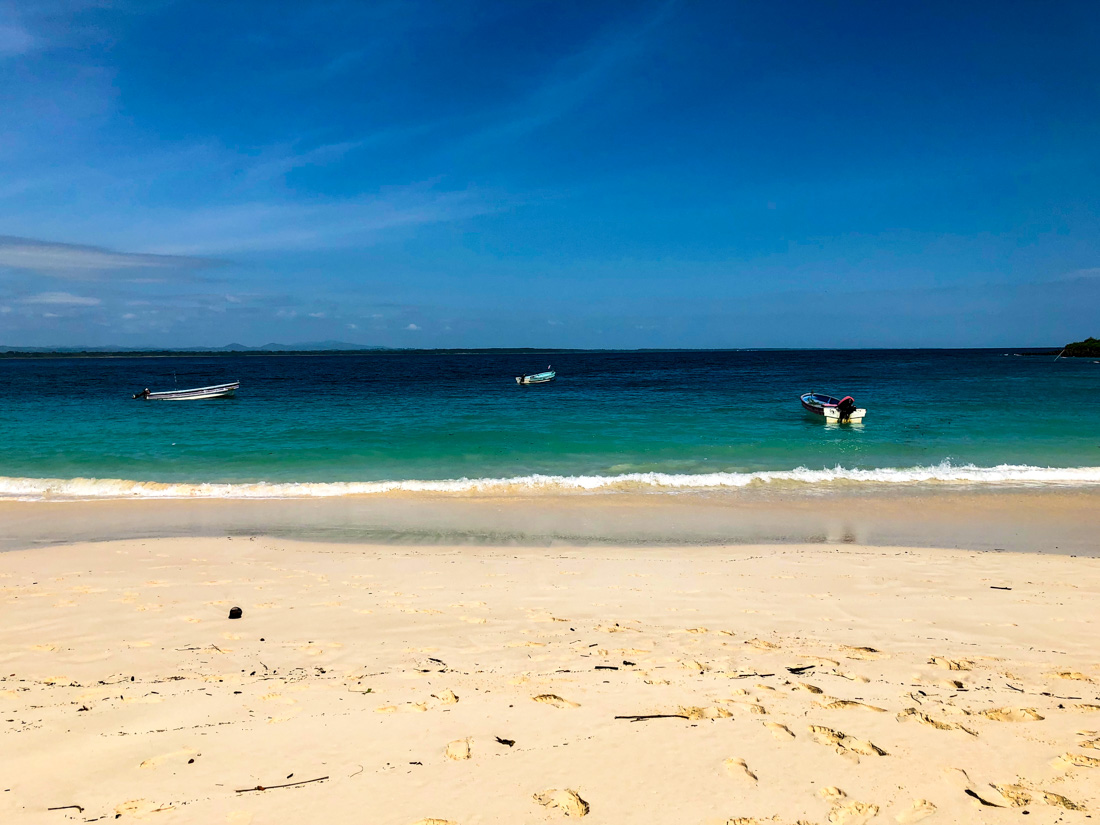
Local transportation in Panama can vary in price depending on the type of transit used. Generally, other travelers have spent $11 on local transportation per person per day. To save money, take public transit whenever possible, as it will almost always be cheaper than a taxi or private driver.
Intercity transportation in Panama can vary widely in price depending on the type of transit used and the distance traveled. Generally, other travelers have spent $21 on intercity transportation per person per day. To save money, take long distance buses or trains instead of flying, as it will almost always be cheaper, even if it's slower.
More for Panama
If you're planning a trip to Panama, check out these other informative travel guides.
We've been gathering travel costs from tens of thousands of actual travelers since 2010, and we use the data to calculate average daily travel costs for destinations around the world. We also systematically analyze the prices of hotels, hostels, and tours from travel providers such as Kayak, HostelWorld, TourRadar, Viator, and others. This combination of expenses from actual travelers, combined with pricing data from major travel companies, gives us a uniqe insight into the overall cost of travel for thousands of cities in countries around the world. You can see more here: How it Works .
- You are welcome to reference or display our travel costs on your website as long as you provide a link back to this page .
- For a basic link, you can copy and paste the HTML link code, or this page's address. Address Link HTML Panama Travel Costs " disabled />
Subscribe to our Newsletter
Coupons and discounts! Travel tips!

Some of the links on this website are sponsored or affiliate links which help to financially support this site. By clicking the link and making a purchase, we may receive a small commission, but this does not affect the price of your purchase.
- Privacy / Terms of Use
- Activities, Day Trips, Things To Do, and Excursions
Guide to Traveling in Panama
TripSavvy / Anna Haines
Panama is so much more than its famed canal . The country’s curvy, narrow land mass serves as a physical—and cultural—land bridge between North and South America. But despite its global significance, Panama is often overlooked by tourists.
While Panama is more expensive than the rest of Central American countries, its natural beauty is unsurpassed. Imagine hundreds of idyllic, deserted islands scattered through warm seas ; densely forested wilderness; creatures as incredible as those in Dr. Seuss’s most imaginative books. Panama’s skinny isthmus holds all this, and much more.
Where Should I Go?
Panama City is one of the most cosmopolitan, culturally distinct, and enjoyable capital cities in all of Central America. Modern commercial buildings blend with cobbled streets and Spanish colonial architecture of centuries past. West of the capital lies the Panama Canal, the legendary feat of humankind that unites two entire oceans.
Panama’s most striking and popular archipelagos are Bocas del Toro and the San Blas Islands in the Caribbean, and the Pearl Islands in the Pacific. The Pearl Islands were featured on a season of the reality TV show, Survivor. The San Blas islands are noteworthy for being populated by the Kuna Indians—remarkable artisans. Book a long-term room on a major island (specifically, Bocas Town in Bocas del Toro, and Contadora in the Pearl Islands), and use it as a base to explore Panama’s hundreds of remote islands and islets.
Other worthwhile destinations are Boquete in the Chiriqui Province, an ecotourist’s dream in the southeast featuring volcanoes, waterfalls, and even the elusive quetzal; Boquete, a quaint town overflowing with flowers; and the Anton Valley, the largest inhabited dormant volcano in the world.
What Will I See?
Docked against Costa Rica in the northwest and Colombia in the southeast, Panama’s mountains, forests and oceans boast an exceptional biodiversity. In fact, the animal species of this unique country are as varied as any region in the world. Panama is home to 900 bird species —- more than the entire land mass of North America!
Those interested in experiencing true rainforest can visit the Soberania National Park, just 25 miles north of Panama City. The Bastimentos Marine National Park in Bocas del Toro offers some of the best diving and snorkeling in Central America.
Darien is one of the most dangerous areas in Panama, but also one of the most fascinating. The Pan-American highway, which stretches from Alaska to Argentina, is broken only at the Darien Gap -— the rainforest in Darien is impenetrable. Travel to Darien is not recommended, but if you insist, book an experienced guide.
How Do I Get There and Around?
As in every Central American country , local buses — often garishly painted American school buses — are the least expensive mode of transport in Panama. Destinations like Colón, Panama City, and David are also served by larger and more comfortable express buses. Outside more populated areas, paved roads can be rare. In those cases (like venturing to Bocas del Toro, for example), booking a seat on a small aircraft is the preferable option.
To travel to Costa Rica in the northwest, you can either book a plane from Panama City or an air-conditioned Ticabus .
How Much Will I Pay?
Partially because of its use of the United States dollar, Panama is one of the most expensive Central America countries to visit. While rooms usually start at $12-$15 USD a person, travelers can reduce costs by taking advantage of local cafes, markets, and transportation. More affluent travelers will find a pleasing selection of plush resorts, especially among Panama’s islands.
When Should I Go?
Panama’s rainy season usually between June and November, with rainfall much higher on the Pacific side of the country.
In Panama, Holy Week (the week of Easter) is similar to Semana Santa in Guatemala , with colorful religious processions and festivities. In February or March, Panama celebrates Carnaval, a boisterous nationwide fiesta most notable for its lively water fights. Visit Kuna Yala in February to see the grand Independence Day celebration of the indigenous Kuna people. Book a room early during any holiday, and be prepared to pay extra.
How Safe Will I Be?
In the larger cities of Panama, such as Panama City and Colon, extreme caution should be taken at night. Passports must be worn on your person at all times—carry it, along with important documents and large sums of money—in an underclothes money belt. Keep an eye out for helpful Tourist Police with white armbands.
In the thickly forested, far southeast region of Darien (which borders Colombia), guerillas and drug traffickers remain a real threat, and while this area is still visited by intrepid travelers, we don’t recommend travel there without an experienced guide.
While traveler’s diarrhea is the ailment you’ll most likely experience (and you can reduce your risk by drinking bottled water and peeling all fruit), vaccinations for Hepatitis A and B, Typhoid, and Yellow Fever are recommended for all travelers to Panama. Make sure you take prophylaxis against mosquito-borne Malaria , especially in rural regions—see MD Travel Health for more specific information. Like Costa Rica, Panama is also a popular destination for “health tourism”, or traveling abroad for inexpensive medical services.
Edited by Marina K. Villatoro
How to Travel From San José to Bocas del Toro by Bus, Plane, and Car
Plan a Panama Vacation on a Budget
Backpacking in Panama: Where to Go and What to See
How to See Panama City and the Panama Canal on a Budget
The 6 Most Popular Islands in Panama
Where to Go in 2022: The Most Exciting Destinations to Explore This Year
Beautiful Beaches of Panama
The Best Costa Rica Honeymoon Destinations
Your Trip to Costa Rica: The Complete Guide
The Best Shopping Locations in Panama
9 Very Adventurous Things to Do in Costa Rica
Top Caribbean Ecotourism Destinations
The 19 Best Beaches in Costa Rica
Central America Border Crossings
The Best Countries in the World for Adventurous Travelers
Poas Volcano National Park: The Complete Guide
Winter is here! Check out the winter wonderlands at these 5 amazing winter destinations in Montana
- Travel Destinations
- Central & South America
The Cost Of Traveling Panama: Budgets, Ways To Save, & More
Published: November 10, 2023
Modified: December 28, 2023
by Lesly Slavin
- Budget Travel
- Travel Guide
Introduction
Are you dreaming of exploring the vibrant culture, stunning natural beauty, and rich history of Panama? Before packing your bags, it’s important to have a solid understanding of the costs associated with traveling in this captivating Central American country. From accommodation and transportation to food and activities, being aware of the average expenses will help you plan your budget accordingly and make the most of your time in Panama.
Panama offers a diverse range of experiences, from exploring the historic streets of Panama City to relaxing on picturesque beaches and trekking through lush rainforests. Whether you’re on a shoestring budget or can afford to splurge a little, there are options to suit every traveler’s needs.
In this article, we will delve into the average costs of traveling in Panama, including accommodation, transportation, food and drink, and sightseeing and activities. We’ll also share money-saving tips to help you stretch your budget further and provide sample budgets for different types of travelers.
By understanding the costs and having a clear budget in mind, you can make informed decisions and plan an unforgettable trip to Panama without breaking the bank.
Average Costs of Traveling Panama
When it comes to budgeting for your trip to Panama, it’s important to have a rough estimate of the average costs you can expect. Keep in mind that these prices can vary depending on the season, location, and your personal preferences.
Accommodation: The cost of accommodation in Panama can range from budget-friendly options to luxurious resorts. On average, you can expect to pay around $30-50 USD per night for a mid-range hotel or hostel in popular tourist destinations. If you’re looking for more upscale accommodations, prices can go up to $100 USD or more per night.
Transportation: Getting around Panama is relatively affordable. Public transportation options such as buses are a popular and inexpensive way to travel between cities and towns. The cost of a bus ticket can range from $1-10 USD, depending on the distance. Taxis are also widely available, with fares starting at around $3 USD for short trips.
Food and Drink: Panama offers a diverse culinary scene, with a range of options to suit all budgets. If you stick to local eateries and street food stalls, you can enjoy a delicious meal for around $5-10 USD. Dining at mid-range restaurants will cost you roughly $15-25 USD per person. Keep in mind that prices may be higher in touristy areas.
Sightseeing and Activities: Exploring the natural wonders and cultural sites of Panama is a must. Entrance fees to national parks and attractions can vary, but on average, expect to pay around $10-20 USD per person. Guided tours and adventure activities like zip-lining or boat trips may have higher price tags, ranging from $30-100 USD depending on the activity and duration.
It’s worth noting that Panama uses the US dollar as its official currency, which means you won’t have to worry about currency exchange rates.
Keep in mind that these are just average costs, and your actual expenses may vary based on your travel style and preferences. It’s always a good idea to research specific destinations, check prices online, and consider any additional costs such as travel insurance or souvenirs.
Accommodation Options and Prices
When it comes to finding a place to stay in Panama, you’ll have a variety of options to choose from. Whether you’re a budget traveler looking for affordable hostels or a luxury seeker in search of high-end hotels, Panama has something to cater to every traveler’s needs.
Hostels: Hostels are a great option for budget travelers and those looking to meet fellow travelers. Prices for dormitory-style rooms in hostels can range from $10-20 USD per night, depending on the location and facilities offered. Many hostels also have private rooms available, which offer more privacy at a slightly higher cost.
Mid-Range Hotels: If you prefer more comfort and privacy, mid-range hotels are a popular choice. These hotels typically offer clean and comfortable rooms with amenities such as air conditioning, Wi-Fi, and private bathrooms. Prices for mid-range hotels in popular tourist areas can range from $30-50 USD per night.
Luxury Resorts: For those seeking a luxurious experience in Panama, there are several high-end resorts and boutique hotels to choose from. These accommodations offer top-notch facilities, stunning views, and impeccable service. Prices for luxury resorts can range from $100 USD upwards per night.
In addition to traditional accommodation options, Panama also offers unique and alternative lodging experiences. You can find eco-lodges nestled in the rainforest, beachfront bungalows, and even accommodations in indigenous villages, allowing you to immerse yourself in local culture and nature.
When researching and booking accommodation, it’s important to consider factors such as location, amenities, and reviews. Booking platforms like Booking.com, Airbnb, and Hostelworld are popular choices for finding and comparing accommodation options in Panama.
It’s also worth noting that prices can fluctuate depending on the time of year and demand. During peak tourist seasons, prices for accommodation may be higher, so it’s advisable to book in advance to secure the best deals.
Overall, Panama offers a wide range of accommodation options to suit various budgets and preferences. Whether you’re looking to save money or indulge in luxury, you’ll find plenty of choices to make your stay in Panama comfortable and enjoyable.
Transportation Costs in Panama
Getting around in Panama is relatively easy and affordable, thanks to the country’s well-developed transportation system. Whether you’re exploring the bustling cities or venturing into the picturesque countryside, you’ll find various transportation options to suit your needs.
Public Buses: Public buses are the most common and economical mode of transportation in Panama. You can find buses that connect major cities, towns, and even remote areas. The cost of a bus ticket can vary depending on the distance, but on average, you can expect to pay around $1-10 USD. The buses are generally comfortable and equipped with air conditioning, making them a popular choice for budget-conscious travelers.
Taxis: Taxis are readily available in Panama and are a convenient way to get around, especially for short distances or when you have luggage. Taxis typically have a starting fare of about $3 USD, with additional charges based on the distance traveled. It’s important to negotiate the fare or ask the driver to turn on the meter at the beginning of the ride to avoid any confusion or overcharging.
Metro: Panama City has a modern metro system, which is a fast and efficient way to navigate the city. The metro network connects various areas of the city, including popular tourist spots. Each metro ride costs just $0.35 USD, making it an affordable option for getting around the capital.
Rental Cars: If you prefer more independence and flexibility, renting a car is a viable option in Panama. Renting a car allows you to explore remote areas at your own pace. Prices for rental cars vary depending on the vehicle type, rental duration, and insurance. It’s advisable to book in advance and compare prices from different rental companies to secure the best deal.
Domestic Flights: If you’re planning to cover long distances or visit the remote islands of San Blas or Bocas del Toro, domestic flights are a convenient option. Domestic flights in Panama are relatively affordable, and prices can vary depending on the destination and time of booking. Airlines like Air Panama and Copa Airlines offer regular domestic flight services across the country.
When traveling within cities or tourist areas, walking or cycling can also be enjoyable options, providing you with the opportunity to explore at a slower pace and take in the surroundings.
It’s important to factor in transportation costs when budgeting for your trip to Panama. If you plan to rely on public transportation and choose budget-friendly options, you can save significantly on transportation expenses while still enjoying all that Panama has to offer.
Food and Drink Expenses
One of the great joys of traveling in Panama is indulging in the delicious and diverse local cuisine. From delectable street food to upscale dining, the country offers a wide range of options to tantalize your taste buds. When it comes to food and drink expenses, Panama caters to various budgets and culinary preferences.
Local Eateries and Street Food: For budget travelers or those looking for an authentic local experience, exploring local eateries and street food stalls is a must. You can find traditional Panamanian dishes such as empanadas, ceviche, and hearty rice and bean-based meals at affordable prices. Meals at local eateries typically range from $5-10 USD per person, making them a great option for inexpensive and delicious dining.
Mid-Range Restaurants: If you’re looking for a more diverse dining experience or craving international cuisine, mid-range restaurants are a great choice. These establishments offer a range of options, including seafood, grilled meats, pasta, and more. Prices at mid-range restaurants can range from $15-25 USD per person, depending on the location and menu selection.
Upscale Dining: For those seeking a culinary adventure or celebrating a special occasion, Panama offers a variety of upscale dining options. Fine-dining restaurants, rooftop bars, and waterfront establishments offer exquisite meals with stunning views and impeccable service. Prices at upscale restaurants can start from $25 USD per person and can vary significantly based on the venue and menu.
In addition to meals, it’s important to budget for drinks as well. Panamanian beers, such as Balboa and Atlas, are popular and affordable choices, with prices ranging from $1-3 USD per bottle. Imported beers and cocktails in bars and upscale establishments can cost slightly more. It’s worth noting that happy hours and drink specials are common, offering discounts on selected beverages during certain times of the day.
When it comes to budgeting for food and drinks, it’s helpful to keep a few tips in mind. Check out local markets and supermarkets for fresh produce and snacks, which can help lower your food expenses. Additionally, trying local street food is not only a pocket-friendly option but also a great way to immerse yourself in the vibrant culture of Panama.
Remember, prices can vary depending on the location and type of establishment. Popular tourist areas and upscale dining venues may have higher prices compared to local neighborhoods. By exploring a range of dining options and being mindful of your budget, you can savor the flavors of Panama without breaking the bank.
Sightseeing and Activities Costs
Panama is a treasure trove of natural wonders, cultural landmarks, and exciting activities. From exploring the Panama Canal and historic sites to venturing into lush rainforests and relaxing on stunning beaches, there is something for everyone. However, it’s important to consider the costs associated with sightseeing and activities when planning your trip to Panama.
National Parks and Attractions: Panama boasts several national parks and natural reserves that showcase the country’s biodiversity. Entrance fees for national parks can range from $10-20 USD per person, depending on the location and facilities. Popular attractions, such as the Miraflores Locks at the Panama Canal or historical sites like Casco Viejo, may have separate admission fees. It’s advisable to research and plan your visits in advance to understand any additional costs.
Guided Tours: For a more immersive experience, guided tours are a popular choice in Panama. Whether it’s a city tour, a hike through the rainforest, or a boat trip to explore the archipelagos, guided tours offer insights and knowledge about the destinations. Prices for guided tours can vary depending on the duration, activities included, and group size. On average, expect to pay around $30-100 USD per person for guided tours.
Water Activities: With its stunning coastline and crystal-clear waters, Panama offers a plethora of water activities. Snorkeling, diving, kayaking, and boat tours are popular options for exploring the marine life and picturesque islands. Prices for water activities can range from $30-100 USD, depending on the duration, equipment provided, and the level of expertise required.
Cultural Experiences: Immerse yourself in Panama’s rich cultural heritage by participating in cultural experiences and workshops. Learn traditional dance, visit indigenous communities, or take part in local cooking classes. Prices for cultural experiences can vary depending on the activity and duration, ranging from $20-50 USD per person.
It’s important to note that some activities and attractions may offer discounted rates for students, seniors, or group bookings. It’s advisable to inquire about any available discounts when planning your visits.
When budgeting for sightseeing and activities, it’s important to prioritize your interests and allocate funds accordingly. Researching and comparing prices for tours and activities can help you find the best deals and make the most of your budget. Remember to plan your itinerary wisely to ensure you have enough time for each activity and to avoid any last-minute rush.
Exploring the sights and engaging in activities is an integral part of experiencing Panama’s beauty and culture. By considering the costs associated with sightseeing and activities, you can plan and budget effectively to make the most of your time in this captivating country.
Money-Saving Tips for Traveling Panama
Traveling in Panama doesn’t have to break the bank. With a few savvy strategies, you can make your budget stretch further and save money while still enjoying all that this beautiful country has to offer. Here are some money-saving tips to help you make the most of your trip:
- Eat like a local: One of the best ways to save money on food is to eat at local eateries and street food stalls. Not only is the food delicious, but it’s also budget-friendly. Explore the local markets and try traditional dishes, such as ceviche or empanadas, for an authentic taste of Panama without splurging.
- Stay in budget accommodations: Panama offers a range of affordable accommodation options, from budget-friendly hostels to guesthouses and mid-range hotels. Consider staying in cheaper areas or exploring alternative lodging options like eco-lodges or homestays to save on accommodation costs.
- Use public transportation: Public buses are a cost-effective way to get around Panama. They are affordable and well-connected, making them a convenient option for exploring cities and towns. Taxis can add up quickly, so reserve them for shorter distances or when you have luggage.
- Avoid peak tourist seasons: Prices for flights, accommodation, and attractions tend to be higher during peak tourist seasons. Consider traveling during shoulder seasons or off-peak times to take advantage of lower prices and fewer crowds.
- Plan and book in advance: Research and book activities, tours, and accommodation in advance to secure the best deals. Many attractions offer discounted rates for online bookings, and booking early can help you avoid last-minute price increases.
- Carry a reusable water bottle: Instead of buying bottled water, carry a reusable water bottle and refill it throughout the day. Panama has clean and safe tap water, so you can save money and reduce plastic waste by using a refillable bottle.
- Take advantage of free activities: Panama offers many free or low-cost activities that allow you to experience the country’s beauty and culture without spending a fortune. Explore local parks, visit free museums, or simply take a stroll along the waterfront to enjoy the scenery.
- Be mindful of your spending: Set a daily budget and track your expenses to ensure you stay within your limits. Resist the temptation to make impulsive purchases and consider the value and necessity of each expenditure.
By implementing these money-saving tips, you can make your trip to Panama more affordable without compromising on unforgettable experiences. Remember to strike a balance between sticking to your budget and allowing yourself to indulge in some of Panama’s unique offerings.
Sample Budgets for Different Types of Travelers
Here are some sample budgets to give you an idea of the average daily expenses for different types of travelers in Panama. Keep in mind that these budgets are estimates and can vary depending on your travel style, preferences, and the season in which you visit:
- Budget Traveler: For budget-conscious travelers, Panama can be an affordable destination. A daily budget of $40-60 USD can cover a stay in a budget hostel or guesthouse, meals at local eateries and street food stalls, and public transportation for getting around. This budget allows for visits to national parks and attractions, but additional costs may apply for guided tours and activities.
- Mid-Range Traveler: Travelers who prefer a bit more comfort and privacy can expect to spend around $80-120 USD per day. This budget includes accommodation in mid-range hotels, meals at local restaurants, some guided tours and activities, and transportation costs. It allows for a more varied dining experience and the flexibility to explore a range of attractions and enjoy a few upscale experiences.
- Luxury Traveler: For those looking to indulge in luxury and have a higher budget, Panama offers upscale accommodations, fine-dining experiences, and exclusive activities. A daily budget of $150-300 USD or more can provide a stay in high-end resorts, gourmet meals at upscale restaurants, private guided tours, and transportation via taxis or car rentals. This budget allows for a more lavish experience, including spa treatments, premium experiences, and additional leisure activities.
It’s important to note that these budgets are just estimates, and your actual expenses may vary based on your personal preferences, travel style, and the duration of your stay. It’s always a good idea to research specific costs, check prices online, and adjust your budget accordingly.
Regardless of your budget, Panama offers a range of experiences that can cater to different types of travelers. With careful planning and budgeting, you can make the most of your trip and create unforgettable memories in this fascinating country.
Traveling in Panama is a captivating experience that offers a blend of rich history, diverse landscapes, and warm hospitality. By understanding the average costs associated with accommodation, transportation, food, activities, and sightseeing, you can effectively plan your budget and make the most of your time in this beautiful country.
Panama provides a range of options for every type of traveler, from budget-friendly accommodations and local eateries to luxurious resorts and upscale dining experiences. By being mindful of your spending and utilizing money-saving tips, you can stretch your budget and optimize your travel experiences.
Whether you’re exploring the bustling streets of Panama City, traversing the Panama Canal, or venturing into the lush rainforests and stunning coastlines, there are countless adventures awaiting you in Panama. By allocating your funds wisely and considering sample budgets offered for different traveler types, you can tailor your trip to suit your preferences and create unforgettable memories.
Researching in advance and booking tours, activities, and accommodations ahead of time can help you secure the best deals and avoid any last-minute price increases. Additionally, being open to trying local street food, utilizing public transportation, and taking advantage of free attractions can further enhance your experience while keeping costs down.
Remember that these budgets and tips are merely guidelines, and your actual expenses may vary. It’s important to personalize your budget based on your priorities, travel style, and preferences. No matter what your budget may be, Panama offers a wealth of opportunities for exploration, adventure, and cultural immersion.
So, pack your bags, embrace the vibrancy of Panama, and embark on an unforgettable journey that combines affordability, natural beauty, and cultural richness. From budget accommodations to luxurious indulgences, Panama has something to offer every traveler, ensuring a memorable experience that fits your budget.

- Privacy Overview
- Strictly Necessary Cookies
This website uses cookies so that we can provide you with the best user experience possible. Cookie information is stored in your browser and performs functions such as recognising you when you return to our website and helping our team to understand which sections of the website you find most interesting and useful.
Strictly Necessary Cookie should be enabled at all times so that we can save your preferences for cookie settings.
If you disable this cookie, we will not be able to save your preferences. This means that every time you visit this website you will need to enable or disable cookies again.
12 tips for visiting Panama on a budget

Dec 3, 2023 • 7 min read
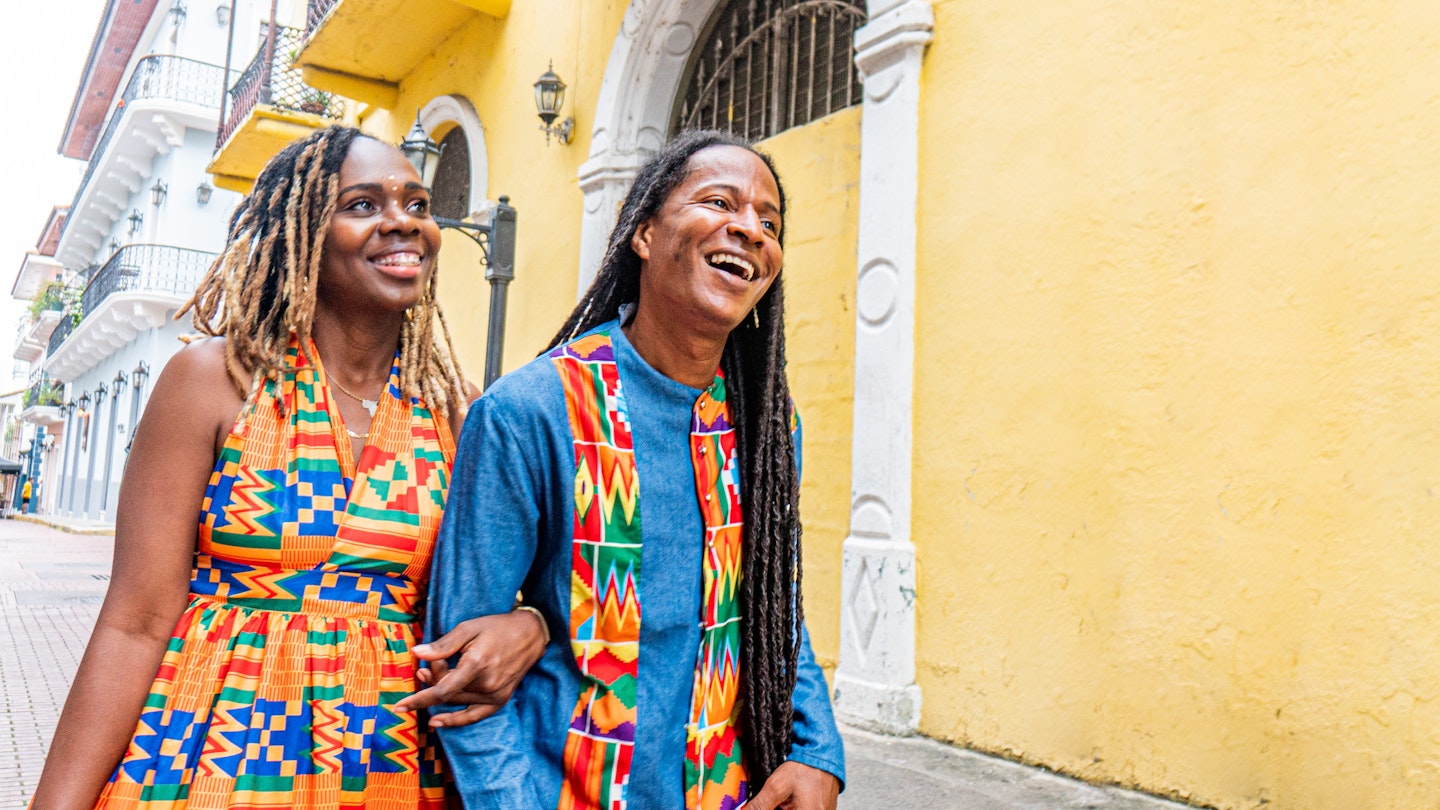
Don't pay over the odds – here's how to visit Panama on a budget © Jeremy Poland / Getty Images
Panama spoils its visitors with cosmopolitan cities, incredible stretches of sand and wild countryside that is a gift to adventure tourism.
But this doesn’t mean it’s only for those with deep pockets – prices here are cheaper than traveling in Europe, Canada or the United States, but a little pricier than Guatemala, Honduras or El Salvador.
So is Panama expensive? Well, it's not the most expensive country in Central America – that prize goes to Costa Rica , closely followed by Belize – but thrifty travelers will need to plan carefully and sacrifice a few home comforts to keep costs down.
Fortunately, there are plenty of ways to save on food, lodgings, transport and excursions. The beaches are free, and there’s no shortage of outdoor activities in Panama’s extensive and affordable national parks . Here are our top tips for making your Panama adventure bueno, bonito y barato (good, nice and cheap).
Daily costs
- Dorm bed in a hostel: US$10 to US$20
- Basic hotel room for two: US$30 to US$50
- Self-catering apartment (including Airbnb): US$70 to US$100+
- Public transportation in Panama City: US$0.25 to US$0.35, or US$1.25 for toll roads
- Coffee: US$1 to US$3
- Lunch for two: US$10 to US$20
- Dinner for two: US$20 to US$40
- Beer at the bar: US$1 to US$3
- Average daily cost: US$70 to US$90
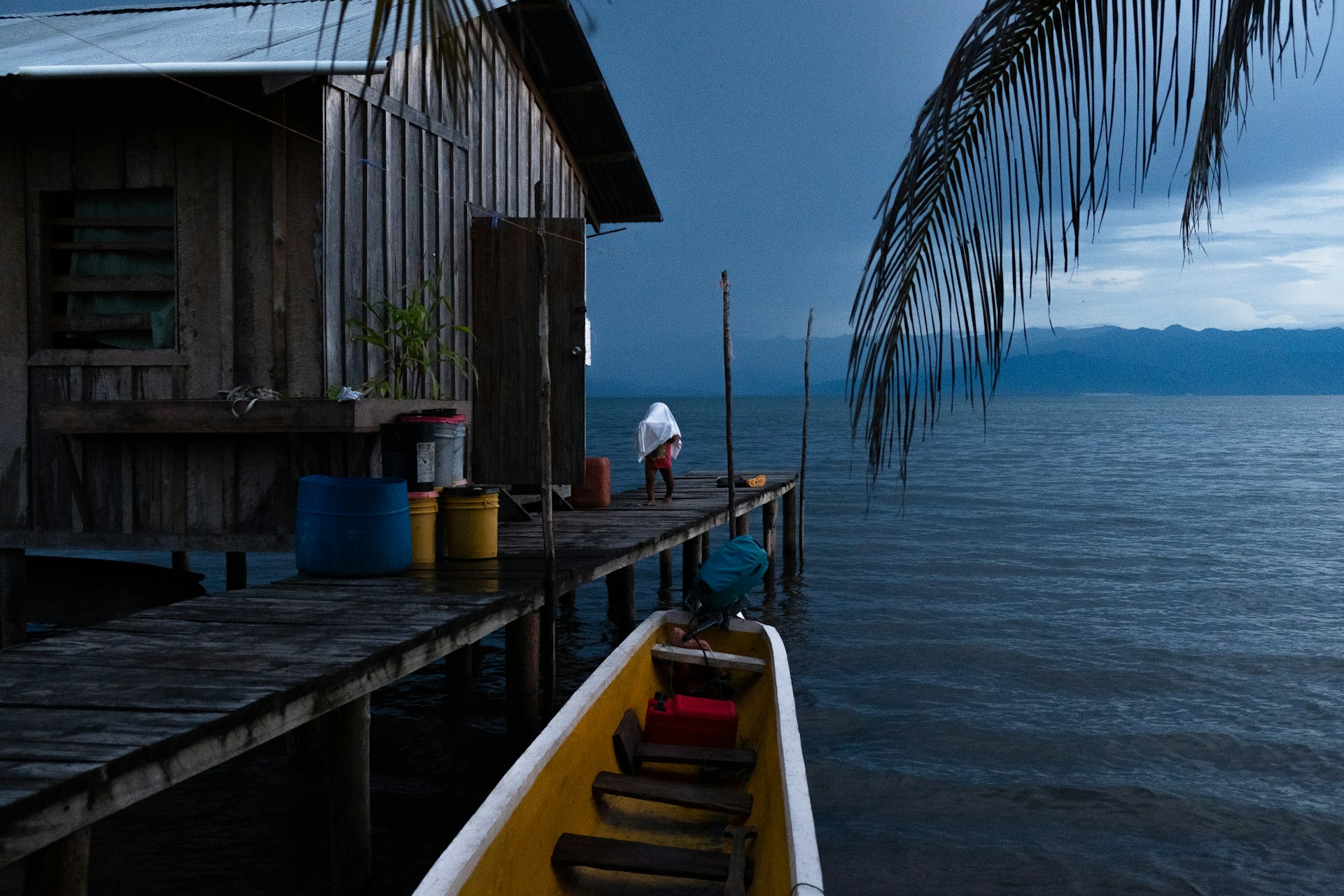
1. Visit during the wet season to start saving money
The cheapest time to visit Panama is during the wet season which runs from May to November. Hotel rates can drop 10% to 30% compared to the high season (December to April) but you will have to contend with bursts of torrential rain.
Most downpours are quite brief, erupting in the afternoon and clearing an hour or two later, but there can be days of continuous rainfall. Certain activities, such as birdwatching and white-water rafting, are much better in the rainy season.
Bocas del Toro has a highly changeable microclimate; the province is frequently wet when the rest of the country is dry, and sometimes vice versa. International flights to Panama are usually cheapest towards the end of the wet season, from September to November.
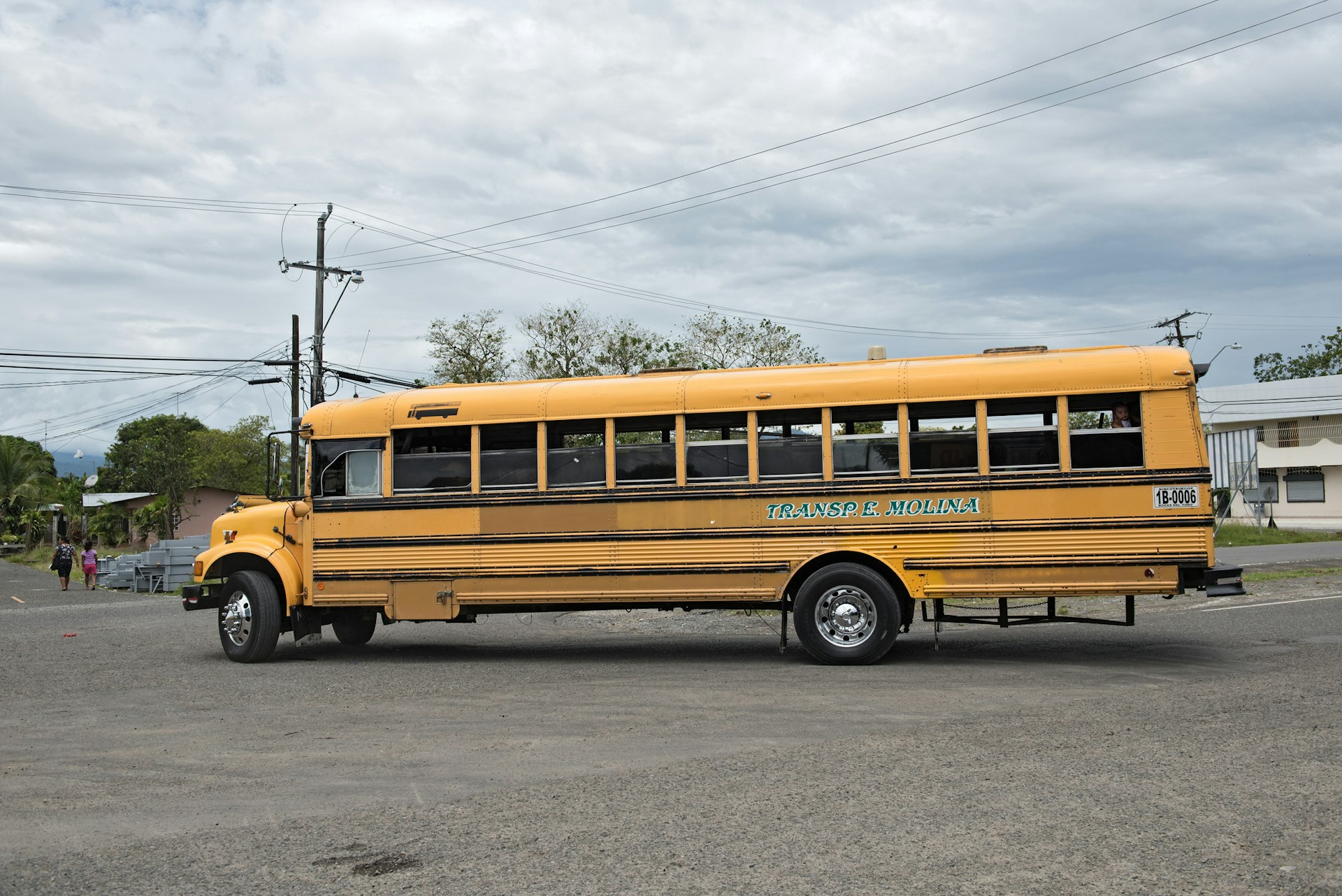
2. If you only intend to visit western Panama, consider flying into Costa Rica
Many of Panama’s best attractions lay in the western provinces of Chiriquí and Bocas del Toro. If you don’t intend to travel beyond these areas, it’s sometimes (but not always) more economical to fly to San José in Costa Rica and then travel overland to Panama, especially if you're a backpacker.
The direct bus from San José to the international border at Paso Canoas (on the edge of Chiriquí) is an hour or so longer than the bus from Panama City to David (the second-largest city in Panama and capital of Chiriquí). You’ll have to pass through immigration, which can be time-consuming.
The journey to Chiriquí is quicker and cheaper if you use intercity buses rather than international ones like Ticabus, which typically means longer commutes and higher prices, but it doesn’t stop in David.
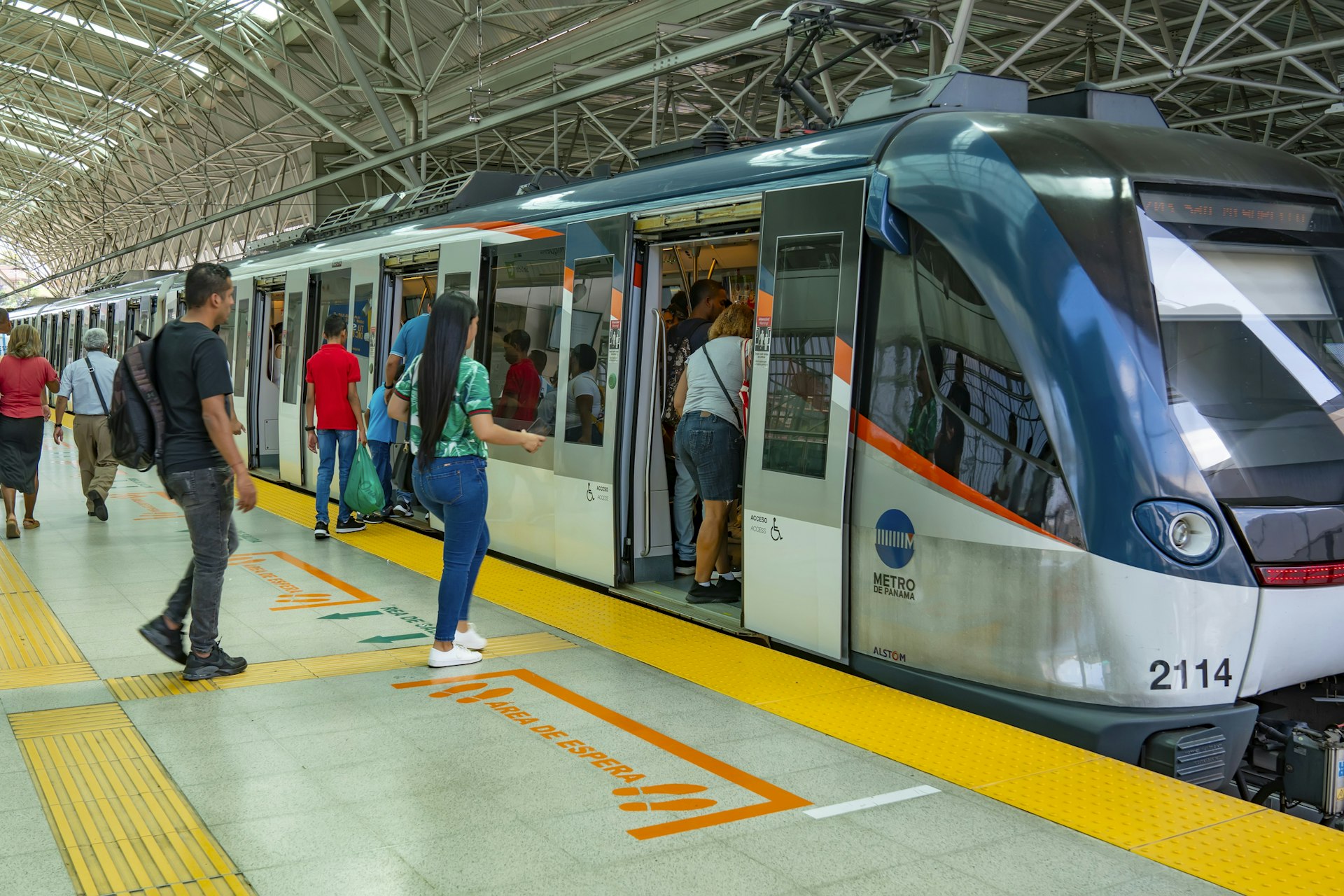
3. Take the bus to and from Tocumen airport
Official taxis from Tocumen International Airport to downtown Panama City can set you back US$30 to US$40. A shared taxi is cheaper at around US$15 per person if traveling solo.
The cheapest option is the Metrobus . A bus ticket with them costs no more than US$1.25. Before leaving the airport, be sure to buy a rechargeable Metrocard, suitable for use on all Metro buses and trains. They cost US$5 and are good to go with US$3 of fares included.
Note you will need a Metrocard to access long-distance services at Albrook bus station.

4. If you’re single, stay in a hostel dorm
Single travelers will find the cheapest digs in hostel dorms. Depending on location, you'll get a few amenities and clean quarters for US$10 to US$20 per night.
Hostels are widespread in the major tourist hubs of Panama City, Boquete and Bocas del Toro, but less common elsewhere. They are a great way to meet fellow travelers too.
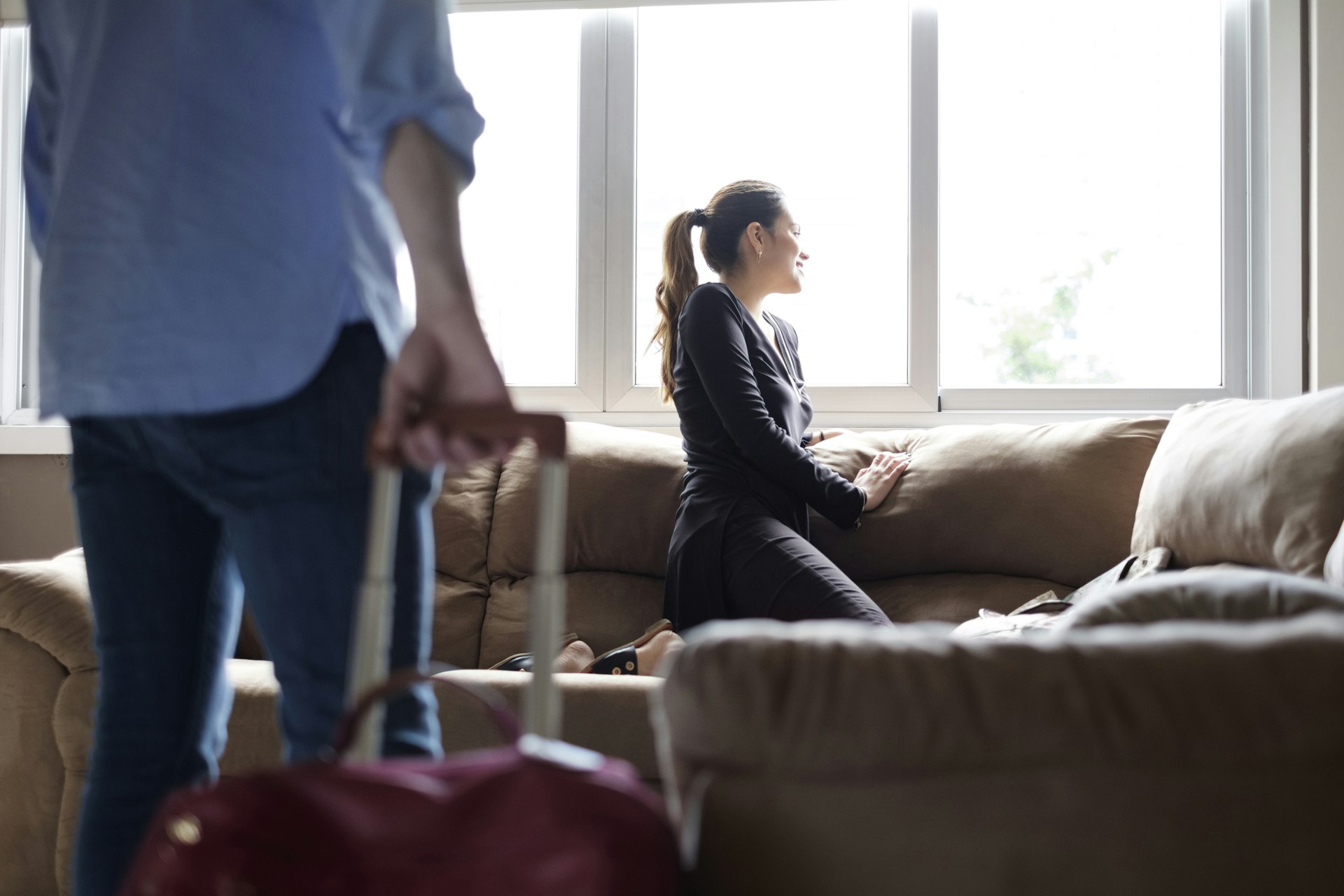
5. Couples and groups should stay in hotels
A private room in a cheap hotel is roughly the same price as a private room in a hostel, around US$30 to US$50 per night. In terms of comfort, however, hotel rooms are usually superior.
The cheaper, more spartan rooms have fans and cold-water-only showers (air-conditioning can bump up prices by US$15 to US$20).
Some hotels have a handful of extremely basic, ultra-cheap rooms (US$15 to US$20) with a shared bathroom; ask reception if they have algo más económico (something cheaper) or un quarto con baño compartido (a room with a shared bathroom).
Of course, the main disadvantage of using hotels as cheap accommodation is that you won’t have a shared kitchen at your disposal.
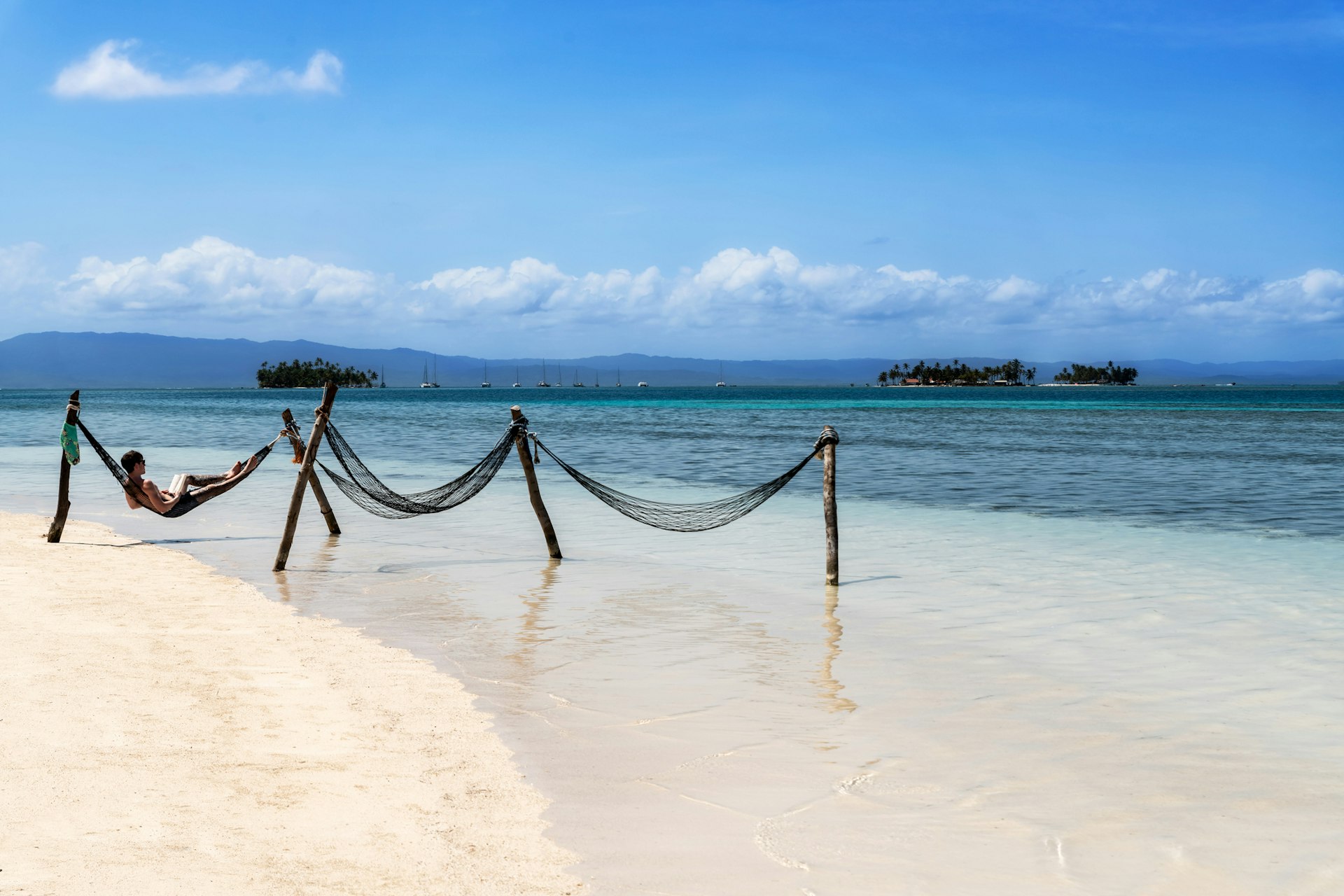
6. If you really want to save, sleep in a hammock
If you don’t mind roughing it or sleeping in a homestay, a hammock is the cheapest option. Hostels typically charge US$2 to US$5 per night for a pitch, and you may find locals prepared to offer the same service from their family home.
Use mosquito repellent, nets and/or insecticide coils, especially in the wet season. A warm blanket or sleeping bag may be necessary as temperatures can drop markedly at night, even in the steamy lowlands. Note it’s unsafe to sleep overnight in public spaces, including the beach.
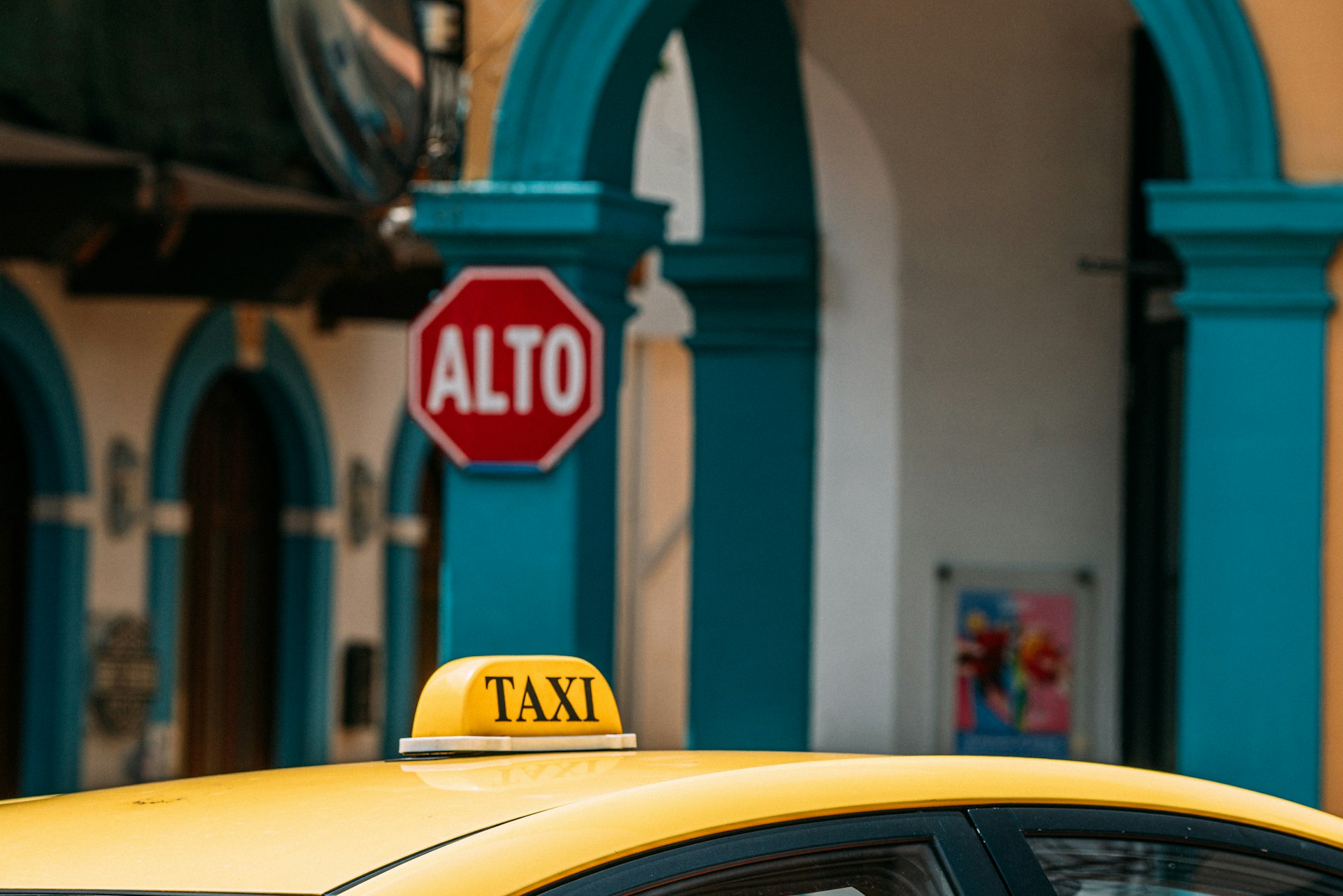
7. Use public transportation in Panama City
Panama City taxis are notoriously wily. Drivers overcharging is the norm, especially if you appear to be foreign. Worse yet, the city is frequently gridlocked, making travel by car slow and inefficient.
To save money and hassle, use Metro buses and trains to get around (US$0.25 to US$0.35 per journey). If you must use taxis, try to agree on a price before getting in. And if your driver turns out to be a good one (many of them are), get their cellphone number for future use.
Avoid tourist taxis and taxis that wait outside hotels. They will definitely overcharge you. In Panama, Uber is usually cheaper and easier than taxis.
8. Opt for buses over domestic flights
Domestic flights are undeniably fast. You can cross the entire country from Panama City to David by plane in about an hour. But with most round-trip fares exceeding US$120, domestic flights are not cheap and carry a hefty carbon footprint too.
Although significantly slower (the same trip from Panama City to David takes seven to nine hours), Panama bus travel is far more economical and environmentally friendly. Catch a ride from the Terminales David-Panamá (TDP) on the Padafront buses.
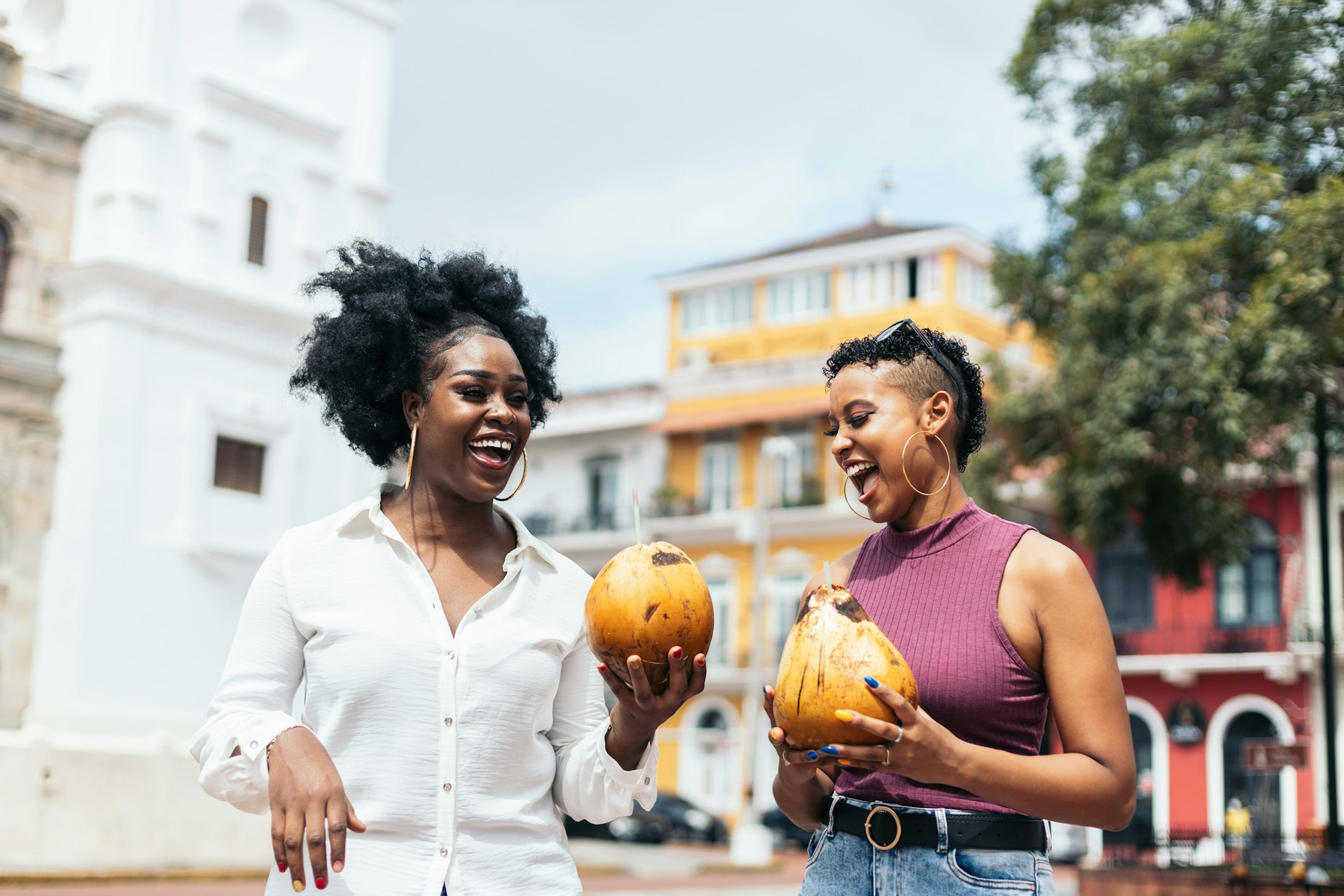
9. Gorge on fruit for breakfast
Fresh fruit in Panama is nutritious, delicious, ubiquitous and cheap. Options include a rainbow array of locally grown produce like pineapples, papayas, avocados, bananas, watermelons and oranges.
Get fruit from street vendors, local markets or supermarkets (a fruit breakfast in a restaurant is relatively poor value). Smoothies are another healthy and economical option.
10. Feast on carbs for lunch
If you intend to eat out a lot, lunch is the most economical meal of the day. Street food is thin on the ground in Panama, but cheap sit-down eateries abound and usually offer inexpensive set menus and/or carb-rich lunch buffets for around US$5 a head.
A typical Panamanian lunch consists of a fatty meat or chicken main with a generous side of rice and beans plus a few slivers of (sometimes sweetened) plantain and a sugary drink. Sadly, vegans and vegetarians are not well-served in Panama.
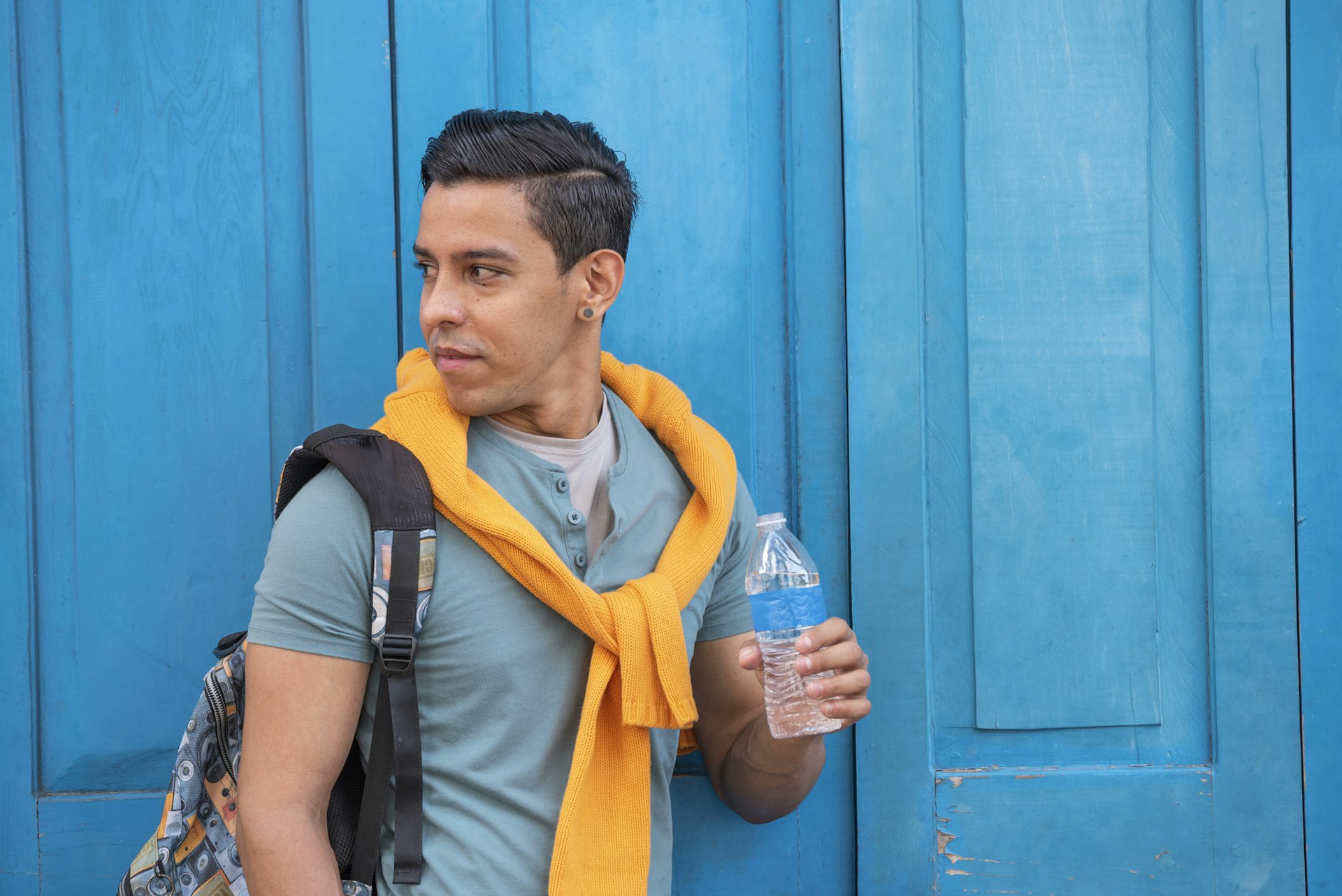
11. You can generally drink the tap water
With the exceptions of Bocas del Toro, Guna Yala and other remote areas, the tap water in Panama is generally safe for consumption. Save on dollars and plastic waste by refilling reusable water bottles at a kitchen faucet.
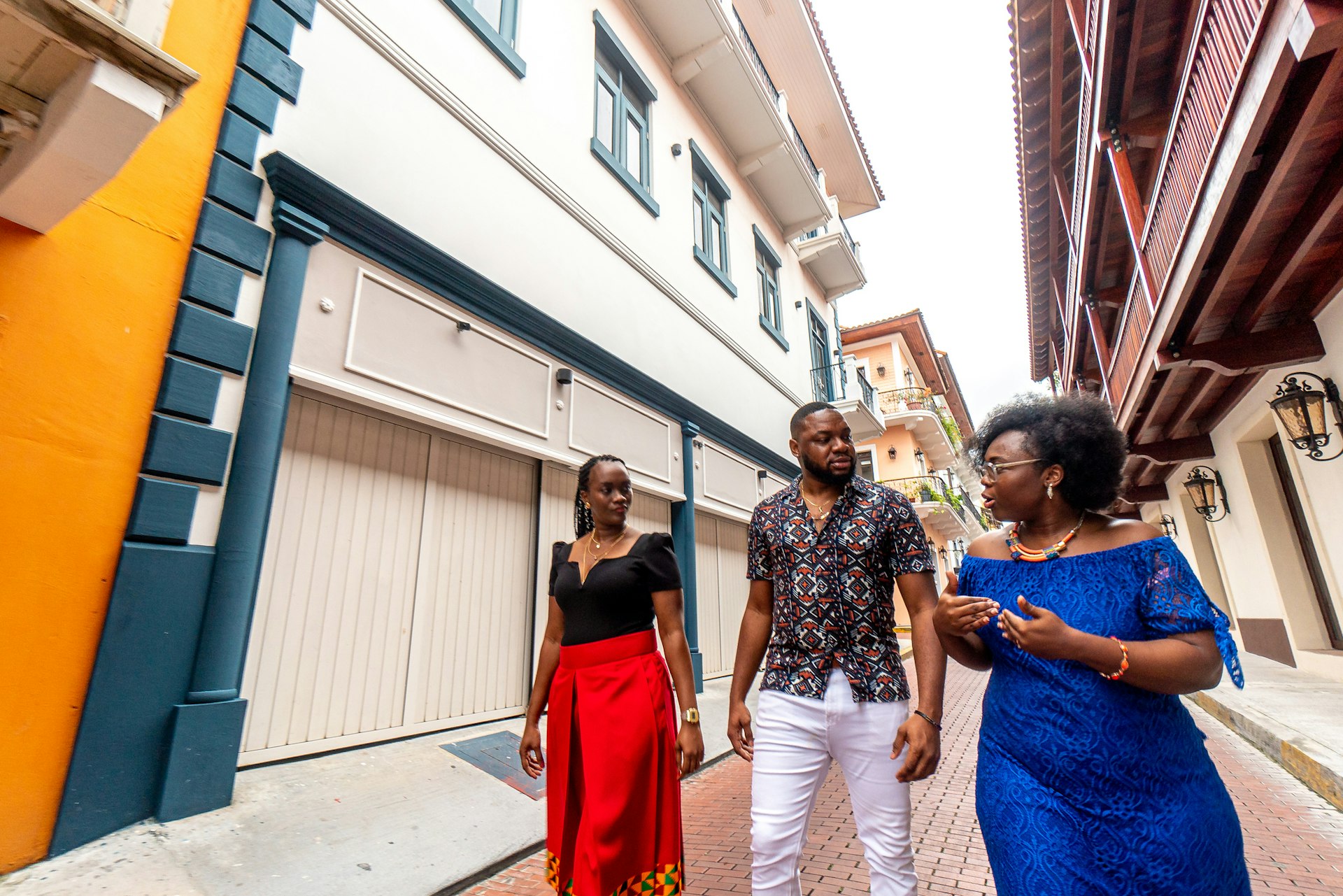
12. Choose guides and excursions carefully
Unless times are very tight, you will want to splurge on one or more tours. If you speak Spanish reasonably well, sourcing your own local guides can work out cheaper than using a tour operator.
It’s best to seek solid recommendations from your hotel or hostel as they typically know where the best daily deals are. Most towns have an office of the National Environment Ministry, Mi Ambiente, and will point you in the right direction.
This article was first published July 2022 and updated December 2023
Explore related stories
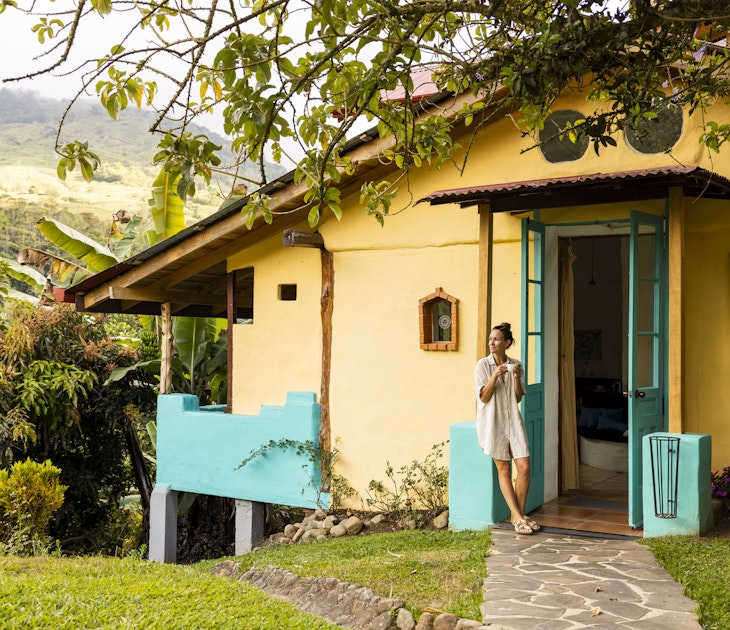
Budget Travel
Sep 3, 2023 • 5 min read
There are plenty of ways for cost-conscious travelers to save some colones– here are ten top tips for traveling on a small budget in Costa Rica.
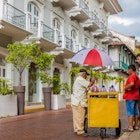
Mar 11, 2023 • 7 min read
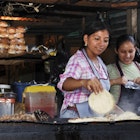
Jun 28, 2022 • 7 min read

Jan 29, 2020 • 9 min read

Oct 28, 2019 • 19 min read
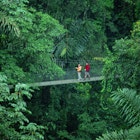
Mar 12, 2024 • 22 min read

Mar 10, 2024 • 8 min read

Feb 19, 2024 • 7 min read
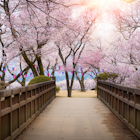
Jan 31, 2024 • 6 min read

Jan 30, 2024 • 9 min read
Nomadic Matt's Travel Site
Travel Better, Cheaper, Longer
Panama City Travel Guide
Last Updated: September 1, 2023

Today, you can find divine food, plenty of shopping, and a vibrant nightlife scene in Panama’s capital. Casco Viejo, the oldest neighborhood of the city, is where you still find the early origins of the city when it served as an important trading hub between the New World and the Old World. Since the crumbling Spanish-colonial buildings of Casco Viejo were renovated in the 2000s, the area has evolved from a crime-ridden no-go neighborhood to Panama’s tourist hot spot.
Admittedly, Panama City doesn’t have a lot to offer in terms of landmarks and tourist sights, but it is a good place to spend a few days enjoying the amenities of a big city. It’s also a good base for visiting the Panama Canal, the rainforest, and nearby Taboga Island.
This guide to Panama City can help you plan your trip, save money, and make the most of your time in this massive capital city!
Table of Contents
- Things to See and Do
- Typical Costs
- Suggested Budget
- Money-Saving Tips
- Where to Stay
- How to Get Around
- How to Stay Safe
- Best Places to Book Your Trip
- Related Blogs on Panama City
Top 5 Things to See and Do in Panama City
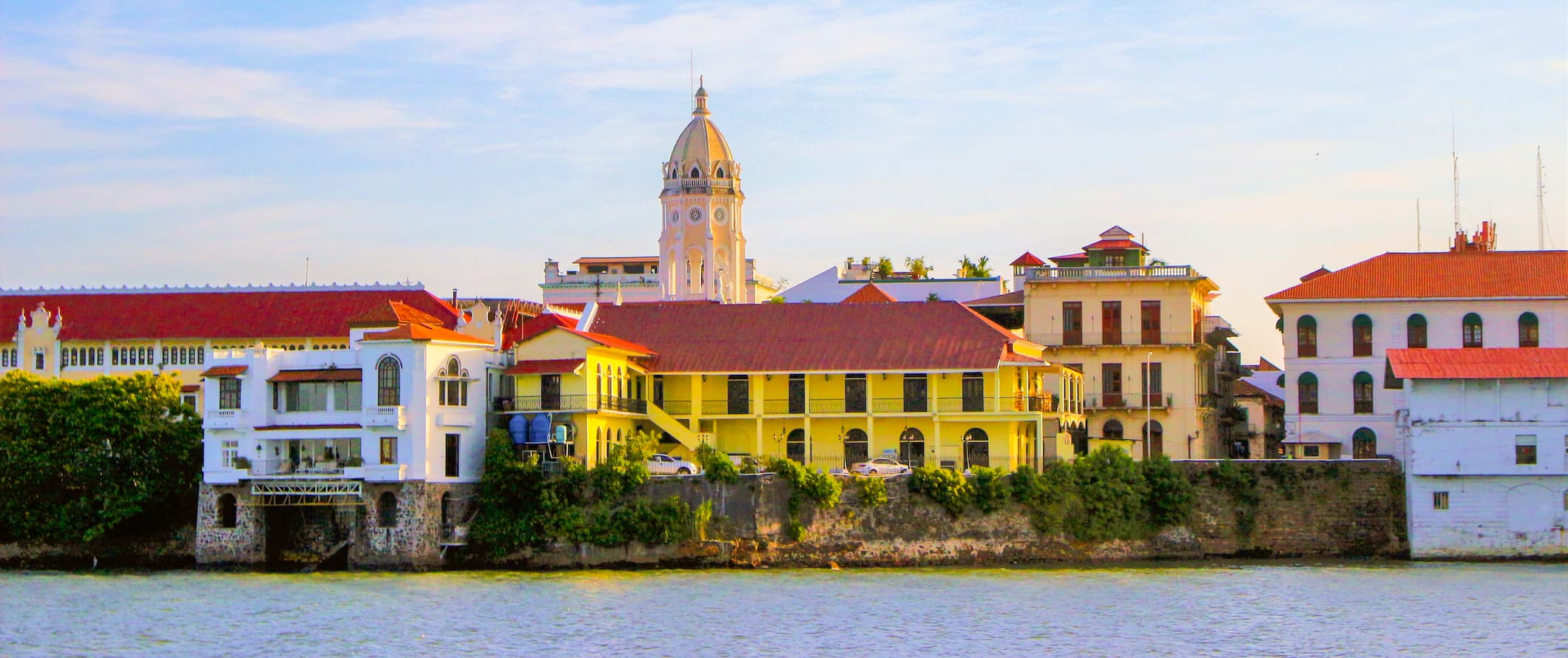
1. Wander Casco Viejo
Casco Viejo, the original Spanish-colonial settlement built in 1671, is a must-do and also a great place to stay if you’d rather not stay in the bustling metropolis part of the city. Everything is walkable in this gorgeous neighborhood that is home to some of the trendiest bars, restaurants, and boutique hotels. Visit the Panama Canal Museum for a bit of history as well as the Museo de la Moda to learn about the unique, vibrant tapestries made by the Guna indigenous people. You can also wander the cobblestone streets and watch the sunset at one of the many rooftop bars. If you’re a coffee fanatic and want to indulge, head to Café Unido.
2. Hang out in Metropolitan Park
The Metropolitan Park is a 575-acre rainforest within the city limits. This beautiful nature sanctuary is home to 227 bird species, 45 mammals, 14 kinds of amphibians, 36 different kinds of snakes, and 284 types of trees. There are 8 kilometers (5 miles) of trails here to enjoy and you can hike up to the top of Cedar Hill for beautiful panoramic views of the city and the Panama Canal. Admission is $4 USD. You can also see 30 different species of butterflies housed on the butterfly farm for an additional $5 USD.
3. See the Panama Canal
One of the 7 Wonders of the Modern World, the Panama Canal is definitely worth checking out if you’re in Panama City. The Miraflores Locks are one of twelve locks along the Panama Canal and the closest to Panama City. The canal took 10 years and over 40,000 laborers to build (over 5,000 of whom died during construction). There is a visitor center with an observation deck and, every time a ship passes through the canal, you’ll hear a detailed explanation of what is happening. Also, Miraflores has an interesting IMAX documentary on the history of the Canal with Morgan Freeman narrating. Admission is $20 USD.
4. Explore Panama Viejo
Panama Viejo (Old Panama) is a UNESCO Cultural World Heritage Site and forms the original part of the city. It was founded in 1519 by Pedrarías Dávila and was the first Spanish settlement on the Pacific Coast of the Americas — and the first planned town in the Western Hemisphere. In 1691, the city was attacked and destroyed by pirate captain Sir Henry Morgan. Despite several attacks, a huge fire, and an earthquake, you can still see some of the ruins of many of the original buildings including the Old Panama Cathedral. The remaining ruins are spread out over 57 acres, including the original cathedral. Admission is $15 USD.
5. Bike along Amador Causeway
Amador Causeway is made up of rocks excavated for the construction of the Panama Canal and connects Panama City with three small islands: Naos, Perico, and Flamenco. The 6-kilometer (4-mile) ultra scenic, colorful boardwalk is popular with cyclists and filled with all kinds of restaurants where you can stop for fresh seafood and take in the views (especially at sunset). You can rent bikes for about $15 USD per day if you want to explore by bike.
Other Things to See and Do in Panama City
1. check out mi pueblito.
This open-air museum is designed to give visitors a glimpse of village life in Panama. You’ll find replicas of colonial and indigenous buildings here and on Fridays and Saturdays they have folklore dance performances. The village is divided into three parts: an indigenous village, a rural village, and an Afro-Antillean village, showing aspects of these three different population groups in Panama. Admission is $3 USD.
2. Admire some colonial art
The Museo de Arte Religioso Colonial in Casco Viejo houses colonial religious art that dates back to the 16th century. Some of the art and artifacts even made it through the attack and sacking of the city by Henry Morgan and his crew in 1671. One of the most interesting pieces is the Arco Chato, a long arch that stood unsupported for hundreds of years (the arch was used to prove that Panama was not earthquake-prone, making it an ideal place for the canal rather than Nicaragua). This is a small museum and admission is only $1 USD, so it’s worth a quick visit.
3. Take a ferry to Taboga Island
Taboga Island is a little island 19 kilometers (12 miles) off the Pacific coast of Panama City. It’s easy to do as a day tour, with return ferries costing $24 USD. The ferries leave from Amador Causeway and the ride takes about 30 minutes. Explore the island’s village, chat with the locals, go on a hike, or just chill on the sandy beach. The beach is not the nicest as the water tends to be polluted but the ocean views towards Panama City and the Panama Canal make up for that.
4. Hike Cerro Ancon
The highest hill in Panama City makes for a great hike. It’s a steep 30-minute incline, but you’ll be rewarded with fantastic views. There are two viewing platforms: one facing historic Casco Viejo, and one facing the newer skyline that’s lined with skyscrapers. Look out for wildlife along the way – you’re likely to see toucans, iguanas, and pacas. A cab ride to the trailhead, which is right by Mi Pueblito, takes about 10 minutes.
5. Marvel at contemporary art
The Museum of Contemporary Art in Panama City features various permanent and temporary exhibits from Panamanian and Latin American artists. With over 700 items in the collection, it offers a comprehensive introduction to Latin American contemporary art. There are often free exhibits that provide an opportunity to hang out with the city’s artsy crowd too. It’s the only contemporary art museum in the entire country. Admission is $5 USD.
6. Take a Spanish course
If you’ve got some time to spend in the city, consider taking a week-long Spanish course. There are a number of schools here that offer programs with one-on-one or small group classes for $230-$250 USD per week. Try the Spanish Panama Language School or Casco Antiguo Spanish School for in-depth lessons that can help you master the language.
7. Learn about Marine Life
Punta Culebra Nature Center is a science and nature center run by the Smithsonian Tropical Research Institute that focuses on marine life. There is also a short nature trail with three-toed sloths, iguanas, and frogs. Explanatory signs are in Spanish and English, making it an educational exhibition that’s interesting for grown-ups and kids alike. Admission is $8 USD.
8. Visit the Biomuseo
The Biodiversity Museum was designed by renowned architect Frank Gehry and it was his first design in Latin America (Gehryd designed the Dancing House in Prague, the AGO in Toronto, and the Disney Concert House in LA) . It’s worth seeing simply for the stunning design, though spending a couple of hours inside the museum is a great way to learn about Panama’s biodiversity. The museum also highlights the natural and cultural history of the country. The Biomuseo has eight galleries for its permanent exhibits, each one covering a different topic. Tickets are $18 USD.
9. Check out the seafood market
Panama’s lively Mercado de Mariscos, the seafood market, is located on the western end of the Cinta Costera, the coastal road that connects Casco Viejo with the newer part of town. The market is divided into two parts: one section is where fresh fish and seafood are sold, and the other section is where you’ll find dozens of no-frills seafood restaurants where you can try some of the fresh catch. Try the local specialty, ceviche, made from raw fish and lemon.
10. Stroll Avenida Central
Avenida Central is the pedestrian walkway where you can soak up the city’s vibe. It’s noisy and fun, with lots of street food vendors and performers, making for some excellent people-watching. Cinta Costera is the city’s waterfront park area where you can enjoy views of the ocean while grabbing an ice cream or some street food as you soak up the pace of the city.
Panama City Travel Costs
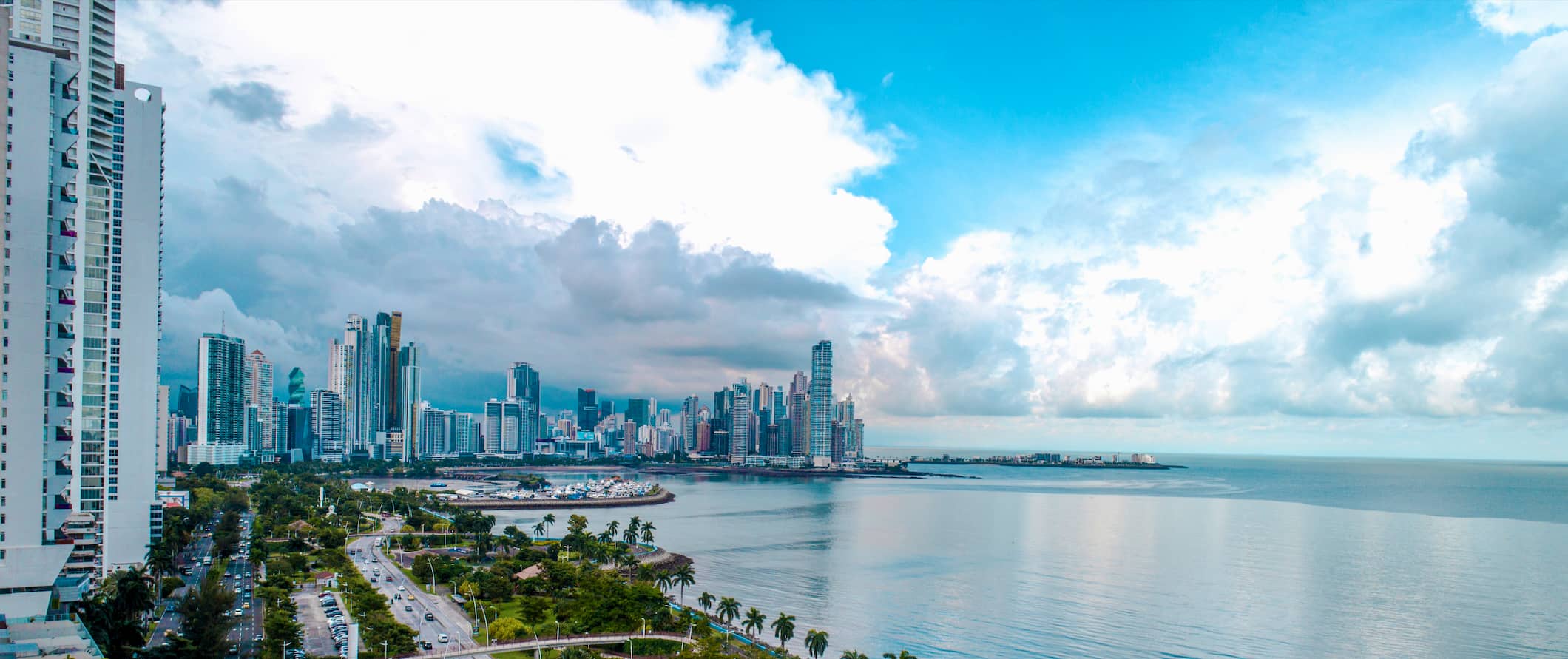
Note: Panama uses both PAB and USD. There’s no real need to carry the local currency, the Panamanian Balboa, unless you’re paying for really small things on the street. For the most part, use USD (which has the same value as PAB).
Hostel prices – Hostels in Panama City are inexpensive, with a night in a hostel dorm costing between $12-30 USD per night for a 6-8-bed dorm. Private rooms start around $22 USD per night for a double room. All hostels offer free Wi-Fi and some offer free breakfast.
Budget hotel prices – For a three-star hotel, prices start at $50 USD per night and go up from there. International hotel chains range from $75-135 USD.
Airbnb is available in the city, with private rooms ranging from $40-60 USD per night and entire apartments starting around $75-100 USD. Bigger apartments accommodating four to six people start at $150 USD per night. Book early otherwise prices can double.
Food – Like its neighbors, Panamanian cuisine features rice, black beans, yuca (a starchy vegetable similar to the potato), plantains, beef, chicken, and seafood. Common dishes include empanadas, chicken and rice, fried fish, and ceviche (a raw fish dish with lemon).
Local food stalls meals will cost around $4-6 USD. For that price, you will get a plate of chicken, rice, and beans — a staple dish in Panama. Western food such as pizza or hamburgers costs around $10-15 USD.
Panama City has the best international food in all of Central America, so take advantage of that while you’re in town. Many of the trendiest restaurants can be found in the Casco Viejo neighborhood, such as the Dining Room, Tantalo (a superb rooftop restaurant and bar atop the Tantalo Hotel), Donde Jose (fine dining Panamanian cuisine) and Casa Casco, which has three great restaurants, a rooftop bar and a nightclub. You’ll also find a number of great restaurants along Amador Causeway.
For a nice meal with wine, expect to pay around $50 USD. There are a lot of stylish, more expensive restaurants in Casco Viejo if you’re looking for something more upscale.
Domestic beer at a bar is around $2.50 USD. Cocktails at one of the popular rooftop bars are around $8-9 USD. A latte/cappuccino costs around $3.50 USD while bottled water is $1 USD.
If you plan on cooking your own food, expect to pay about $35-45 USD per week for groceries like rice, beans, seasonal produce, and some meat or fish.
Backpacking Panama City Suggested Budgets
If you’re backpacking around Panama City, expect to spend about $45 USD per day. This includes staying in a hostel dorm, limiting your drinking, cooking your meals, using public transportation to get around, and doing mostly free and cheap activities like hiking and wandering the Old Town.
On a mid-range budget of around $150 USD per day, you can stay in a private Airbnb, enjoy a few drinks, eat out for a few meals, take the occasional taxi, and do some paid activities like visiting the canal.
On a “luxury” budget of $220 USD per day or more, you can stay in a hotel, eat out for all your meals, drink more, take more taxis, and do whatever tours and activities you want. This is just the ground floor for luxury though. The sky is the limit!
You can use the chart below to get some idea of how much you need to budget daily, depending on your travel style. Keep in mind these are daily averages — some days you’ll spend more, some days you’ll spend less (you might spend less every day). We just want to give you a general idea of how to make your budget. Prices are in USD.
Panama City Travel Guide: Money-Saving Tips
Panama City is a pretty affordable place to visit. Unless you are dining on the higher end of things or staying in a chain hotel, you’re hard pressed to spend a lot of money here. However, there are always extra ways to keep your costs down. Here are the best ways to save money in Panama City:
- Stick to free activities – Most of Panama City’s sights can be visited for free: Casco Viejo, Amador Causeway, a stroll through the fish market and along Cinta Costera, the coastal road that offers stunning views of the bay and the freighters entering the Panama Canal.
- Eat at local food stands – Meals at local food stalls cost less than $5 USD. You’ll get rice, chicken, beans, and maybe another side plus a drink. Don’t expect a super tasty meal, but it is enough to fill you up.
- Avoid taxis – Buses are cheap and go everywhere in the city. Take the bus and save your money!
- Bring a water bottle – The tap water here is generally safe to drink so bring a reusable water bottle. LifeStraw is my go-to choice as it has a built-in filter to ensure your water is always clean and safe.
- Stick to beer – Beer is cheaper than other kinds of alcohol so if you want to drink, stick to beer.
- Save money on rideshares – Uber is cheaper than taxis and is the best way to get around if you don’t want to wait for a bus or pay for a taxi.
- Carry small change – Most taxis and small shops won’t accept larger bills for small purchases so make sure you carry change.
- Avoid hot water – Get rooms with cold-water showers. Hot water always costs a lot more. It’s so hot here anyway, you’ll hardly ever want hot water. Even I got used to cold-water showers, and usually, I get cranky without hot water!
- Stay with a local – There are tons of Couchsurfing hosts (and lots of community events) here, making this a great city to Couchsurf in. Pick up some tips and save some money by staying with a local!
Where to Stay in Panama City
Panama City has plenty of fun, affordable hostels. Here are my favorite places to stay:
- Hostel Mamallena
- Magnolia Inn
- Hostal Casa Areka
How to Get Around Panama City
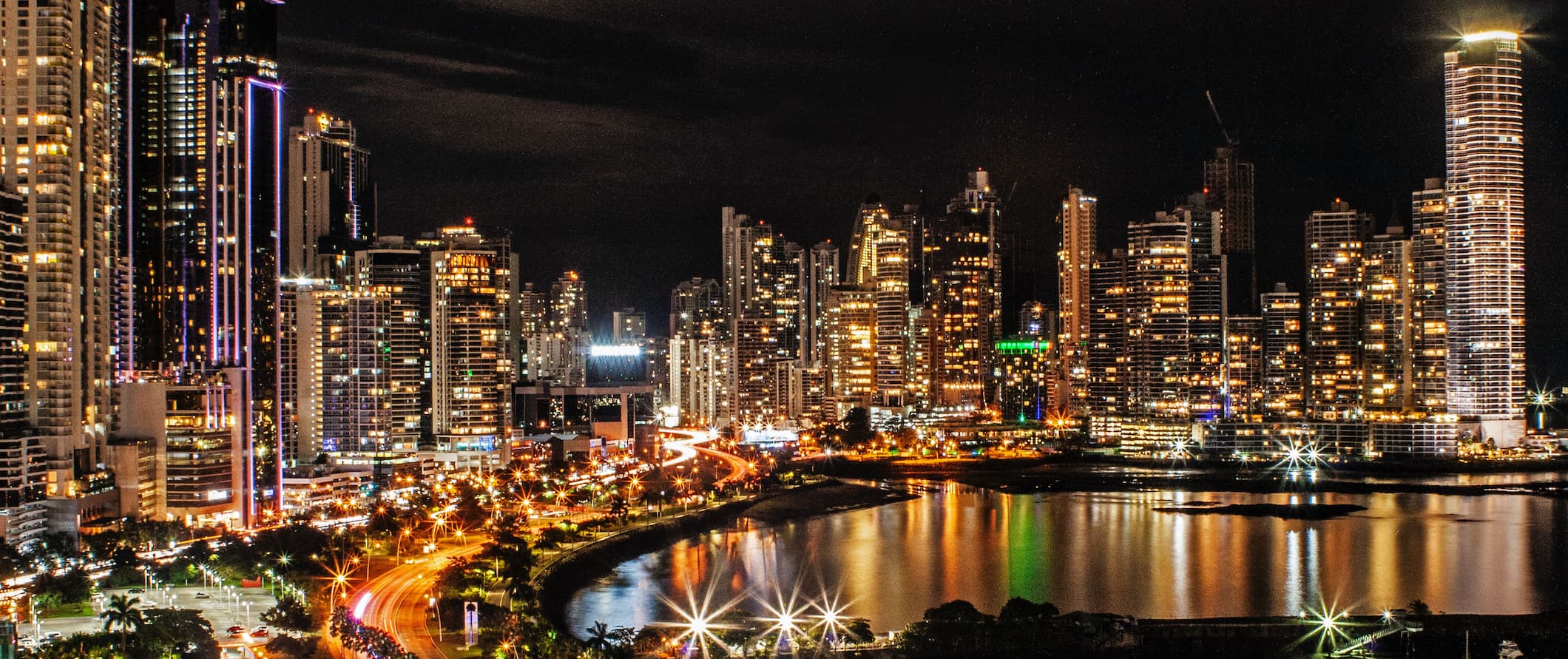
Public transportation – It is easy to travel by city bus between Amador Causeway and Casco Viejo – buses have their destination written on the front. The main bus terminal is inside the Albrook Shopping Mall. If you think you’ll be taking the bus a lot, pick up a metro card at Albrook Terminal. The metro card is $2 USD, and then you can add however much money you think you’ll need. Since a bus ride is only $0.35 USD, adding only one dollar will get you four rides.
To recharge the card, you have to find a supermarket that offers this service (look for a sign that says Venta de Tarjeta y Recarga ) or head to Albrook Terminal. You’ll be able to navigate the bus system with the help of Google Maps.
Panama City’s first metro line opened in 2014 (the first metro system in all of Central America), but it is pretty irrelevant for tourists since it’s far away from the beaches and interesting sights. A ride is only $0.35 USD. The metro runs from 6am-10pm daily (even on holidays), with 14 different stations, running north and south and passing through the city center.
Bicycle – Cycling in Panama City is possible, but not very safe since Panama is known for its notorious drivers who often speed. The only places you can safely cycle at are Amador Causeway (where you’ll find several bike rental places) and Cinta Costera, the coastal beltway that links modern Panama City with the historic Casco Viejo neighborhood. You can rent bikes for about $15 USD per day.
Taxi – Taxis are cheap in Panama City. Be careful though: Panamanian cab drivers are known to try to rip off foreigners. Make sure to always negotiate your fare before the start of the trip, since the taxis don’t use meters. Note that taxis are cash only.
Ridesharing – Uber is available in Panama City and is cheaper than taxis, so stick to using it if you need a ride.
Car rental – You won’t need a car to get around the city, however, they can be helpful for exploring the region if you plan on leaving the city. Rentals can be found for as little as $25 USD per day for a multi-day rental. Most rental agencies require drivers to be at least 25, though some will accept drivers at 21 if they have a credit card.
When to Go to Panama City
Panama City has a short dry season between January and May, which is when there is little rain and you’ll get to enjoy clear blue skies. But since Panama is located only nine degrees north of the equator, temperatures are pretty consistent year-round.
The lowland regions, including Panama City, are always hot and humid. Daytime temperatures average 30-33°C (86-91°F), nighttime temperatures are around 21-23°C (69-73°F).
Rainy season in Panama lasts from mid-April to mid-December, but it usually only rains from late afternoon into the night, which means mornings and early afternoons can still be enjoyed. The rainiest month is November, and July and August are the months that see the least rain during the wet season. If you visit during the rainy season, pack a rain jacket and an umbrella.
You never have to deal with peak season crowds in Panama City – it never feels crowded, unless you run into a cruise ship tour group on one of the days a cruise ship docks in the port. The good news is that the cruise ships docking here are relatively small and that they usually depart at 5pm.
The only times of year that accommodation can book up (especially affordable hotels/Airbnbs) are during holidays and in February during Carnaval. If you’re planning to visit Panama City in February, look up the dates of Carnaval to avoid crazy crowds and inflated prices.
How to Stay Safe in Panama City
Panama City is generally safe but pickpocketing can occur, especially on city buses. Always be vigilant and don’t carry more cash on you than you’re planning to spend. Leave your passport and credit cards (other than the one you may be using) back at the hostel/hotel, don’t carry valuables in your purse.
Bag snatching also happens in Panama City – both on the street and in restaurants — so don’t leave your bag sitting on the chair next to you.
If you go out in Casco Viejo at night, but your hotel is in the newer part of Panama City, take a taxi or Uber back to your hotel. The El Chorillo neighborhood, adjacent to Casco Viejo, can be a bit sketchy after dark.
When taking taxis, negotiate the fare before the trip, or you might get ripped off. There have been frequent reports by foreigners about being overcharged for cab rides. If you don’t want to communicate with the driver or you don’t have cash on you, call an Uber via the app.
Keep an eye out for common scams against tourists , such as fake ATMs, taxis that don’t use a meter, and questionable tour operators.
Solo female travelers should generally feel safe here, however, the standard precautions apply (never leave your drink unattended at the bar, never walk home alone intoxicated, etc.).
If you experience an emergency, dial 911.
Always trust your gut instinct. Avoid isolated areas at night, and be aware of your surroundings at all times. Make copies of your personal documents, including your passport and ID, before you leave on your trip.
The most important piece of advice I can offer is to purchase good travel insurance. Travel insurance will protect you against illness, injury, theft, and cancellations. It’s comprehensive protection in case anything goes wrong. I never go on a trip without it as I’ve had to use it many times in the past.
Panama City Travel Guide: The Best Booking Resources
These are my favorite companies to use when I travel. They consistently have the best deals, offer world-class customer service and great value, and overall, are better than their competitors. They are the companies I use the most and are always the starting point in my search for travel deals.
- Skyscanner – Skyscanner is my favorite flight search engine. They search small websites and budget airlines that larger search sites tend to miss. They are hands down the number one place to start.
- Hostelworld – This is the best hostel accommodation site out there with the largest inventory, best search interface, and widest availability.
- Booking.com – The best all around booking site that constantly provides the cheapest and lowest rates. They have the widest selection of budget accommodation. In all my tests, they’ve always had the cheapest rates out of all the booking websites.
- Get Your Guide – Get Your Guide is a huge online marketplace for tours and excursions. They have tons of tour options available in cities all around the world, including everything from cooking classes, walking tours, street art lessons, and more!
- SafetyWing – Safety Wing offers convenient and affordable plans tailored to digital nomads and long-term travelers. They have cheap monthly plans, great customer service, and an easy-to-use claims process that makes it perfect for those on the road.
- LifeStraw – My go-to company for reusable water bottles with built-in filters so you can ensure your drinking water is always clean and safe.
- Unbound Merino – They make lightweight, durable, easy-to-clean travel clothing.
- Top Travel Credit Cards – Points are the best way to cut down travel expenses. Here’s my favorite point earning credit cards so you can get free travel!
Panama City Travel Guide: Related Articles
Want more info? Check out all the articles I’ve written on backpacking/traveling Central America and continue planning your trip:

Do You Need Travel Insurance for Costa Rica?

The Best Tour Companies in Costa Rica
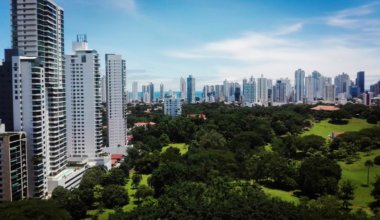
The 6 Best Hostels in Panama City, Panama
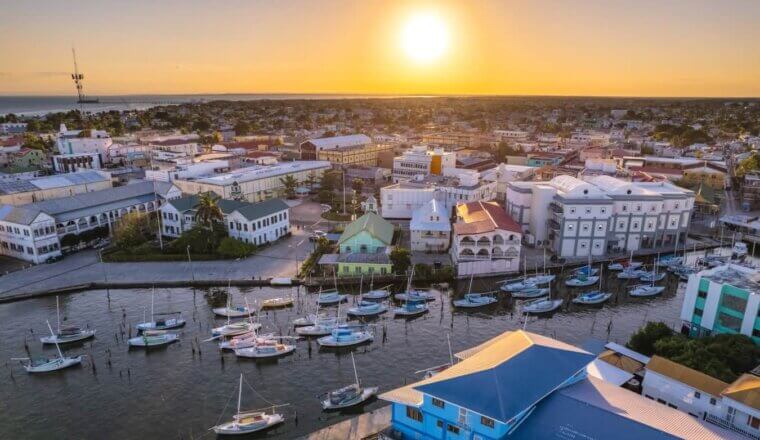
Is Belize Safe to Visit?

Is Central America Safe to Visit?
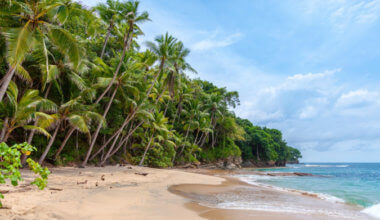
How to Get Around Central America on a Budget
Get my best stuff sent straight to you, pin it on pinterest.
- Where To Stay
- Transportation
- Booking Resources
- Related Blogs

- Australia & New Zealand
- Middle East
- North & Central America
- South America
- Travel Tips
- Travel Gear
- Packing Tips
- Travel Jobs
- Digital Nomad Visas
Select Page

Travel Panama On A Budget – Where to Stay, What to Eat
Posted by Anna Vichnevetskaia | Nov 7, 2020 | South America

The cost of living in Panama has been steadily increasing over the past decade, and today is at its highest thus far. With the recent change in the minimum wage, which went up almost 30%, everyone is raising prices to be able to continue making profits. And that means that travel costs have increased as well.
What used to be the perfect backpacking destination like neighbouring Colombia , Panama is a place you now need to think about your budget and how to make it stretch. But as a country of many contrasts, there are some tips and tricks that will help you save your pennies and you can travel Panama low cost.
Accommodation
Of course, Panama offers plenty of hostels as a cheap option for budget travellers. These vary in quality and price, but generally speaking, you can safely choose among the top 3 options in any given city and the hostel should be reasonably comfortable and clean. Some of the top “chain” hostels in the country are the beachfront Selina Hostels and the more off-the-beaten-path travel-oriented Mamallena. They will typically also be able to arrange transfers and tours at good prices.
For those who prefer to avoid hostels, want a little more privacy, or don't want to stay with partying backpackers (most of these cater to a party crowd), have a couple of other options. Airbnb has tons of listings for rooms and apartments in a wide variety of price ranges.
This is a particularly good option for Panama City, where cheap hotels are hard to come by and many apartment buildings offer nice facilities like a pool and gym, for a fraction of the cost of a chain hotel. Keep in mind that renting for under 30 days is not technically legal in Panama , not that this is typically enforced, but it's good to know.
The other budget alternative is the smaller hotels, which may or may not be listed online. This means that arriving in a town and looking for accommodation on the spot can sometimes be a good idea. That said, it's probably not ideal in Panama City, since hotels are scattered around the city – but you can try Lemon Inn, Magnolia Inn and Albrook Inn.
In this case, keep in mind high season dates, such as weekends in the summer (December to March), Carnival, Christmas and the Fiestas Patrias in November, during which literally the whole country seems to go to the countryside and everything is booked out.
Transportation
Tocumen international airport.
Most people will arrive in Panama City and then continue onwards to other destinations. The airport is the first place where you are likely to leave a hefty sum of money for a taxi if you don't know the tricks. Airport taxis do not have a standard rate and will try to charge you crazy rates starting at $30 (OK rate) and up to $50 (not OK rate).
The alternative is to take an Uber out of the airport , which will typically cost under $20 to go anywhere in the city. There is free WiFi at Tocumen International, so you should be able to use that to order a car. They won't pick you up at the entrance though, you'll need to go to the parking lot instead. Just a note that the government recently introduced new rules for Uber drivers (Jan 2018) and the supply may be somewhat limited at the moment – but hopefully will get back to normal soon.
Alternatively, you can take a bus – walk out of the airport to the main road, which takes about 5 minutes, and very carefully cross the street. There should be buses that say Albrook Corredor Sur that cost $1.50 for the express and take you to the centre of the city, from where you can get a cab for under $5 pretty much anywhere you are going.
There are two types of buses – Metrobus, which is the official bus and the so-called piratas. They are both fine, Metrobus is more comfortable and somewhat safer, but you do need a card to get on, so you'll have to find someone who can let you pass and give them the cash.
Getting Around Panama City
As mentioned above, Uber is one of the best ways to get around. Most rides will cost under $5, unless there is surge pricing, and it's safe and convenient – so hopefully they will figure out their situation with the new laws soon. Taxis are OK too, but you need to know how much you are supposed to pay before you get in and negotiate the price ahead of time, otherwise you are very likely to get ripped off.
The absolute cheapest way is to use the bus or the metro, which cost 25 and 35 cents respectively. They are comfortable, air-conditioned and reasonably frequent on most routes.

Travelling Around the Country
Flights are crazy expensive in Panama because there is practically just one airline that flies to the countryside, so if you are on a tight budget, I wouldn't even bother considering flying. Instead, go by bus and purchase the tickets at the bus station.
A pro tip for bus travel is to bring a warm sweater – they turn the A/C on to unbelievably low temperatures and it gets really cold. The only place you won't be able to get to by bus is Kuna Yala , but the hotel or hostel should be able to arrange transportation for about $30 each way.
Budget Eats
Ideally, find a place to stay that either serves breakfast or has a kitchen for you to cook one. If you don't have this option then look for the chicheros. These are street vendors with a little pushcart that sell fried empanadas, chicken, tortillas and sweet fruit juice. Their food is super tasty, but not particularly healthy, so you can also complement your breakfast with some fruit from the market.
Make sure that at some point you find the typical Panamanian breakfast called ojaldas, these are delicious fried bread, usually served with American cheese, hot dogs or minced meat – they are to die for.

Ojaldos – Credit: grainmillwagon
In Panama City, the cheapest lunches are to be had on the street. While there isn't a huge street food scene per se, if you are in an area with lots of offices, there will be vendors selling set lunches for anywhere between $2-5.
Most restaurants will also have set lunches at this time, which tend to be much cheaper than the regular menu. If you are in Casco Viejo, try places like Fonda Lo Que Hay, Nazca and Tantalo for delicious food and good prices. In the countryside, things are just generally cheaper, so it shouldn't be hard to find good prices, but looking for a fonda will typically be the best option for a budget meal.
Budget dinners get a little trickier. For this reason, a good bet is to have a kitchen wherever you are staying, since this will cut your costs significantly – just make sure you go to the local grocery store like Machetazo or Super 99 and avoid the likes of El Rey and Riba Smith.
If a kitchen is not an option, then look for happy hours, they will usually have both drinks and food on special, so that makes for an early dinner. And last, but not least, opt for food trucks, smaller food stalls and pizza places that offer better value than restaurants. Once again, in the countryside, you'll probably find OK options to get local favourite at good prices, such as arroz con pollo and patacones with fried fish.
Where to Go
While Panama may not be a super cheap place to visit anymore, there are definitely some sites that are totally worth the extra budget. For travellers on a budget, Panama City can offer a lot of free activities and a variety of alternatives with some research. The hot destinations like Bocas del Toro and Boquete cater to all sorts of tourists and you can generally get great happy hours and budget accommodation.
Meanwhile, Kuna Yala (or San Blas) is not to be missed and comes with a great price tag – about $150 for 2 nights with transportation, all meals and tours. The countryside remains quite accessible and not expensive, although budget travellers may want to avoid places like Contadora Island, which will definitely break the bank!

As you can see it is perfectly possible to travel Panama on a budget, get out there and enjoy this amazing country.
Share Via Pinterest
If you like this article please use the image below to share it via Pinterest.

About The Author

Anna Vichnevetskaia
Travel is my passion. Not only because it's fun (which it is), but because there is something new to learn in every single place, someone new to meet and a different or unknown to embrace.
Related Posts

6 Essential Apps For Travelling In South America
September 14, 2019

Panama City Travel Guide – Vibrant City In Central America
November 14, 2020

Your Ultimate Guide To Eating In Lima, Peru
May 16, 2020

Best Places in Latin America As Digital Nomad Destinations
May 25, 2019
Recent Posts

Digital Nomad Visa

Top Cities For Digital Nomads Latin America

Pin It on Pinterest
Update April 12, 2024
Information for u.s. citizens in the middle east.
- Travel Advisories |
- Contact Us |
- MyTravelGov |
Find U.S. Embassies & Consulates
Travel.state.gov, congressional liaison, special issuance agency, u.s. passports, international travel, intercountry adoption, international parental child abduction, records and authentications, popular links, travel advisories, mytravelgov, stay connected, legal resources, legal information, info for u.s. law enforcement, replace or certify documents.
Before You Go
Learn About Your Destination
While Abroad
Emergencies
Share this page:
Travel Advisory July 17, 2023
Panama - level 2: exercise increased caution.
Reissued with obsolete COVID-19 page links removed.
Exercise increased caution in Panama due to crime . Some areas have increased risk. Read the entire Travel Advisory.
Do not travel to:
- Parts of the Mosquito Gulf due to crime .
- Parts of the Darién Region due to crime .
Read the country information page for additional information on travel to Panama.
If you decide to travel to Panama:
- Enroll in the Smart Traveler Enrollment Program (STEP) to receive Alerts and make it easier to locate you in an emergency.
- Follow the Department of State on Facebook and Twitter .
- Review the Country Security Report for Panama.
- Prepare a contingency plan for emergency situations. Review the Traveler’s Checklist .
- Visit the CDC page for the latest Travel Health Information related to your travel.
Parts of the "Mosquito Gulf" – Level 4: Do Not Travel
The “Mosquito Gulf” is an extremely remote and inaccessible area along part of the north (Caribbean) coast.
Do not travel within 10 miles of the coastline, from Boca de Rio, Chiriqui to Cocle del Norte. Drug trafficking and other illicit activities occur in this area.
The U.S. government has limited ability to provide emergency services to U.S. citizens in this region as U.S. government personnel must obtain prior approval before traveling there and face additional restrictions before such travel is approved.
Visit our website for Travel to High-Risk Areas .
Parts of the Darién Region – Level 4: Do Not Travel
Do not travel to the following areas of the Darien:
- All areas south of Jaque to Manene to Yaviza to Lajas Blancas cities to the Colombian border
- The city of Lajas Blancas
- The city of El Salto
Criminal elements and drug and human trafficking networks operate in these areas. Police presence and emergency response are extremely limited.
The U.S. government has limited ability to provide emergency services to U.S. citizens in these regions as U.S. government personnel must obtain prior approval before traveling there and face additional restrictions before such travel is approved.
Embassy Messages
View Alerts and Messages Archive
Quick Facts
3 months beyond date of arrival
1 page per stamp
Yellow fever for passengers entering from countries with endemic yellow fever
Embassies and Consulates
U.s. embassy panama.
Avenida Demetrio Basilio Lakas, Building No.783 Clayton, Panama
Telephone: +(507) 317-5000
Emergency After-Hours Telephone: +(507) 317-5000
Fax: +(507) 317-5278

Destination Description
Learn about the U.S. relationship to countries around the world.
Entry, Exit and Visa Requirements
Visit the Embassy of Panama website for the most current visa information.
Requirements for Entry:
- A passport valid for at least three months past the date of entry.
- A return ticket to home country or onward destination.
- Money - either $500 in cash or its equivalent, or credit card, bank statement, letter of employment or travelers checks.
- Criminal Record Restriction - Panamanian immigration reserves the right to deny entry to any person with a criminal conviction.
Requirements for Exit:
180 Day Stay -Tourists can only remain in Panama for 180 days. This rule is strictly enforced by Panamanian immigration. Travelers must ensure that immigration officials place an entry stamp in their passport. For further information contact the Government of Panama Migration Service .
Traveling with Minors - Minors (children under 18) who are Panamanian citizens (including dual citizens) or legal residents of Panama are required to present both parents’ identification documents, birth certificates, and notarized consent (in Spanish) in order to exit the country if not accompanied by both parents. The consent must also be apostilled if it was signed in the United States. A child born in Panama may automatically obtain Panamanian citizenship. Non-resident foreign minors are excluded from these provisions.
HIV/AIDS Restrictions : Some HIV/AIDS entry restrictions exist for visitors to and foreign residents of Panama. Panamanian immigration does not require an HIV/AIDS test. The U.S. Embassy is not aware of any U.S. citizens who have been deported due to HIV/AIDS. Please verify this information with the Embassy of Panama before you travel.
Arriving by Sea : The Servicio Nacional de Migracion is currently enforcing an entry permit fee of $110 for sea travelers piloting their own boats and arriving as tourists . This fee allows entry into Panama for a period of three months, and can be extended for up to two years through an approved application with the immigration authorities in Panama. U.S. citizens navigating private craft through the Canal should contact the Panama Canal Authority at (011) 507-272-4570 or consult the Panama Canal Authority web site to make an appointment.
Find information on dual nationality , prevention of international child abduction and customs regulations on our websites.
Safety and Security
The Mosquito Gulf and the Darien Region are particularly dangerous due to their remoteness and the presence of criminal organizations.
In the Darien region, most travel is by river or by footpath due to the scarcity of roads. There are reports of narco-traffickers, and other smugglers and criminals operating in the Panama-Colombia border area.
Access to the “Mosquito Gulf” region is almost exclusively by boat and/or aircraft. Sections of this coastline are reportedly used for narco-trafficking and other illicit activities.
Demonstrations: There are often demonstrations to protest internal Panamanian issues or, more rarely, manifestations of anti-American sentiment. Some demonstrations may result in blocked roadways or major highways including in locations popular with U.S. citizens. Panamanian National Police will generally not use force against peaceful demonstrations or roadblocks. While most demonstrations are non-violent, the Panamanian National Police have used tear gas and/or riot control munitions in response to demonstrations, particularly when roadways are blocked or aggression is used against the police.
Beach and Maritime Safety: Many of Panama’s beaches on both the Pacific and Caribbean coasts are subject to large waves and dangerous currents. Conditions can change rapidly and drowning deaths occur. Few beaches feature lifeguards.
Boaters should be wary of vessels that may be transporting narcotics, other illicit materials, or might be involved in human smuggling operations. Packages containing narcotics have been found floating in the ocean or lying on remote beaches. Do not pick up or move these packages. Immediately report their location to the Panamanian authorities.
Local maritime search and rescue capabilities are limited. If you are experiencing an emergency at sea or know of someone who is experiencing an emergency off the coast of Panama, please contact the Panamanian authorities.
Crime: Panama City, Colon, and Chiriqui province have the highest crime rates. Crimes include shootings, home invasions, rapes, armed robberies, muggings, and thefts. You should take the same precautions you would take in other big cities.
- Remove valuables from your car. Keep windows up and doors locked while driving.
- Use only licensed and registered taxis. Avoid taxis with passengers and instruct the driver not to pick up additional fares while en-route to your destination. Regular taxis are yellow in color. Many hotels also have “tourist taxis” that are not yellow but only pick up passengers in front of well-known hotels. Taxis in Panama do not use meters so agree on a fare before getting into the taxi.
Victims of Crime: Report crimes to the local police by dialing 104 (National Police) or 511-9260 (Tourist Police in Panama City) and contact the U.S. Embassy at +507-317-5000.
Remember that local authorities are responsible for investigating and prosecuting crimes that occur in Panama.
See our webpage on help for U.S. victims of crime overseas .
- Help you find appropriate medical care
- Assist you in reporting a crime to the police
- Contact relatives or friends with your written consent
- Provide a list of local attorneys
- Provide information on victim’s compensation programs in the United States
- Put you in touch with the Panamanian Office of Assistance to Victims of Crime (Oficina de Asistencia a Víctimas de Crímenes), located at the Technical Judicial Police Station (Policia Tecnica Judicial) in the Ancon area of Panama City, which can be reached at 512-2222.
- Provide an emergency loan for repatriation to the United States and/or limited medical Support in cases of destitution
- Help you find accommodation and arrange flights home
- Replace a stolen or lost passport
Domestic Violence: U.S. citizen victims of domestic violence may contact the Embassy for assistance. If you are in immediate danger, first contact the local police at 104.
Tourism: The tourism industry is unevenly regulated, and safety inspections for equipment and facilities do not commonly occur. Hazardous areas and activities are not always identified with appropriate signage, and staff may not be trained or certified either by the host government or by recognized authorities in the field. In the event of an injury, appropriate medical treatment is often only available in or near major cities. First responders are generally unable to access areas outside of major cities, which limits their ability to provide urgent medical treatment in those areas. U.S. citizens are encouraged to purchase medical evacuation insurance. See our webpage for more information on insurance providers for overseas coverage .
Local Laws & Special Circumstances
Criminal Penalties: You are subject to local laws. If you violate local laws, even unknowingly, you may be expelled, arrested, or imprisoned.
Furthermore, some offenses are also prosecutable in the U.S., regardless of local law. See our website on crimes against minors abroad and the Department of Justice website.
Arrest Notification: If you are arrested or detained, ask police or prison officials to notify the U.S. Embassy immediately. See our webpage for further information.
If you break local laws in Panama, your U.S. passport will not help you avoid arrest or prosecution, and the Embassy cannot get you out of jail or prison. Keep in mind, if you are arrested for an offense, tried and convicted, you must be sentenced before you can be transferred to the United States to complete your sentence in the United States. This process can last three or more years.
Carry Identification: Anyone not bearing identification may be held and will be penalized by the Panamanian authorities. You should always carry your passport that contains the Panama entry stamp in case it is requested by Panamanian authorities.
Drugs: Penalties for possessing, using, or trafficking in illegal drugs in Panama are severe, and convicted offenders can expect long jail sentences and heavy fines.
Property: Exercise extreme diligence in purchasing real estate in Panama. The U.S. Embassy in Panama has received numerous property dispute complaints. The complaints include lost property, broken contracts, and demands for additional payments, accusations of fraud and corruption, and occasionally threats of violence. More information can be found here .
Customs Restrictions: Panamanian customs authorities may enforce strict regulations concerning importation into or export from Panama of items such as firearms and ammunition, cultural property, endangered wildlife species, narcotics, biological material, and food products. Contact the Panamanian Embassy for specific information regarding customs requirements.
Do not buy counterfeit and pirated goods, even if they are widely available as you may also be breaking local law. The Computer Crime and Intellectual Property Division in the U.S. Department of Justice has more information on this serious problem. For further information about customs regulations, please read our Customs Information page .
See the Department of State and the FBI pages for information on scams.
Faith-Based Travelers: See the Department of State’s International Religious Freedom Report .
LGBTI Travelers: Same sex marriages are not conducted nor recognized in Panama. Lesbian, gay, bisexual, transgender and intersex (LGBTI) individuals enjoy full legal rights in Panama. However, Panamanian law does not prohibit discrimination based on sexual orientation, and there is societal discrimination based on sexual orientation and gender identity.
See our LGBTI Travel Information page and section 6 of our Human Rights report for further details.
Travelers Who Require Accessibility Assistance. Individuals with disabilities may find accessibility and accommodation very different from what you find in the United States. Panamanian law only mandates access to new or remodeled public buildings for persons with disabilities, which is being enforced for new construction. Handicapped parking is often available at many larger parking lots.
Students: See our Students Abroad page.
Women Travelers: See our travel tips for Women Travelers .
Panama City is known to have some good hospitals and clinics, but medical facilities outside of the capital are limited. Hospitals in Panama are either private hospitals or government-run public hospitals. Private hospitals typically require payment of the anticipated costs of hospitalization prior to providing services and require payment of any additional costs upon release from the hospital. These costs can be in excess of USD$10,000-$20,000, depending on the nature of the treatment. In Panama, most hospitals accept credit cards for hospital charges, but not for doctors' fees and do not accept international wire transfers or credit card payments over the phone.
Except for antibiotics and narcotics, most medications are available without a prescription.
The 911-call center provides ambulance service in Panama City, Colon, and the Pan-American Highway between Panama City and Chiriqui. However, an ambulance may not always be available and given difficulties with traffic and poor road conditions, there may be a significant delay in response. There are private ambulance services available on a subscription basis.
The U.S. Embassy does not pay medical bills. Be aware that U.S. Medicare and Medicaid do not apply overseas.
Medical Insurance : Make sure your health insurance plan provides coverage overseas. Most care providers overseas only accept cash payments. See our webpage for more information on insurance providers for overseas coverage .
We strongly recommend supplemental insurance to cover medical evacuation.
Carry prescription medication in original packaging, along with your doctor’s prescription.
The following diseases are prevalent:
- Chikungunya
- Travelers’ Diarrhea
- Tuberculosis
Vaccinations : Be up-to-date on all vaccinations recommended by the U.S. Centers for Disease Control and Prevention.
Further health information :
- World Health Organization
- U.S. Centers for Disease Control and Prevention (CDC)
Travel and Transportation
Road Conditions and Safety : While in Panama, you may encounter road conditions that differ significantly from those in the United States. Travelers should carry identification with them at all times and be prepared to stop for unannounced checkpoints throughout the country, especially at night. Traffic lights are infrequently located on roads throughout the country, even at busy intersections. Traffic in Panama moves on the right, as in the U.S. Panamanian law requires that drivers and passengers wear seat belts.
Driving in Panama is often hazardous and difficult due to heavy traffic, undisciplined driving habits, poorly maintained streets and a shortage of effective signs and traffic signals. Use caution when driving at night; night driving is particularly hazardous on the old Panama City – Colon highway. Riding your bicycle on the streets is not recommended.
Road travel is more dangerous during the rainy season (April to December) due to flooding. Rainy season occasionally makes city streets impassible and washes out some roads in the interior of the country. In addition, roads in rural areas are often poorly maintained and lack light at night.
There is often construction at night on Panama's portion of the Pan American highway. There are few signs alerting drivers to construction, and the highway is not well lit at night. When traveling on the highway, travelers should be aware of possible roadblocks. The Pan American Highway ends at Yaviza in the Darién Province of Panama and does not continue through to Colombia.
Traffic Laws : Current Panamanian law allows foreigners to drive in Panama using their valid foreign driver’s license for a period of only 90 days. Driving without a valid driver’s license is illegal in all areas of Panama. Drivers stopped for driving while intoxicated may face the loss of their driver’s license, a monetary penalty, and vehicle impoundment. Talking on a cell phone or drinking an alcoholic beverage while driving also carries a fine.
If you are involved in a vehicle accident, immediately notify the police. Third party liability auto insurance is mandatory, but many drivers are uninsured. If an accident occurs, the law requires that the vehicles be moved off the roadway. Failure to do so could result in a fine. If you are involved in an accident that did not cause injury, you should take a photo of both cars. If safe to do so, exchange information with the other driver and wait for the police to arrive.
Public Transportation : Public transportation should be used with caution. While we still receive reports of thefts and pick-pocketing, Panamanian National Police report the new metro buses with bigger windows and better lighting, have reduced the instances of violent crime.
Please refer to our Road Safety page for more information. Also, we suggest that you visit the websites of Panama’s Tourism Authority , Transportation Authority , and the national authority responsible for road safety in Panama (Spanish-only) for helpful information on road conditions in Panama.
Aviation Safety Oversight : The U.S. Federal Aviation Administration (FAA) has assessed the government of Panama’s Civil Aviation Authority as being in compliance with International Civil Aviation Organization (ICAO) aviation safety standards for oversight of Panama’s air carrier operations. Further information may be found on the FAA’s safety assessment page .
Maritime Travel: Mariners planning travel to Panama should also check for U.S. maritime advisories and alerts at www.marad.dot.gov/msci . Information may also be posted to the U.S. Coast Guard homeport website (https:homeport.uscg.mil), and the NGA broadcast warnings website https://msi.nga.mil/NGAPortal/MSI.portal ; select “broadcast warnings.”
For additional travel information
- Enroll in the Smart Traveler Enrollment Program (STEP) to receive security messages and make it easier to locate you in an emergency.
- Call us in Washington, D.C. at 1-888-407-4747 (toll-free in the United States and Canada) or 1-202-501-4444 (from all other countries) from 8:00 a.m. to 8:00 p.m., Eastern Standard Time, Monday through Friday (except U.S. federal holidays).
- See the State Department’s travel website for the Worldwide Caution and Travel Advisories .
- Follow us on Twitter and Facebook .
- See traveling safely abroad for useful travel tips.
Review information about International Parental Child Abduction in Panama . For additional IPCA-related information, please see the International Child Abduction Prevention and Return Act ( ICAPRA ) report.
Travel Advisory Levels
Assistance for u.s. citizens, learn about your destination, enroll in step.

Subscribe to get up-to-date safety and security information and help us reach you in an emergency abroad.
Recommended Web Browsers: Microsoft Edge or Google Chrome.
Check passport expiration dates carefully for all travelers! Children’s passports are issued for 5 years, adult passports for 10 years.
Afghanistan
Antigua and Barbuda
Bonaire, Sint Eustatius, and Saba
Bosnia and Herzegovina
British Virgin Islands
Burkina Faso
Burma (Myanmar)
Cayman Islands
Central African Republic
Cote d Ivoire
Curaçao
Czech Republic
Democratic Republic of the Congo
Dominican Republic
El Salvador
Equatorial Guinea
Eswatini (Swaziland)
Falkland Islands
France (includes Monaco)
French Guiana
French Polynesia
French West Indies
Guadeloupe, Martinique, Saint Martin, and Saint Barthélemy (French West Indies)
Guinea-Bissau
Isle of Man
Israel, The West Bank and Gaza
Liechtenstein
Marshall Islands
Netherlands
New Caledonia
New Zealand
North Korea (Democratic People's Republic of Korea)
Papua New Guinea
Philippines
Republic of North Macedonia
Republic of the Congo
Saint Kitts and Nevis
Saint Lucia
Saint Vincent and the Grenadines
Sao Tome and Principe
Saudi Arabia
Sierra Leone
Sint Maarten
Solomon Islands
South Africa
South Korea
South Sudan
Switzerland
The Bahamas
Timor-Leste
Trinidad and Tobago
Turkmenistan
Turks and Caicos Islands
United Arab Emirates
United Kingdom
Vatican City (Holy See)
External Link
You are about to leave travel.state.gov for an external website that is not maintained by the U.S. Department of State.
Links to external websites are provided as a convenience and should not be construed as an endorsement by the U.S. Department of State of the views or products contained therein. If you wish to remain on travel.state.gov, click the "cancel" message.
You are about to visit:
- Search Please fill out this field.
- Manage Your Subscription
- Give a Gift Subscription
- Sweepstakes
- Destinations
- Central & South America
How to Visit the Pacific Coast of Panama, According to a Travel Expert
A new boutique itinerary guides travelers to two fantastic island retreats.
Courtesy of Isla Palenque
Just a short flight from the U.S. — and one of the world’s lesser-known airline hubs — Panama is an ideal destination for time-constrained travelers seeking a spectacular journey without having to travel far. In particular, the country's magnificent west coast includes unspoiled, emerald isles, white-sand beaches, dense jungles, and one of the largest coral reefs in the Pacific Ocean.
The area's thriving coastal and marine environments make it a playground for wildlife: sea turtles, giant rays, humpback whales, and hammerhead sharks, among others. It's hard to find a better place for outdoor activities like sportfishing, snorkeling, kayaking, and surfing.
Kerstin Meyer/Getty Images
Emmanuel Burgio , a member of Travel + Leisure ’s A-List and the founder of Blue Parallel , a luxury travel boutique, recently scouted the region for a new luxury tour. Focusing on epic outdoor adventures, exclusive insider experiences, white-glove service, and experiential lodging, this new itinerary includes stays at two private-island paradises on the warm, crystalline coast. Below, Burgio shares the details.
Isla Palenque
This private, 400-acre resort has eight beachfront casitas (plus a VIP Villa Estate) from which guests can explore seven untouched private beaches, wilderness trails in the jungle, and stunning ocean views.
When you arrive at your casita, it's only a matter of time before you put down the phone and "island mode" begins. I recommend the spectacular Las Rocas Restaurant & Bar, which uses local, seasonal ingredients. You can also participate in a hands-on cooking class to learn about Panamanian cuisine.
During the day, take a private boat to nearby islands and islets, where you can find more hidden beaches: These are perfect places to see natural landscapes and diverse flora and fauna while snorkeling, kayaking, or paddle boarding.
On land, you can take private guided jungle hikes around the islands, passing white mangroves, bird-filled lagoons, tide pools, and coconut groves. If you’re lucky, you might hear the loud roars of howler monkeys in the trees.
Courtesy of Isla Secas
Islas Secas
This glamorous resort is spread across an archipelago of 14 islands. Each luxurious casita has ocean views, a private plunge pool, and a tropical garden, while the resort boasts a wellness spa and restaurants specializing in ocean-to-table gastronomy. Another highlight is the high staff-to-guest ratio, which creates a personalized, intimate experience.
A visit here is not complete without making the most of the outdoor excursions on offer, especially spending the day in Coiba National Park. Home to 750 fish species and 80 bird species, this UNESCO-designated protected area is Panama’s alternative to the Galápagos Islands. Try hiking through the island’s ancient forest, snorkeling, or scuba diving.
Another exhilarating activity I recommend here is sportfishing. The world-renowned Hannibal Bank and Isla Montuosa — both underwater regions in the Pacific Ocean — are ideal for trying this, as they're known as great places to catch marlin and tuna.
Emmanuel Burgio is a member of Travel + Leisure's A-List and creates custom trips in Central and South America. All of the experiences mentioned above can be arranged as part of a tailor-made itinerary by contacting the Blue Parallel team or emailing emmanuel@blueparallel.com .

MonaCorona.com | A Millennial-Luxury Travel Blog
A Millennial-Luxury Travel Blog.
The Ultimate Panama Itinerary (7 Days in Panama or Longer)
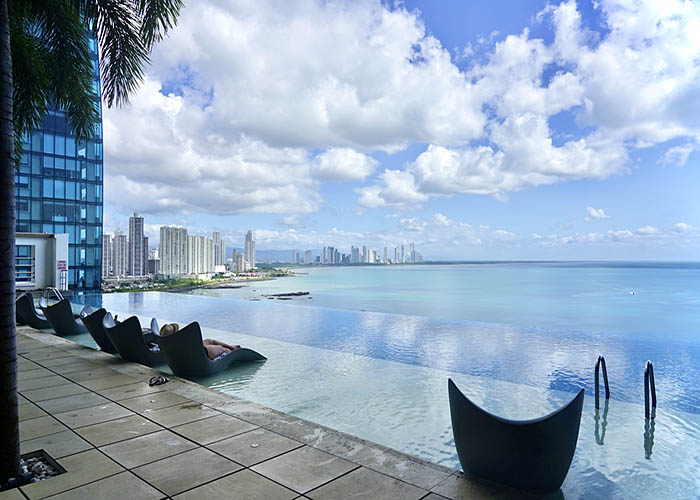
The Central American country of Panama feels to me somewhat of a hidden gem. It’s often overlooked in favor of its bordering neighbors Costa Rica and Colombia, but Panama has everything you could want in a destination and quite literally offers “a little bit of everything.” In as little as one week in Panama, you can experience its bustling city life, remote tropical islands, breathtaking mountains and nature, great food, and a vibrant culture all whi le being very affordable to Western travelers. This perfect Panama itinerary combines all the major points of interest in just 7 days, taking you from the capital, Panama City, to the mountains of Boquete, and finishing off in the islands of Bocas del Toro. Find out why I believe Panama is one of the most underrated destinations in Central America in this comprehensive Panama travel guide.
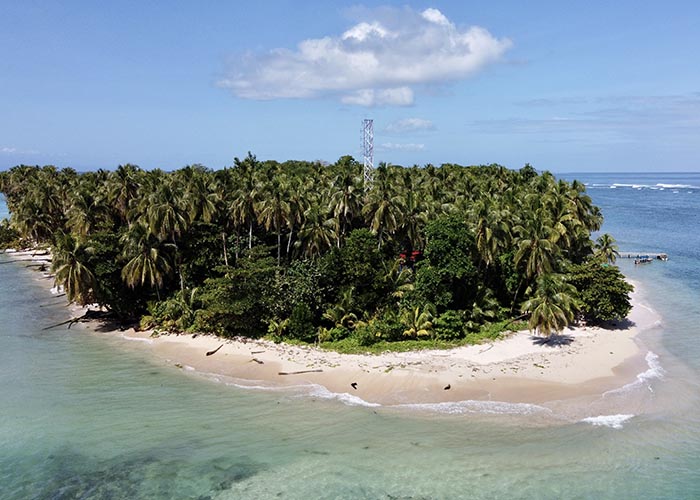
Day 1 – 2: Panama City Itinerary
Begin your trip by flying into and spending the first two days in Panama City, Panama. Panama City is a large modern metropolis filled with futuristic skyscrapers, a historic core with colorful, Spanish colonial buildings, great restaurants, exciting nightlife, and friendly people. In these first 2 days, you’ll get to explore the best of the city and of course, visit the monumental Panama Canal.

How to See the Panama Canal
Visiting the Panama Canal should be one of the top priorities for your time in Panama City. The Panama Canal is a manmade waterway that connects the Atlantic with the Pacific Ocean and divides North and South America, giving ships the ability to cross oceans much more quickly and effectively. It is one of the most significant engineering advancements ever created. Successfully built by the US, the canal consists of artificial lakes, channels, and locks, and is fascinating to witness its technology. The ships usually take 15 minutes to go through the lock, and then 8 – 10 hours to travel the length of the canal.

The Miraflores Locks are the closest of the 3 locks to Panama City and can easily be reached by Uber for as little as five dollars (about 30 minutes from the city) or by public transportation. You can take a tour by boat through the Panama canal, or you can visit the Miraflores Locks by land, (which is what I did) through the Miraflores Visitor Center , which has observation decks and viewpoints, along with exhibitions and an IMAX film about the canal.

Entry to the visitor center to see the Panama Canal costs between $10 – $20 per ticket. A tour guide is usually not necessary as the visitor’s center is very informative, as is the Panama Canal Museum in the Casco Viejo neighborhood of Panama City. The best time to visit the Panama Canal is when there is the most transit, so try to plan to be there when the Canal is at its busiest, usually between 9:00 am to 11:00 am or between 2:00-4:00. Transit times vary daily, so make sure to check the transit schedule on the visitor’s center website to time your visit accordingly. For more precise times and types of vessels, you can also check the maritime transit schedule here .
Casco Viejo
The historic district of Casco Viejo, which is also known as Casco Antiguo (translating to Old Town/Quarter) is Panama’s hippest neighborhood and is a designated UNESCO World Heritage protected district. Filled with old colonial buildings updated with stylish and modern interiors, trendy rooftops, restaurants, bars, cafes, and other little gems, this is undoubtedly where you’ll want to spend a lot of your time. Casco Viejo is small and walkable, and many streets are cobblestone, so wear comfortable shoes!

An ideal day in Casco Viejo would go a little something like this:
- Start your morning with geisha coffee (the famous Panamanian coffee variety) at Cafe Unido , the best coffee chain in Panama. If it’s Sunday, make sure to indulge in the famous Sunday brunch next door at The Dining Room inside the American Trade Hotel. Not Sunday? No problem, Mahalo also offers a great breakfast every day of the week.
- After you’re fueled with breakfast and Panamanian coffee, head over to the Museo del Canal Interoceáno de Panamá , AKA the Panama Canal Museum and/or Museo de la Mola (MUMO) AKA the Mola Museum. Molas are the artwork made of stitched textiles by the indigenous people of Panama. You can find them sold all over Panama and make for lovely souvenirs. For either museums, be sure to make a reservation in advance.
- Next, head to Mercado de Mariscos for some fresh seafood for lunch or a snack. It is about a 10-minute walk just outside of Casco Viejo, or you can take an Uber or cab for a few bucks. This seafood market has dozens of outdoor stalls selling fresh ceviche and fried fish. The vendors each have staff members somewhat aggressively shoving menus at you as you walk by, but pay no mind and just keep walking. You’ll want to find the stall that has the most locals dining there (i.e. no Panama hats in sight!) as that will typically be the best ones. The stalls on either ends may look the busiest to you as they are the most easily accessed, but make sure you walk the full length from end to end before determining which stall looks the most happening.

- For a midday treat, stop and cool off with an afternoon popsicle made with fun flavors at Palettamerica .
- Spend the afternoon wandering through the shops and boutiques, making sure to stop at Victor’s Panama Hats to pick up a genuine Panama hat to buy as a souvenir or wear on your trip.
- In the early evening, head to the rooftop terrace at CasaCasco for sunset drinks and happy hour.
- After working up an appetite with some drinks, stay for dinner at one of CasaCasco’s 3 different restaurants, or choose one of the other great dining options in my restaurant section below.
- End the night with drinking, dancing, and bar hopping at the Casco Viejo bars and clubs. See my recommendations in the Panama City nightlife section.

Amador Causeway
Another popular activity in Panama City is Amador Causeway, a boardwalk with restaurants and attractions. Many people enjoy renting a bike or electric scooter to ride down the causeway, but you can also choose to just take a stroll. There are also several different activities and sites you can enjoy, which can be found here .

Day Trips from Panama City & Panama City, Panama Beaches
As far as top things to do in Panama City and other tourist attractions, there actually isn’t a whole lot to see within the city itself. That said, there are some popular attractions close by that you can enjoy for a few hours, a half-day trip, or full day. If you’ve already seen the Canal and spent time exploring Casco Viejo, and still have time permitting, you can choose any of the following activities for a full or half-day trip:
Monkey Island : Take a boat tour down the Panama Canal to visit different islands to get up close and personal with monkeys and other wildlife. If you’re lucky, the monkeys will jump right into your boat with you! (Make sure to book a morning tour as that is when the monkeys are most active.) Tour costs begin around $50/adult and goes up when combined with other sites to tour. Tour duration is typically around 2 – 4 hours.
Pearl Islands : If you’re craving beach time, the Pearl Islands are an archipelago off the Pacific Coast of Panama and offer white sand beaches, beautiful waters, and are great for snorkeling, scuba diving, or whale watching. To reach the Pearl Islands from Panama City, take the 1.5-hour ferry from Punta Pacífica or the Amador Causeway. The rate for round-trip ferry is around $100 per adult. You can also fly to the Pearl Islands or go on a guided tour. Duration: half to full-day trip.
Taboga Island : Taboga Island is one of the closest beach destinations to Panama City, and can be reached within 30 minutes by ferry and costs $24 per adult round trip.
Emberá Village Tours : Take a day trip to visit and immerse yourself in the culture of the indigenous tribes of Panama. Tours typically include a boat ride through the Gamboa rainforest to reach the village where you will spend the day with them learning about the culture and community. You’ll hear traditional music, learn about the shamans, medicinal plants, art, get to hike, and more. Includes lunch. Cost is around $100 – $200/adult. Duration is a full-day tour. This tour can also be combined with Monkey Island.
Restaurants in Panama City, Panama
Panama City offers a great variety of food thanks to the significant presence of immigrant communities such as Jewish, Chinese, and American. You’ll find stand-out restaurants from traditional Panamanian and Caribbean cuisines, to international fare such as Mexican, Italian, Mediterranean, Asian-fusion, and more. As a Jewish traveler, I was particularly excited by all the options for kosher dining, which can be hard to come by when traveling outside of the US.
While dining abroad, I like to chase an ultra foodie experience, leaning into the most gastronomic restaurants along with the authentic and ultra-local. In a metropolitan city like Panama, there are opportunities for both, however as we make our way to the more remote areas of Panama where there will be plenty of opportunities for more simple, local dining, so my priority in the city was towards the gastronomic, or elevated local cuisine (i.e. no Italian or Japanese food for me.) You may also notice that many of the best restaurants in Panama City are found in the neighborhood of Casco Viejo, which doesn’t come as a surprise to me!

Here are some of the top restaurants in Panama City:
Maito : Designated as one of the 50 best restaurants in Latin America. Maito is a stylish restaurant that serves Panamanian fusion with an international flair.
Mercado de Mariscos : A fresh and local seafood market with dozens of stalls specializing in ceviche and fried fish.
Fonda Lo Que Hay: A casual and affordable Casco Viejo neighborhood restaurant by Panama’s Top Chef winner serving Panamanian street food with local ingredients.
Tacos La Neta : An awesome rooftop taco spot on the terrace of the Selina Hotel in Casco Viejo.
Botanica : A super Instagrammable cafe and pizzeria with photo-worthy food.
Tantalo Kitchen : A trendy rooftop bar and restaurant located at the Tantalo Hotel in Casco Viejo.
Cafe Coca Cola : One of the oldest and most famous cafes in Panama serving cheap Panamanian diner food.
Aria : The best kosher meat restaurant in Panama City (in my opinion, aside from The Chief BBQ , which I also loved and was only available for delivery at the time I visited.) For dairy restaurants, (since kosher does not mix meat and dairy) Blame Kiki is so cute and Instagrammable, and Kava is highly loved as well. A full list of Kosher restaurants can be found here .
Cafe Unido : My favorite coffee chain in Panama.
Granclement : The best ice cream in the city with unique flavor combinations and all-natural ingredients.
Palettamerica : Popsicle spot with a plethora of fun flavors.
Panama City, Panama Nightlife
Most of the best nightlife in Panama can be found in either Casco Viejo or in El Cangrejo, I actually had the opportunity to celebrate the New Year in Panama, which was very exciting, and a great time spent on the rooftop at CasaCasco . There were fireworks everywhere in the city with lots of celebrations all over late into the early morning.

Here are some of the best places for a night out in Panama City: Salvaje : A luxe restaurant/bar that has one of the trendiest rooftops in Panama City
Tantalo : Another trendy rooftop bar at the Tantalo Hotel
La Tana : A more upscale supper club vibe
Teatro Amador : An old theater turned nightclub
CasaCasco : An upscale complex of 3 different restaurants, a nightclub, and rooftop terrace with the best views in Casco Viejo.
Where to stay in Panama City, Panama
The best area to stay in Panama City is either in Casco Viejo or close to it in neighboring areas. Note that the 5-star luxury chain hotels in Panama City are often much more affordable than in the US, so be sure to check their rates!

Here are the hotels I recommend:
JW Marriott : This is my favorite hotel in Panama City. My large suite came with a balcony with amazing views, and their stunning rooftop infinity pool is one the best in all of Latin America.
American Trade Hotel : This one is another favorite of mine! A super hip boutique hotel in Casco Viejo, and the “it” place to stay in Panama. It only has 50 rooms, so be sure to book early.
Tantalo : A more budget-friendly alternative to the American Trade Hotel, and another hot spot in Casco Viejo.
Waldorf Astoria : One of the few other 5-star options within Panama City. I stayed here and it was nice, but I prefer the JW.
W Panama : The W Hotel is always great, and a good affordable-luxury option in Panama City.
Day 3 – 4: Boquete
On day 3, take a quick, 1-hour early morning flight from Panama City (PTY) to the Chiriqui region’s city of David (DAV). From David, you can either rent a car or take a 45-minute taxi ride or shuttle to the beautiful, mountainous region of Boquete.
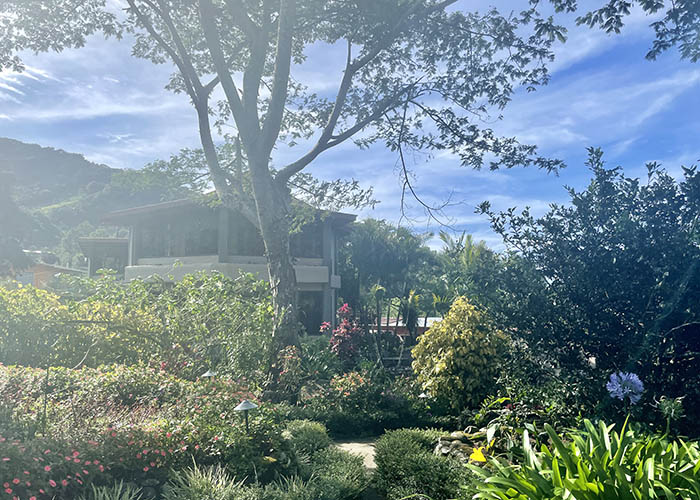
Boquete is known for its immersive nature, hiking and adventure activities, Volcan Baru, world-famous coffee plantations, abundant blooming flowers, and relaxation in the beautiful natural surroundings. It is also a popular retirement community for American expats young and old, as recommended by AARP for being one of the best places in the world to retire.
Things to do in Boquete
In Boquete, you’ll want to take advantage of the fresh mountain air and beautiful natural surroundings by partaking in adventure activities such as hiking, zip-lining, white water rafting, and more. Most activities require going with a guided tour, which you can book through your hotel or directly at the parks.

Boquete Tree Trek : This adventure park high in the lush mountains of Boquete offers the second-highest and longest-hanging bridges in Central America. They also offer ziplining and coffee tours. Guided tours only.
Volcan Baru National Park : Hiking the actual volcano is not the easiest (takes many hours in varying climates) but you can still visit and hike around the park ( Los Quetzal Trail at the base of the volcano ) as an alternative, or take a 4×4 up to the top. The top of the volcano is where you can see the Atlantic and Pacific oceans at once. If you do plan to hike the Volcano, make sure you do it with an experienced guide for safety!
Coffee Plantation Tour: Boquete is known for the world-famous “Geisha coffee” which is grown in the volcanic soil of Volcan Baru, making it some of the most expensive in the world. There are many different coffee tours in Boquete, with Finca Don Pepe being a great generational family and locally-owned option.

Swim in the river: Cool off and swim in the easily-accessible river of this natural canyon slot, Los Cangilones de Gualaca , which is about 40 minutes away from Boquete.
Whitewater rafting: Take an exciting ride whitewater rafting with an experienced guide on the Chiriqui Viejo River.
Chase waterfalls: Take a 2.1-mile hike through the cloud forest and be rewarded with waterfalls on The Lost Waterfalls Trail .
BCP Tuesday Market AKA The Gringo Market: Every Tuesday there is a market run by expats with both local and expat vendors selling crafts and produce. It’s a great place to pick up souvenirs and support the local farmers and artisans of Boquete.
Restaurants in Boquete, Panama
Many of the restaurants in Boquete are actually run by expats, but there are plenty of options for local dining as well. Here are the top choices for where to eat in Boquete:

The Rock : This is my number one recommendation and a popular restaurant amongst locals, expats, and tourists. They offer local and international upscale cuisine in a beautiful indoor and outdoor setting.
The Fish House : Another favorite. This casual seafood spot is known for its amazing fish & chips, and corvina (seabass) prepared 8 different ways.
Sugar and Spice : A popular cafe and bakery with breakfast items as well as sandwiches and fresh-baked pastries and bread.
Morton’s Bakehouse : A Kosher parve (dairy-free) bakery with great bread and awesome bagel sandwiches.
The Panamonte : A highly regarded fine-dining restaurant at The Panamonte Inn and Spa.
El Sabroson #3 : A super local, cafeteria-style restaurant with cheap and simple eats in 3 different locations (#3 seems to be the favorite.)
RetroGusto : Farm-to-table Italian dining.
Boquete Brewing Company : If you’re looking for nightlife, this is a popular hangout for both travelers and locals.
Big Daddy’s Grill : An expat hangout and serving typical bar food sometimes accompanied by live music, karaoke, or dancing (depending on the night.)
Fresas Mary : A cute little strawberry shack on the way to Volcan Baru which serves fresh strawberries and cream, strawberry milkshakes, and other strawberry sweets.
Where to stay in Boquete
Boquete is a much less developed region than Panama City (which is why it’s great!) but with that comes very few options for true luxury accommodations. The hotels here are mostly basic, however, here are a few nice ones I recommend:

The Inn at Palo Alto : This is a popular option for luxury travelers. The property is in a beautiful natural setting set against the Boquete River which you can hear from all over, adding to the tranquility of the environment. The rooms are simple casita-style accommodations, and the hotel has a nice little infinity pool and hot tub with lovely nature views.
Valle Escondido : A hacienda-style resort with a local residential feel, as it’s set within a community golf course.
Hotel Panamonte : A quaint cottage-style boutique hotel owned by the former President of Panama, Juan Carlos Varela.
Hotel Ladera : A slightly more modern hotel than what you typically find in Boquete! The location is a quick, 5-minute walk to downtown Boquete.
Day 5 – 6: Bocas del Toro
The last region you’ll visit is the islands of Bocas del Toro. I love to save the beach for last because I think it’s a great way to end a trip.
Bocas del Toro is a beautiful Caribbean archipelago off the east coast of Panama near the border of Costa Rica. There are about 9 inhabited islands and over 200 islets in Bocas del Toro. The main Island, Isa Colon, and its central hub known as Bocas Town is popular amongst backpackers and young travelers, giving it a very fun party vibe, but there are plenty of other more serene islands if that is what you prefer.

Boquete to Bocas del Toro
From Boquete, you will travel to Bocas del Toro either by shuttle or a driver, or you can pay for a one-way rental which was my preferred option. You can also fly, but it would require backtracking to Panama City so it’s not really worth it. Most people like to take a shuttle (such as Hello Travel Panama ) and find it pretty painless and affordable. The drive is about 3.5 hours to Almirante then around a 30-minute water taxi to Isla Colon. From there, you will either stay on Isla Colon if that is where your hotel is, or take a water taxi to your hotel’s island.
We rented our car from National at the David airport (drove to Boquete with it and used it there) then dropped it off at the Leiza Secure Parking lot in Almirante before taking the water taxi transport to Isla Colon with a company called Valencia. (There are several water taxi options at the port, this one was recommended to us by National.) The drive from Boquete to Almirante was a pleasant one, through lush mountains and passing by small waterfalls. There were a few areas of unpaved roads, two-lane highways, and a passport checkpoint getting into Almirante, but overall it was an easy and nice drive. The downside of driving is the one-way rental fee, making the overall rental price around $50 a day.

Things to do in Bocas del Toro
Bocas Town on Isla Colon is where you’ll find the most action, with plenty of restaurants and bars. Aside from that, naturally, activities in Bocas del Toro revolve in and around the water. To get around the Bocas, you’ll take a water taxi to the different islands, which only costs a couple of dollars, usually between $2 – 5 a person. For me, Bocas del Toro is kind of reminiscent of island hopping in Southeast Asia, such as in the countries of Thailand or Indonesia .
Taking an island-hopping day tour is an absolute must. I recommend Castillo’s Charters – they are fantastic and provide both group or private Island hopping tours in addition to water taxi services. (Feel free to DM them on Instagram or send a Whatsapp message — they are very helpful.) I set up a private tour, which allowed us to create a totally customized trip and visit the different sites at our own pace.
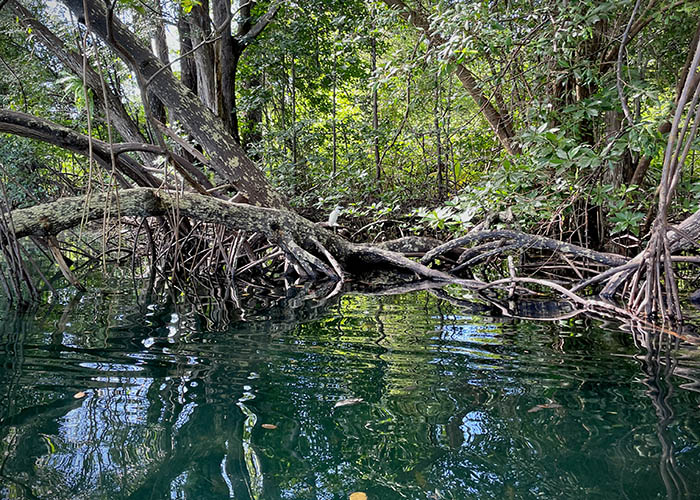
Some popular places to see in Bocas del Toro include: Sloth Island : An lush and foresty island where you tour around the perimeter by boat and hopefully see some sloths. Unfortunately, we did not see any sloths, but they can be found on other islands as well!
Starfish Beach (Playa Estrella) : As the name suggests, this beach is full of big, bright starfish and is one of the prettiest beaches on the islands. This beach was my favorite and I recommend it as a must-see! We were told that sometimes no starfish are seen, however, this was not my experience. Get here early in the morning or late afternoon to avoid the crowds as it is a very popular beach. There are a few beach bars here and the water is crystal clear and calm, making it a really nice place to hang out. Just remember not to pick the starfish up out of the water (even for a quick photo) as it can be very harmful (and deadly) to them. Many tours will take you to Starfish Beach, however, you can also get here on your own. To reach Starfish Beach from Bocas Town on Isla Colon, first, you must get to Bocas del Drago, and from there it is a few minutes water taxi ride to the beach (costs a couple of dollars) or a really nice 20-minute walk along the coast. To get to Bocas del Drago from Bocas Town you can either take a taxi (about 30 minutes and around $15-20 one way), the bus ($7 and about 45 minutes), or a water taxi, (which also takes about 30 minutes and costs around $5.)
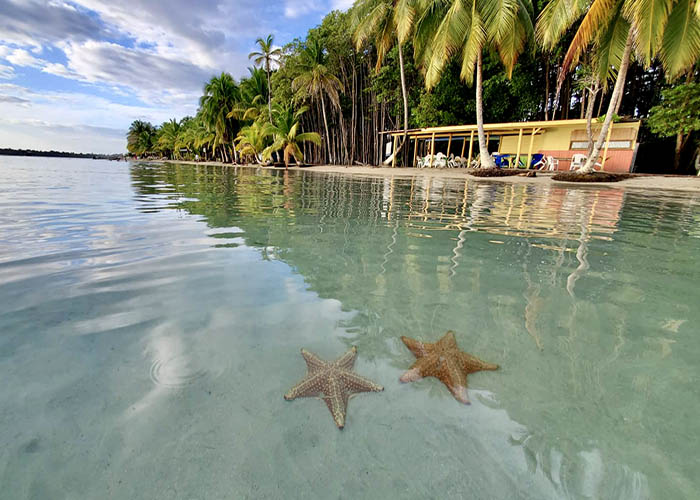
Zapatillas : A set of 2 islands as part of a national park with some of the most beautiful beaches and clear waters in all of Bocas del Toro. These islands are paradise and an absolute must for any island hopping trip.
Coral Cay : A coral reef in the middle of the sea and the best place in Bocas to snorkel – lots of colorful fish.
Dolphin Cay : Where the dolphins hang out, and yes, we were lucky to see some!
The Floating Bar : a literal floating bar and restaurant in the sea that offers drinks, music, yoga, and water floaties to float and cool off with.
Hollywood : A cay with the name Hollywood because there are lots of starfish seen from the clear shallow water, but you’re not able to leave the boat here. If you’re going to Starfish Beach, you can skip Hollywood.
Partying and Nightlife in Bocas del Toro
If you came to party in Bocas del Toro like many do, there are plenty of opportunities to get your party on at the bars in Bocas Town. However, two party experiences you shouldn’t miss are: Filthy Friday : Happening every Friday, this multi-island bar crawl is one of the biggest events in Bocas with live DJs, drinking, dancing, games, and surprises.
Black Magic Bocas : A booze and party cruise on a pirate ship! Enjoy island hopping, swimming, lounging, partying, and good vibes.

Bocas del Toro Restaurants
There are many great places to eat so I recommend getting out of your hotel and exploring! Fresh seafood is of course the main appeal, best enjoyed with an ice-cold local beer or passion fruit margarita. Some of the best restaurants in Bocas del Toro are:
El Ultimo Refugio : One of the best (if not the best) restaurants on the islands. They serve local/Caribbean food and are a must-visit on Isla Colon.
Bibi’s on the Beach : A beach bar/restaurant on Isla Carenero with awesome ceviche and fried fish + a swimmable beach.
Raw Fusion : A popular Asian-fusion restaurant in the heart of Bocas Town.
Falafel Bocas : Amazing Kosher falafel and Israeli food run by the Chabad House in Bocas Town. If you are Jewish you should definitely consider having Shabbat dinner here alongside up to a hundred of Jewish travelers!
Leaf Eaters Cafe – Vegan/Vegetarian spot on Isla Carenero with great salads, tacos, and more.
Om Cafe – A very loved and popular Indian/International restaurant in Bocas Town.
Amaranto – Definitely the best coffee in Bocas Town / on all of Isla Colon
Cafe del Mar – Right next to Amaranto, a cute little cafe that’s great for breakfast.
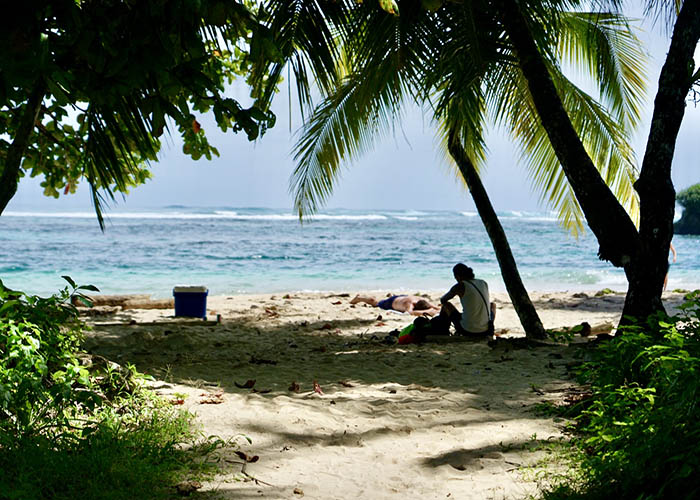
Where to Stay in Bocas del Toro:
Deciding where to stay can be a bit of a challenge, so I’m here to help. First, you must know that if you are looking for luxury accommodations, they are few and far between. (There is a Viceroy opening up sometime in 2026 though which is exciting, albeit bittersweet because that means it’s losing some of its local authenticity as it’ll be the first Western chain hotel.) Most of the accommodations are pretty simple, especially on Isla Colon. You’ll find either eco-style lodges or traditional Caribbean ocean-front housing. There are 3 main islands where most of the action is which are Islas Colón (the main island), Carenero, and Bastimentos.

Step one is to decide whether you want to be in the center of the action (Isla Colon/Bocas Town) or if you want to have a more secluded stay. Being within walking distance of many restaurants and bars can be a plus, but I have to warn you that Isla Colon/Bocas Town can be very noisy from the late-night parties. As a luxury traveler, finding the right hotel was at the forefront of my mind, however, I didn’t want to be too far from the main island(s) so I could easily go back and forth instead of spending most of my time at the resort. I also wanted to spend at least one night in an overwater bungalow. This was a bit of a challenge as there are a limited amount of luxury hotels and overwater villas close to Isla Colon.
Bocas del Toro Overwater Bungalows & Luxury Hotels
Bocas Bali is my top choice for a luxury overwater bungalow hotel. It is the most similar experience to Bora Bora or the Maldives overwater resorts and is about a 15-minute boat ride away from the main island, Isla Colon. With a small number of rooms, this hotel can book up fast, so be sure to reserve in advance.
Red Frog Beach Island Resort is another popular option for luxury-minded travelers — probably the most popular. It’s not an overwater resort, but it is on one of the nicest beaches in the Bocas. It is also about 15 minutes from Isla Colon via water taxi.
There are also a handful of overwater eco-lodge-type bungalow hotels. They do not have all the luxury amenities you may be used to, but are a great option to get the overwater bungalow experience in a more affordable way. These include Sol Bungalows (5 minutes from Isla Colon), Azul Overwater Resort (45 minutes away) Punta Caracol Acqua Lodge (30 minutes away) and Eclypse De Mar (10 minutes away).

Eclypse De Mar is a lovely option for an overwater bungalow, though it is an eco-lodge, so there is no electricity during the day (but you really don’t miss or need it, and is an experience in itself!) Their honeymoon overwater villas are spacious, with a nice-sized outdoor deck, and an open glass coffee table within the living area to see the fish swim from below. They offer free rentals for kayaks, snorkel gear, and stand-up paddleboards, as well as a daily breakfast that you fill out a form for your desired breakfast options and they deliver it straight to your room at your preferred time. What’s especially unique about Eclypse De Mar in particular that other overwater resorts don’t offer, is that it is built on its own private nature reserve, which you can walk through to see sloths, monkeys, and lots of other wildlife. You can also stay in one of their treehouses within the nature reserve, which is also a pretty unique experience. The only drawback to staying at Eclypse De Mar is that it can be noisy during the night with music blaring from the nearby islands, though they do provide earplugs for that. Staying there was a fun experience to have for a short stay, as the accommodations and setting were very different from the other overwater bungalows I’ve stayed in.
Lastly, for another type of unique stay, eco-luxury, glamping, and treehouse options, you must check out La Loma Jungle Lodge and Palmar Beach Lodge .
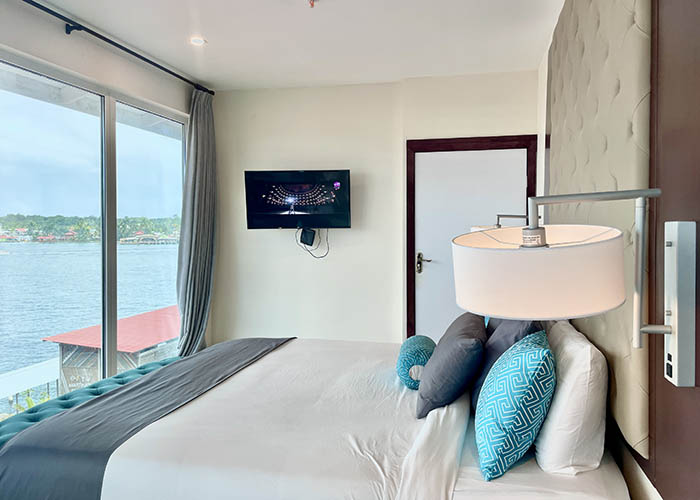
As a final note, if you want to stay in Bocas Town on Isla Colon to be in the center of the action or if you need to catch an early flight as I did on my final night in the Bocas, Azul Par adise is nice and modern, and what I believe to be the nicest option in Bocas Town. (Book on the top 2 floors for a penthouse.)
Day 7: Back to Panama City
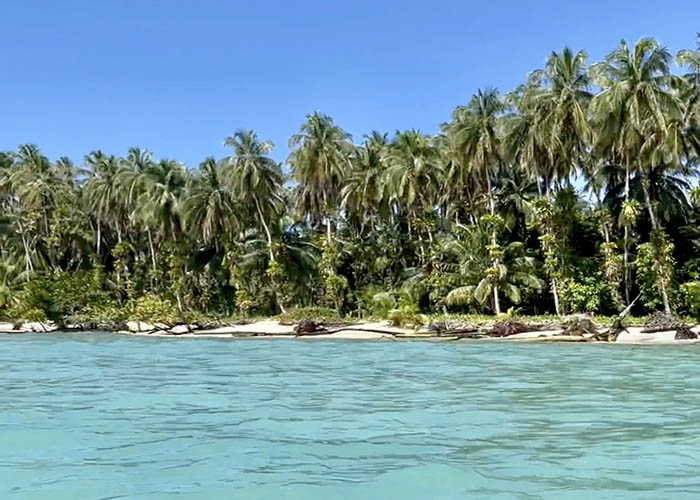
Say farewell to the Bocas and if you’re flying home internationally, sadly take your 1-hour flight back to Panama City from the small airport in Bocas Town. Note: You can also split up your time in Panama City by doing one day in the beginning and one at the end (up to your personal preference.) On your last day in Panama, if you’re not immediately flying home, get in that last restaurant from your list, book a spa treatment at a hotel, or if time permits, one last BIG adventure…

San Blas Islands
A popular day or overnight tour from Panama City is to the Islands of San Blas, known locally as Guna Yala. If your time in Panama permits at either the beginning or end of your trip, this stop comes highly recommended.
San Blas Islands are some of the most picture-perfect, untouched, remote islands in Panama. So much so, that the only accommodations are mostly local huts made from natural materials found on the islands, many with sand floors. Of the 378 islands in the archipelago, only 49 are inhabited. The islands are governed by the natives, known as Kunas or Gunas and tourists are not able to visit the islands freely in order to preserve their authenticity. You may not even take a coconut from the islands, as that is their main export and would therefore be considered stealing! There is no running hot water, virtually no electricity, and an entire island could share one bathroom, however, the setting is simply paradise on earth.
Panama City to San Blas – How to get to San Blas Islands
Besides the bare accommodations, the other caveat is that it is not so easy to get to. There are many San Blas tours from Panama City that can take you on a day trip (early morning to late night) or an overnight trip, however, it consists of a 3+ hour drive plus a 45-minute boat ride to reach the islands. (Or you could take a flight for about $350 round trip instead of driving, though this is less common.) That said, if having a completely unplugged, rugged, and culturally authentic getaway on a pristine island where you will do nothing but relax in paradise sounds appealing to you, the trek may be part of the fun.

Is San Blas worth it?
In general, I would say if you have the time and energy, visiting the San Blas Islands can be an incredible, once-in-a-lifetime type of experience. For me personally, having to rough it was not something I was after on this particular trip . It was a tough call, but in just one week I had to ultimately decide between visiting San Blas. cutting short Panama City (and my long list of restaurants I wanted to try), or perhaps cutting out Boquete or Bocas Del Toro entirely. I really wanted to experience the geographic variety Panama has to offer from the city, to the mountains, to the islands, and with Bocas Del Toro also coming highly recommended and a little more my speed at this point in my lifelong travel journey, San Blas, unfortunately, had to go. Having spent time visiting remote islands throughout the world, including all over Central America, in a way they sort of start to all blend together. Don’t get me wrong, I am not jaded by islands and still believe there’s nothing more beautiful on earth than a tropical paradise. Islands and beaches are my specialty and my favorite places to travel to – without a doubt – but at the end of the day (or with limited days, I should say,) an island is an island when they are undeveloped and therefore provide more or less the same type of experience.
The most exciting part to me was the prospect of being able to submerge in the local Kuna environment and learn about their culture, but I just wasn’t up for roughing it this time. I crave authenticity and local experiences while traveling, but in the end, I think I prefer the variety Bocas Del Toro offers, socializing with their locals, and there were some pretty fantastic islands there that got the job done great. All this is to say, the contrast between these two archipelagos may be interesting for travelers who have the time, and I absolutely wouldn’t mind returning to Panama one day to experience San Blas.
Panama Travel Tips
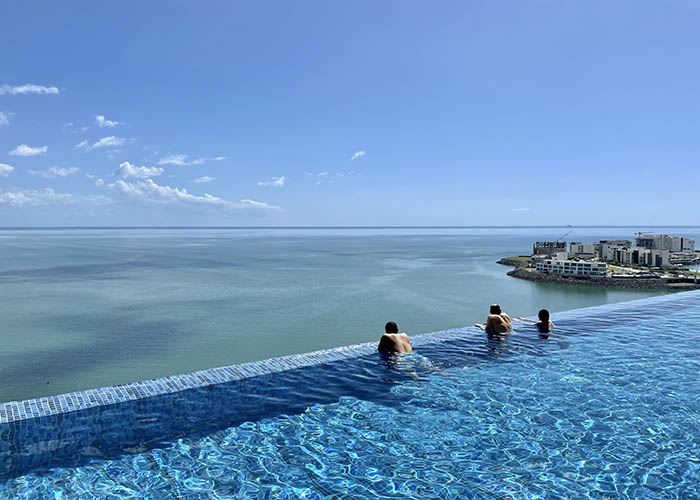
Getting to Panama:
From the US, Delta offers direct flights from major cities such as Los Angeles, New York, Orlando, and Atlanta (usually just once a week, which is great for this itinerary.) COPA Airlines also offer non-stop flights daily in some cities with more departure options in several countries in North, Central, and South America.
Best time to visit Panama and Panama’s climate:
Panama has a hot, humid, and tropical climate year-round. For most of the year, it rains in Panama with the driest months or “dry season” being December, January, and February, making December – February the best months to travel to Panama. The rest of the year is the “rainy season,” meaning it could rain any time. Don’t rely on the weather forecast apps, as they are usually inaccurate. The forecast will often predict rain which could mean anything from 10 minutes of rain to several hours, or sunshine and clear skies where you are but a torrential downpour just miles away. Be prepared with an umbrella.
Currency in Panama:
While the official currency of Panama is the balboa, the balboa and US dollar are tied and the US dollar is used throughout the country. (They don’t print money there, but you will receive both US and Panamanian coins as change.) Outside of the city, it is a good idea to have cash with you, particularly prior to arriving in Bocas del Toro because many places are cash-only and there is only one bank/ATM in the islands.
Is Panama affordable?:
Panama is relatively affordable for US travelers, but when compared to other Central American countries such as Costa Rica or Belize , it is on the slightly more expensive side. That said, 5-star hotels cost under $200 a night in Panama City, Ubers just a few dollars to get from one side of town to the opposite, and domestic flights are around $100 one way. Restaurants, cocktails, and coffee are all also much cheaper in Panama than in the US. The average daily cost for a luxury vacation is between $100 – $200 per person in the season, and in the high season, double that.
How to get around Panama:
In places like Panama City, Uber is easy and cheap. I recommend taking an Uber over regular taxis whenever you can as they cost less and are less of a hassle, but in a pinch, (i.e. you don’t want to wait for an Uber while taxis are abundant) a taxi is fine. Outside of Panama City such as in Boquete or Bocas del Toro, Ubers may be scarce or non-existent. Whenever taking a taxi in Panama, make sure to negotiate the price upfront before getting in the cab as they don’t use meters. Taxi drivers will surely try to rip tourists off, so as a rule of thumb whatever they quote you, you should negotiate to pay about half. There is also an efficient public transport system should you wish to use it.
Do they speak English in Panama?:
Spanish is the official language in Panama, however, English is widely spoken in the major tourist cities. In more remote areas and small towns, most people do not speak English. In the interest of being a socially-responsible traveler , I always recommend learning a few words, (at the very least hello and thank you) in the local language. It is always appreciated by the locals and you may get better service because of it. 🙂
Is Panama safe?:
Like many other destinations, safety varies from place to place within a country or city. In general, Panama is considered safe, especially along the tourist track, but you should exercise caution and be aware of your surroundings as petty theft and other small crime can occur. Be aware of your belongings to avoid getting pick-pocketed, try not to carry backpacks, large cameras, or flashy jewelry, and it is a good idea to carry copies of your Passport with you if needed for tours (while leaving your actual passport in the safe of your hotel.)
Can you drink the water in Panama?:
While tap water in most parts of Panama is considered safe to drink, for travelers it usually causes distress because we are not used to their microbiome, so bottled water is recommended. Something that helped me (my stomach) tremendously on this trip is a natural supplement called Travelan , which prevents traveler’s sickness . If there’s one thing you need to bring on this trip, it would be this.
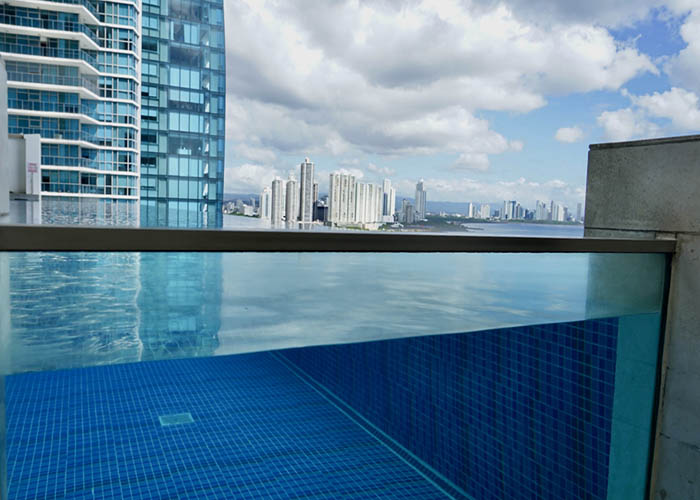
Lastly, who should travel to Panama? Panama is great for anyone who enjoys a little bit of everything on a trip, with a strong sense of adventure as a requisite. It’s a beautiful country, but still a developing one very much so, so with that, it is rough around the edges. There is a strong distinction between the upper class and the impoverished, with not much of a middle. The best thing you can do is travel there and support their economy, shop local, dine local, tour with local guides, and learn as much as you can along the way. Panamanians are fantastic people with a great culture that doesn’t always get the credit it deserves!
Panama is great for anyone who enjoys a little bit of everything on a trip, with a strong sense of adventure as a requisite.
Perhaps you’ve already traveled to Mexico , Costa Rica , and Belize and would like to experience a somewhat similar, yet totally different Central American country. Or maybe you’re drawn to the islands, or other landscapes Panama has to offer. Many people suggest getting out of the city as soon as possible, but I think it’s worthwhile spending time there, too. What makes Panama great is the variety it has to offer. Whatever the case may be, I am sure that with the help of this itinerary, traveling to Panama will surely exceed your expectations and take you by surprise.
Affiliate Disclosure: This post may contain affiliate links. For more information, please see my Disclosures page.
Click on the images below to pin ❤️.

For more adventures, follow @monacorona on Instagram.
Share this:, 10 thoughts on “ the ultimate panama itinerary (7 days in panama or longer) ”.
hi super helpful! Just missing one part – return travel from Bocas de Toro? Also – when/what year was your trip taken to Panama?
Hi! Thanks for pointing this out – I mentioned the short flight back to Panama City but didn’t mention that there is a small airport right in Bocas Town (it’s in my Bocas del Toro guide.) I visited over the time around Christmas/New Years. Please let me know if there’s anything else I can help with. 🙂
What year did you visit and write this guide?
This is so helpful, thanks! And love the kosher info also! Anychance you checked out El Valle Do Anton? Noticed thats not on the list? I want to get in as much as I can so was thinking to swap one of the Panama City days with that, unsure how much I need to see the canal, is that terrible?!
You absolutely do not need to see the Canal 🙂 If nature is more your speed and your time is limited then skip it! I did not make it to El Valle De Anton (Boquete seems like it provides a similar experience) but Anton looks like a great option for a day trip from Panama City, so I say go for it! (And let me know how it is!)
My family and I are headed to Panama in March and following your itinerary. Wondering if you can help with details on the car rental from DAV to Almirante. You mention leaving it in the secured parking area. Did the rental company pick it up from there? I am having trouble figuring out that part of the reservation. Thanks for all the great advice.
Hi Megan, I’m very excited for you and your family! And yes, exactly, we did a one-way rental and were given the instructions for leaving it in a specific parking near where the ferries are to Bocas (and were instructed to give the keys to the parking attendant.) Let me know if I can help with anything else. 🙂
My husband and I want to go in March… I want to try to follow your itinerary! Sounds amazing! Thanks.
I think you guys will have a great time 🙂 I’m excited for you!
Leave a Reply Cancel reply
Discover more from monacorona.com | a millennial-luxury travel blog.
Subscribe now to keep reading and get access to the full archive.
Type your email…
Continue reading

The Perfect Panama Itinerary – 1 Week to 10 Days
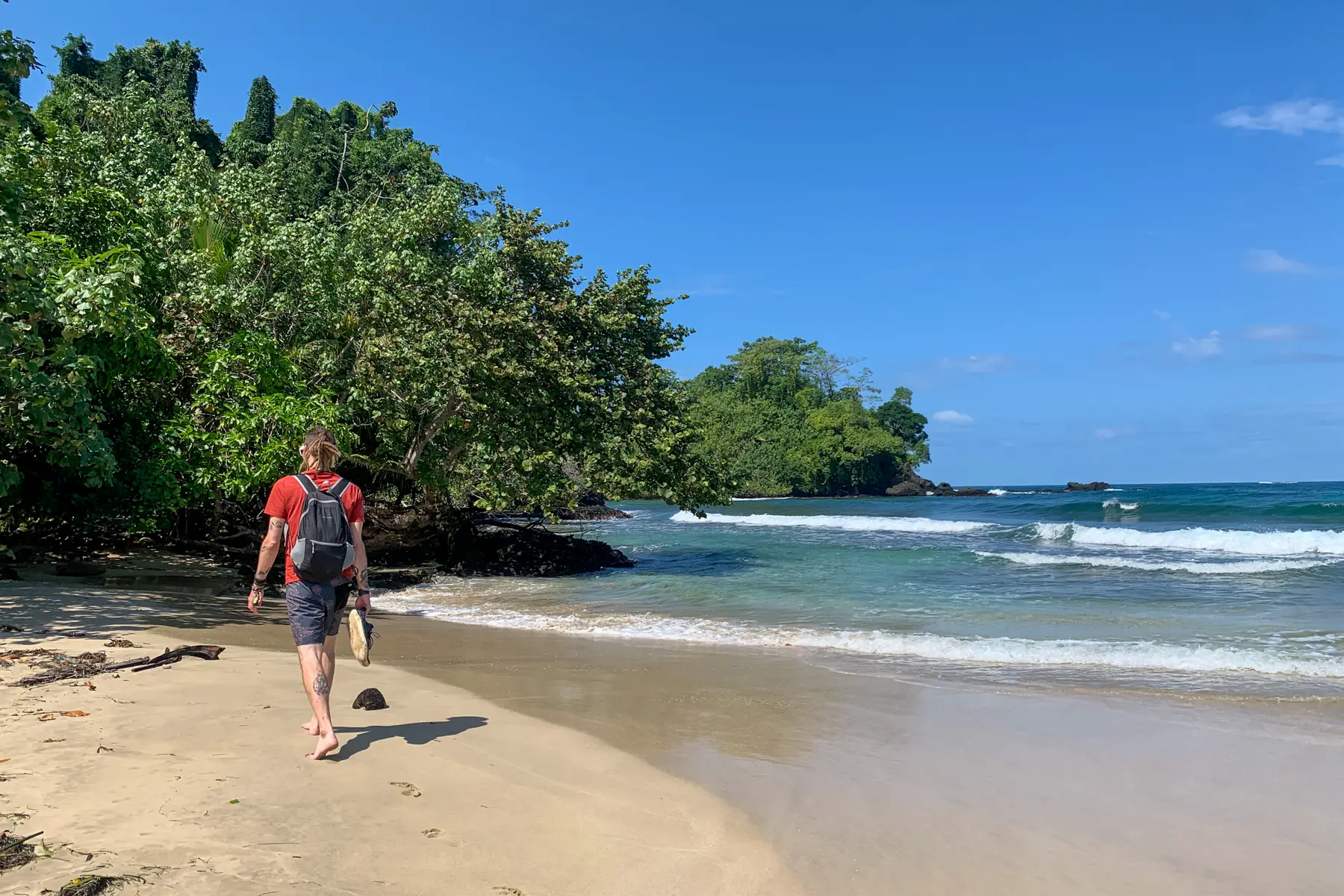
Providing the bridge between Central and South America, Panama is an important yet overlooked country. Only slightly larger than Ireland, the ‘Crossroads of the World’ is a great destination for high-end travellers and backpackers alike.
As Panama is relatively under-visited, it can be difficult to know where to start when it comes to planning a trip there. Luckily for you, the below Panama itinerary can help!
My two months in the country have put me in good stead to help you plan your trip. Below you will find routes for one week and ten days of travel in Panama. So kick back and relax, all you need to do now is book your flights!
Read more: (opens in new tab)
- A Guide to Backpacking in Panama
- Getting from Panama to Colombia
- Iconic Hikes in Panama
Epic Panama Itineraries
This post contains affiliate links. If you use them, I will receive a small commission at no extra cost to you.
1-Week Panama Itinerary
The following Panama itinerary is a whistle-stop tour of the country’s main highlights. It has been created to optimise your time in the country which means it is jam-packed, allowing little time for relaxation!
If you’re looking for a more slow travel experience, check out this suggested one-month backpacking route around Panama . There is so much more to see and do than the below Panama itinerary allows for!
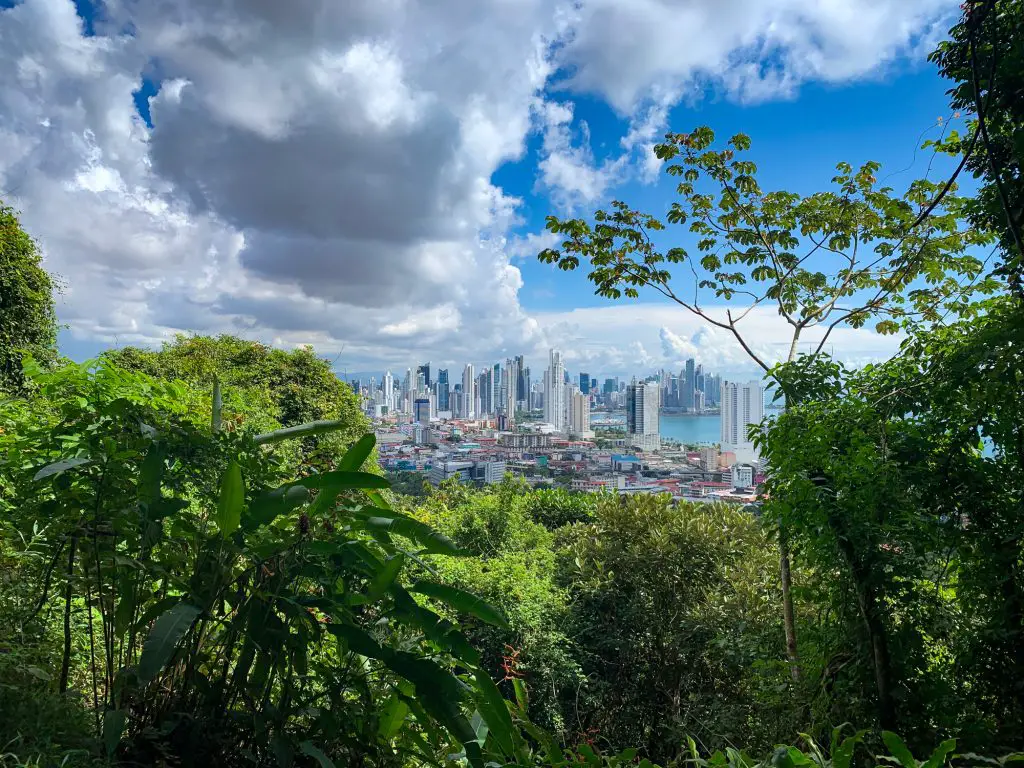
Panama City – 2 nights
The capital Panama City is one of the most easily accessible cities in Latin America. Serving a range of domestic and international flights from both Europe and North America, it is generally easy to reach. Your trip to Panama will likely begin here.
Day 1 – Spend your first day in the capital exploring the beautiful Casco Viejo district. The city’s Old Town has plenty of character, with luxury hotels set in colonial buildings to crumbling graffiti-filled streets along the outskirts. A walking tour is a great way to explore this part of the city and get a feel for Panamanian culture.
Head to the city’s fish market for a cheap and delicious lunch. This is a fabulous way to sample ceviche, one of the country’s most famous dishes. From the fish market, you can walk the Cinta Costera and head to Ancon Hill in the afternoon.
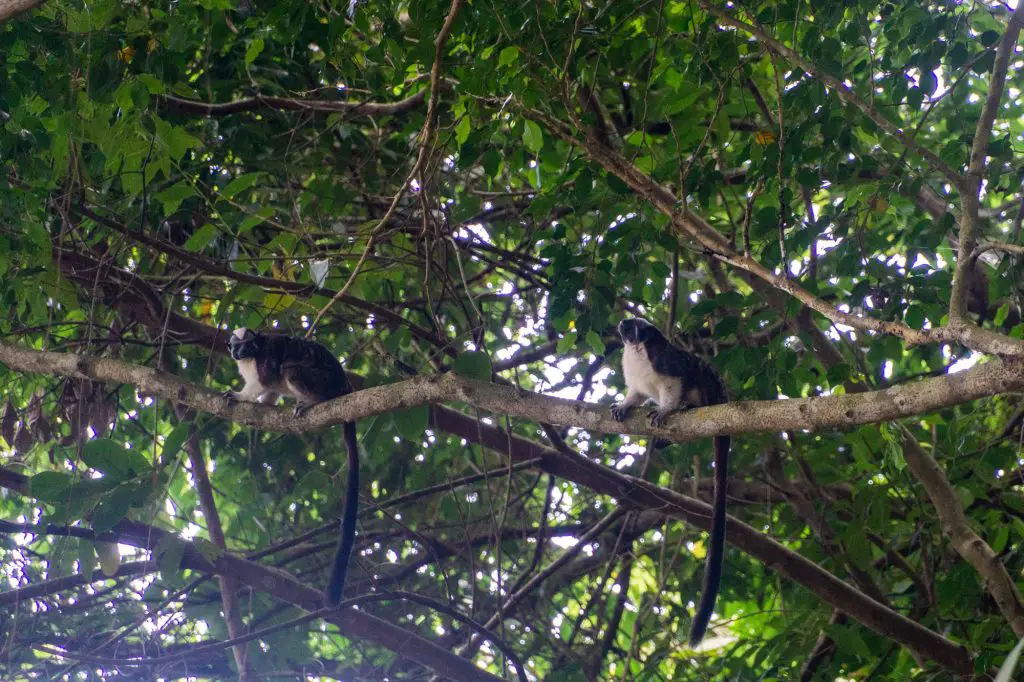
Get an Uber here to avoid walking through any sketchy neighbourhoods. When you’ve reached Mi Pueblito, head up the path towards the flag that waves from the hill above. During your walk, keep an eye out for Panamanian wildlife – this is a great place to spot sloths and other exotic animals.
Make the most of your evening by enjoying dinner and drinks in one of the many rooftop restaurants in Casco Viejo. These offer a fantastic view of the city skyline lit up and provide the perfect backdrop for a toast to your trip. Stay in Casco Viejo overnight.
Day 2 – Rise early in the morning and grab a traditional Panamanian breakfast at Cafe Coca Cola in Casco Viejo. This is the oldest cafe in the city and offers great value for money. From there, head out on a trip to the famous Panama Canal, one of the city’s best day trips .
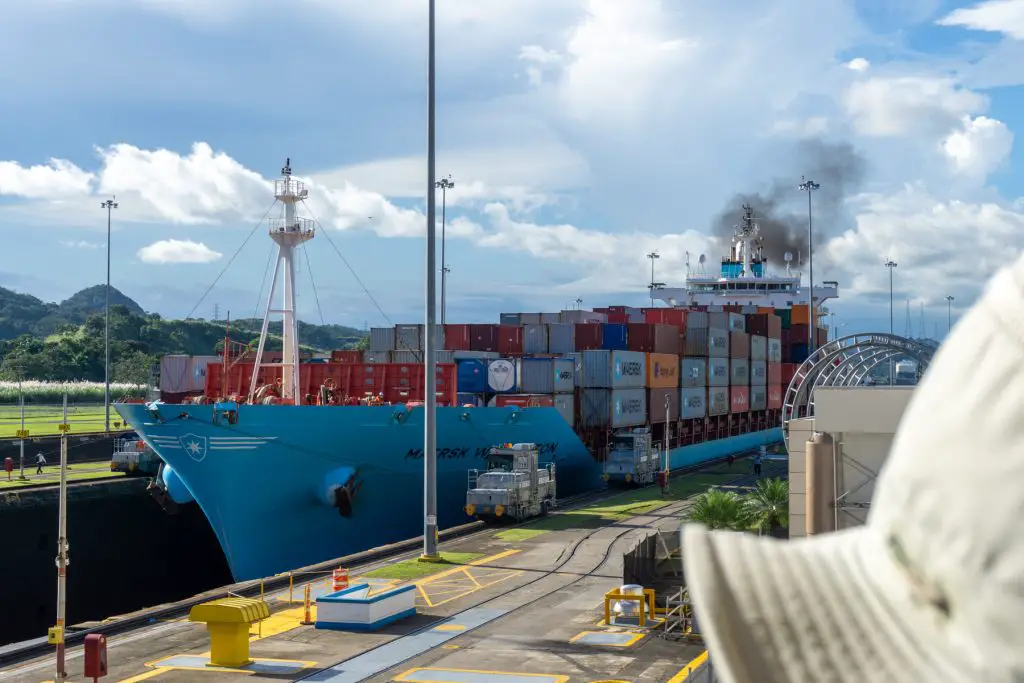
While it is possible to visit the Miraflores locks independently using public transport, I’d advise hopping on a tour. Not only will you save a lot of time but having a guide to explain how everything works is a worthwhile experience. Check out some recommended Panama Canal tours here .
Once you have finished your visit or tour of the canal, head to the Amador Causeway. Here you can grab lunch in one of the swanky restaurants or cool off with a raspado from one of the street vendors. Walk the Amador Causeway right up to where the boats depart for Taboga Island and the Pearl Islands and enjoy a bit of duty-free shopping.
Head back to your accommodation in Casco Viejo and enjoy some food at Mahalo Cocina y Jardin before turning in. You’ll need to get an early night because you’ll be heading out early tomorrow on your San Blas trip!
Recommended accommodation in Panama City:
- Selina Casco Viejo
- Las Clementinas
- American Trade Hotel
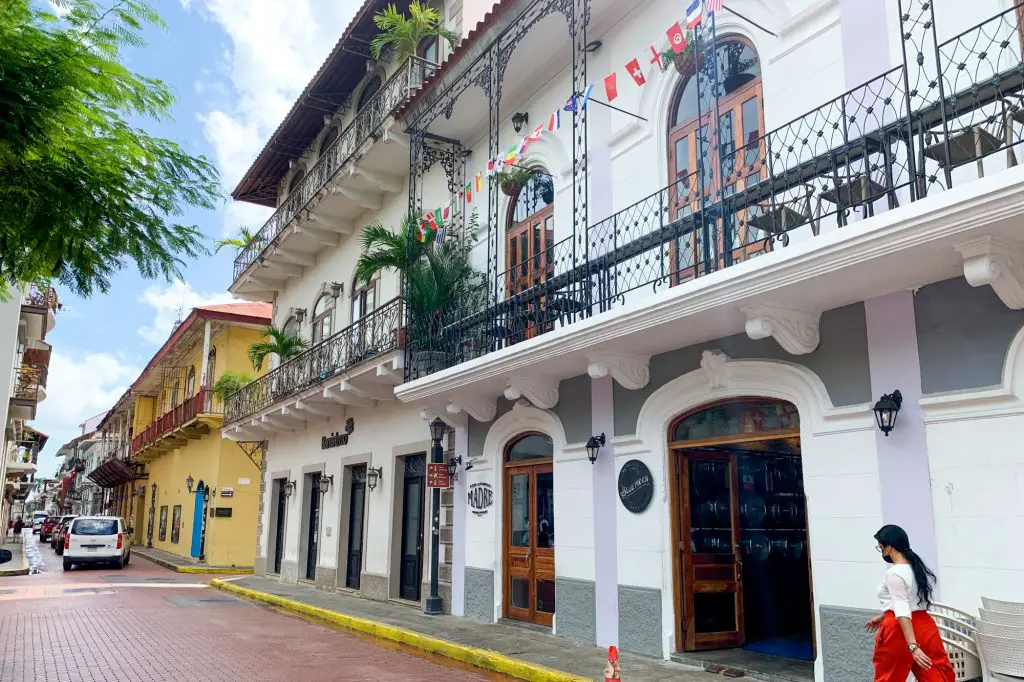
Also read:
- Where to Stay in Panama City
- Cheap Things to Do in Panama City
San Blas/Guna Yala – 1 night
Day 3 – Prepare to be picked up early by your tour provider. You will then be whisked away to the San Blas islands (a.k.a. Guna Yala). The journey by car will take several hours so if you’re feeling tired, you can catch some shut-eye while you travel.
Once you arrive at the dock, hop on board your boat and prepare to be whisked off to one of the archipelago’s many islands. Enjoy the day snorkelling, playing volleyball and relaxing on some of the finest beaches that the Caribbean has to offer. Stay on one of the San Blas islands overnight.
– How to Get to San Blas, Panama
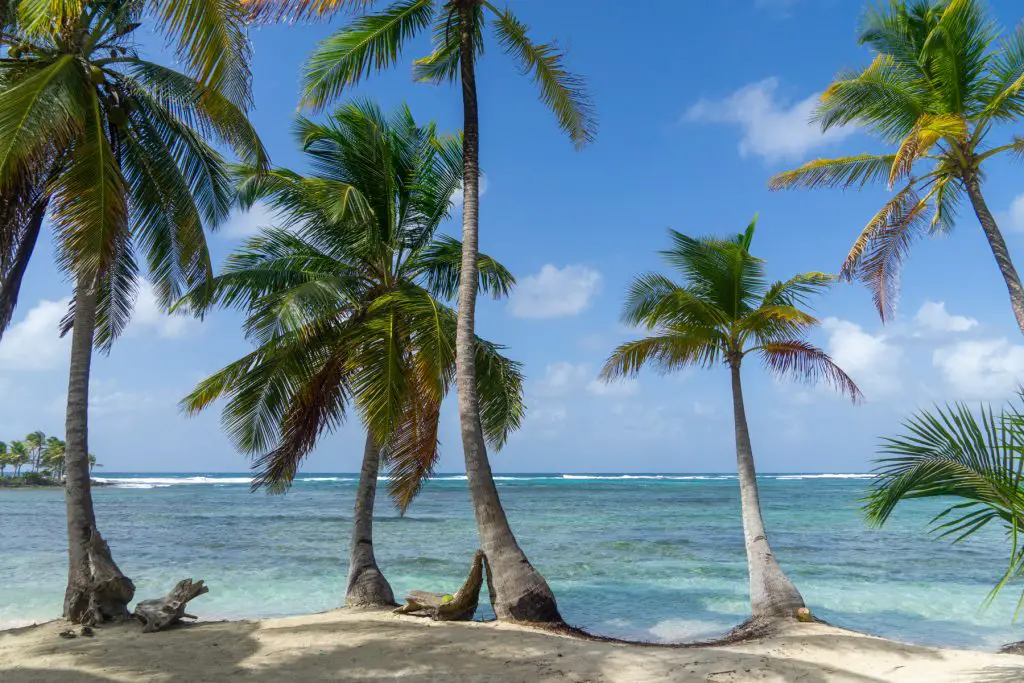
Panama City – 1 night
Day 4 – Enjoy a couple more hours in San Blas paradise that morning before you embark on your journey back to Panama City. You will likely arrive back in the city early evening. Grab some food close to your accommodation when you arrive and pack up your stuff ready for a new destination tomorrow.
Bocas del Toro – 2 nights
Day 5 – Take a morning flight to the Bocas del Toro archipelago. Once you arrive on Isla Colón, head out to Starfish Beach . If you have arrived early, consider getting a colectivo to the beach and doing the hike. Alternatively, you can pay for a water taxi to take you there. (This is the quicker option.)
Spend the remainder of the day enjoying the beautiful beach and spotting starfish. If you are lucky enough to see these wonderful animals, do not touch them – it can be harmful .
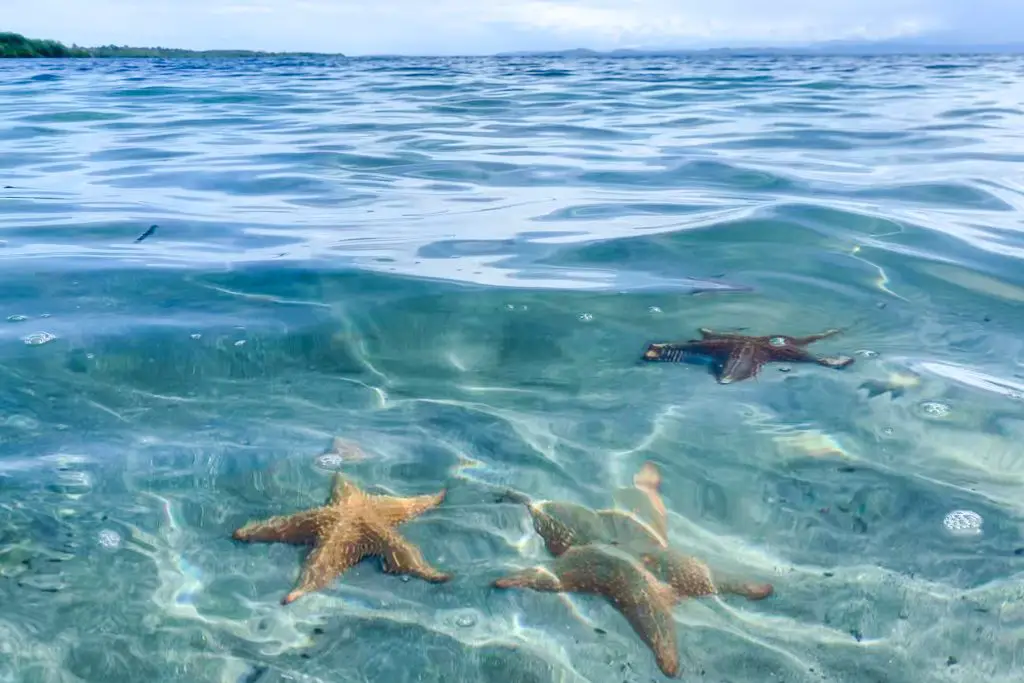
Return to Bocas Town and head off to the famous floating bar for a few drinks. Enjoy food, drinks and an epic sunset here. After this, grab a water taxi back to your accommodation in Isla Colón.
Recommended accommodation on Isla Colón:
- Koko Acqua Lodge
- Azul Bocas Town
- Hotel Bocas Town
Also read: Things to Do in Bocas del Toro, Panama
Day 6 – Head out on a day trip to Cayos Zapatilla. Depending on the tour that you choose, you will likely stop at a few notable places in the archipelago on your way to this beach paradise. Once you get there, enjoy sunning yourself on the sand and taking in the magnificent views.
Depending on your flight on the final day of your trip, you can either return to your accommodation in Bocas Town, ready to fly out of the archipelago early tomorrow morning or catch a water taxi to Isla Bastimentos.
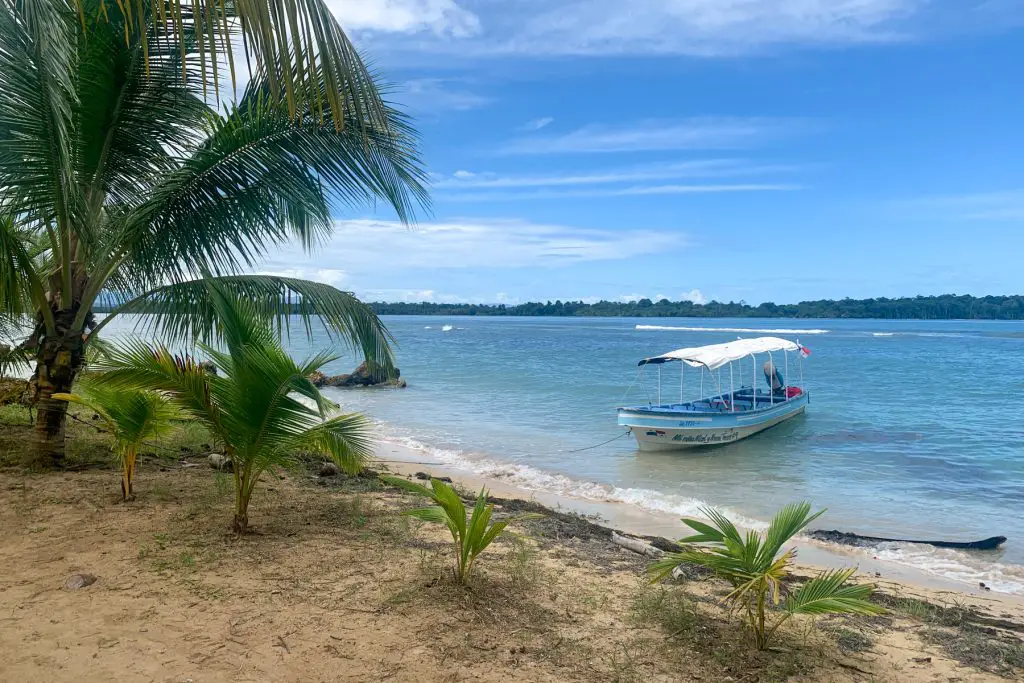
If you are leaving Panama late the following day, I’d advise heading to Bastimentos Island overnight so you can see a little more of what the archipelago has to offer. Visit the Firefly Restaurant for a delicious seafood dinner before turning in.
Recommended accommodation on Isla Bastimentos:
- La Loma Jungle Lodge
- Selina Red Frog
- Palmar Beach Lodge
Day 7 – Those with an early morning flight will need to make their way to the airport in Bocas Town to fly back to Panama City before catching their connecting flight home.
If your flight leaves Bocas later that day and you are on Isla Bastimentos, head to the beautiful Red Frog Beach and spend the morning sunning yourself or doing yoga on the hidden deck.
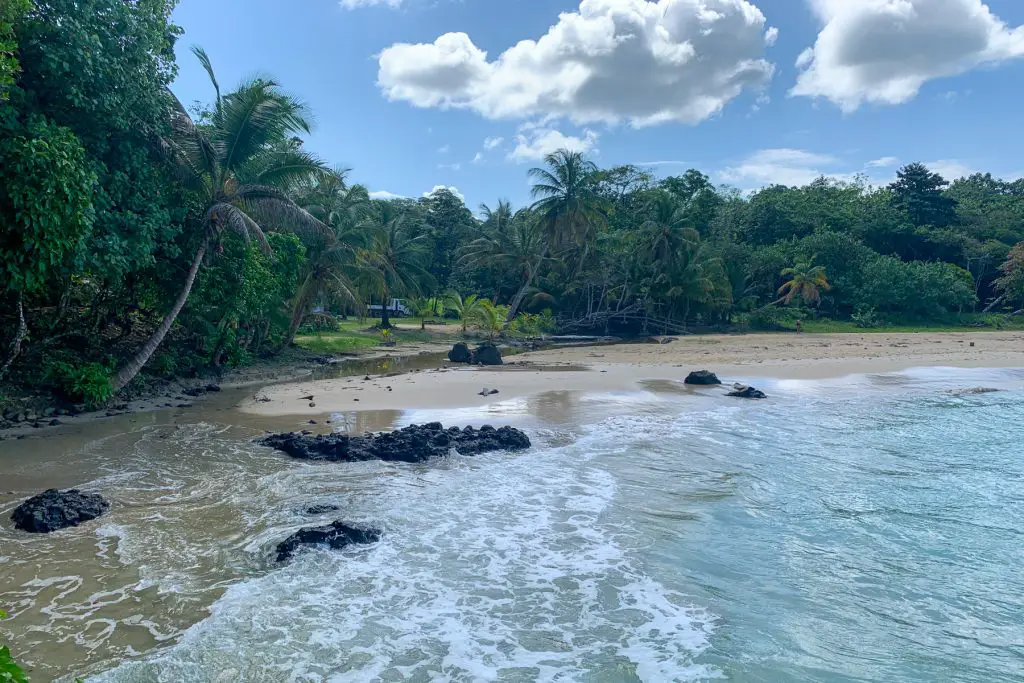
Catch a water taxi back to Bocas Town for lunch. Cafe del Mar is a great eatery with a range of dishes to suit various dietary requirements. After lunch, grab a taxi to the airport and hop on board your return flight to Panama City.
10-Day Panama Itinerary
If you have ten days, follow the above week-long Panama itinerary but add Boquete into the mix. Instead of flying from Panama City to Bocas del Toro , head from the capital to the mountain town of Boquete.
You can either get a bus from Panama City, transferring in David or fly to the city of David and catch a bus from there to save time.
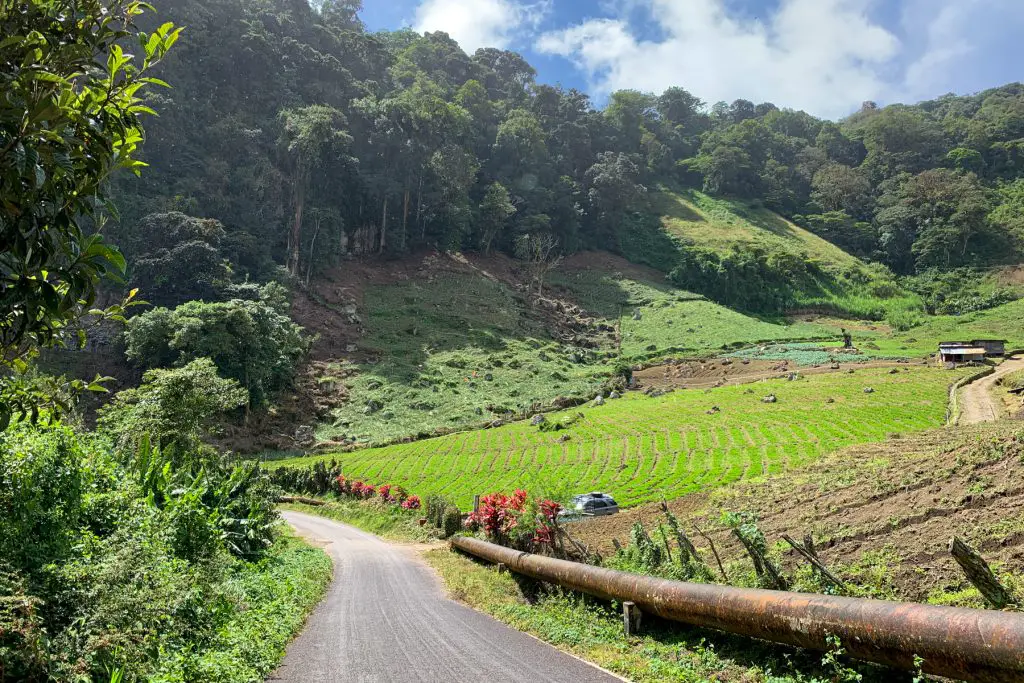
Spend two nights in Boquete, enjoying the cooler climate and incredible hiking opportunities. There are countless amazing treks in Boquete but I would wholeheartedly recommend you do at least one of the following:
- Volcan Baru (overnight trek)
- Pipeline Trail
- El Pianista
- The Lost Waterfalls
Spend your second day at Boquete Tree Trek where you can take on Panama’s Hanging Bridges , go zip lining over the cloud forest or embark on a coffee tour.
When your time in Boquete comes to an end, arrange a transfer from Boquete to Bocas del Toro – these can be booked with various tour agencies across town. From here, pick up the above Panama itinerary again. Those spending 10 days in Panama should spend an extra night on Bastimentos Island on Bocas del Toro, and use the extra time during the day to explore the incredible Nivida Bat Cave .
Recommended accommodation in Boquete:
- Selina Boquete
- Boquete Garden Inn
- Bambuda Castle
Also read:
- Best Places to Stay in Boquete, Panama
- Getting From Panama City to Boquete
- Things to Do in Boquete, Panama
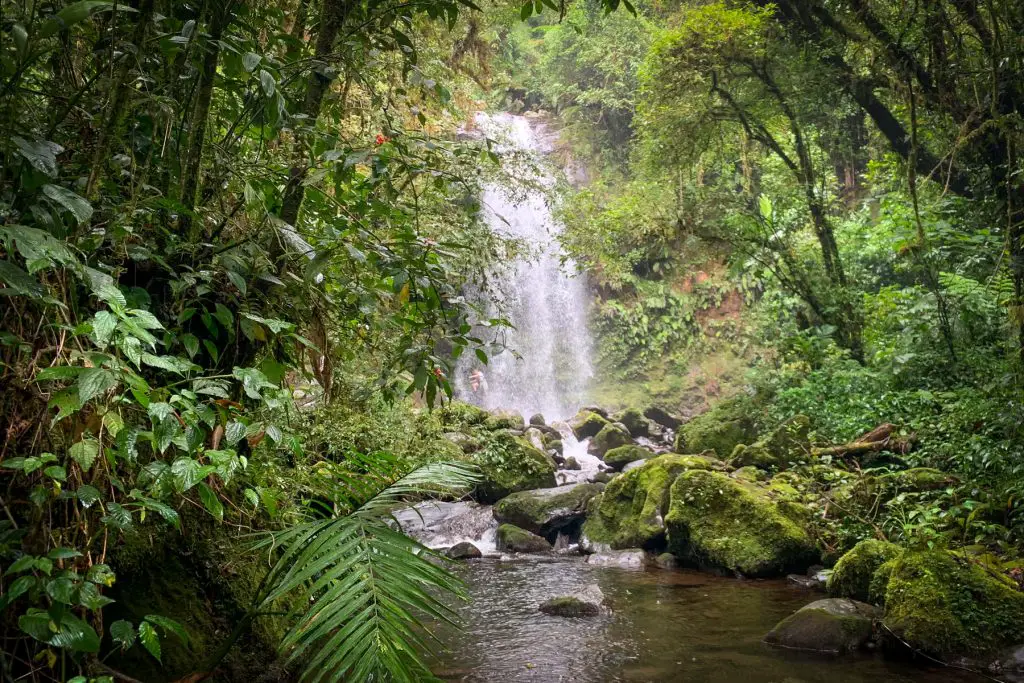
Panama Itinerary FAQ
How many days are enough in panama.
In my opinion, the longer the better! While a week or 10 days will provide a good introduction to this country, I’d recommend staying at least a month if you want to get off the beaten track a little too.
Is Panama cheap or expensive?
Panama is not the cheapest country in Latin America nor is it the most expensive. The United States Dollar is commonly used in Panama which keeps prices comparatively high. For a reference point, Panama is cheaper than Belize and Costa Rica but more expensive than Colombia.
Are two weeks enough for Panama?
Two weeks is an ideal length of time for vacationers visiting Panama. If you are staying for two weeks, follow the one-week Panama itinerary and double the amount of time spent in each place. You will certainly find plenty of interesting attractions and activities to fill your time!
Which of these Panama itineraries are you choosing? Share the highlights from your trip in the comments!

- What does a trip to Panama cost in 2024?
by Kimberly | 0 comments
“Panama is more expensive than Mexico, but cheaper than Costa Rica.” But what does that mean in concrete terms, and which budget should you keep reserved?
We just got back from Panama and tracked the costs for you! We traveled in peak season 2024, the entire month of February.
- This is how the course stood during our trip
$ 1 = € 0,92 // € 1 = $ 1,09
In this article, we sometimes round off amounts.
What do airline tickets cost?
Airline tickets to panama, how long in advance to book, domestic flights, total cost of flights, what does transportation cost, cabs and collectivos, renting a car, total cost of transportation, how much does accommodation cost, total cost of accommodations, excursions / activities, multi-day excursion in san blas, total cost of excursions, what does food & drink cost, what does alcohol cost in panama, other costs, getting the laundry done, insect spray, bank fees in panama, total bank charges, conclusion: what does a month of travel in panama cost, what does panama cost per person per day.

We flew from Brussels to Panama with Iberia, with a layover in Madrid.
Cost including 23 kg of checked baggage: € 720 per person. Are you doing almost the same distance, but you’re traveling without checked baggage? Then you are sure to find airline tickets for up to €600.
After keeping an eye on prices for some time, we decided to book the tickets 7 months in advance, partly because we were stuck with certain dates. But was it cheaper in the end? We kept tracking the prices, they went up and down from time to time, up to €40 per person less.

Panama is not that big, so it is not really necessary to take a domestic flight. But if you want to make the whole tour AND don’t feel like taking the 12-hour long night bus from Bocas del Toro, a domestic flight is convenient.
In just one hour, we flew with Panama Air from Panama City to the archipelago of Bocas del Toro. In fact, it became my most beautiful flight ever!
You can book the flight up to a short time in advance. However, we did this several months in advance, especially since we would be going during the busy carnival period. The flight only goes a few times a day. We chose the 1 p.m. flight, which worked out perfectly with our check-out and check in times.
These are small planes that hold up to only 50 people, so if you want a guaranteed seat, it’s best to buy tickets as soon as you know your schedule.
The flight from Panama City to Bocas del Toro has cost us €95 per person, including checked baggage. Without checked baggage, this would be about €60.
In total, two of us paid €1,738.49 on the international flight, domestic flight and airport parking (for a month).

You can travel all over the country by bus, and it’s quite cheap too. Some examples:
- Bocas del Toro – Panama City: $28 – a 12-hour trip
- Santa Catalina – Sona: $4.85 – a 2-hour trip
- Sona – Panama City: $10 – a 5-hour trip
Panama City is also home to the so-called “Diablo rojos,” colorful, old American buses. Those cost you only 50 cents per ride. A ride on the regular bus costs one dollar.
A shuttle is more expensive than the regular bus, but usually, also a lot faster. You are often picked up at your hotel and dropped off at your next hotel.
- Bocas del Toro – Boquete: $30 + 7% VAT
- Boquete – Santa Catalina: $35 + 7% VAT
- Santa Catalina – Panama City: $60
Prices seem to be pretty much the same everywhere, so it doesn’t matter whether you book the shuttles online or at a local office. We booked our shuttles from Bocas del Toro to Boquete, and from Boquete to Santa Catalina through Hello Travel Panama . From Santa Catalina to Panama City, we took the regular bus.

In Panama City , cab prices are negotiable and keep in mind to arrange a price on forehand. We find Ubers easier, and so we took mostly Ubers. Twice we took a cab, and then we kept Uber as a target price and went only a little above. Within the city, you often spend no more than $3 to $5 dollars. The longest trip was from Panama City to Gamboa, about 45 minutes, this cost us $20.
In Boquete , there seemed to be less room for negotiation because there was sometimes more demand than supply. There, we just accepted the price they quoted. To a trail a few miles out of the center, this was often no more than $6 to $8 for the two of us.
In Bocas del Toro , there are shared cabs and fixed prices. For example, we paid $2 per person from Nowhere to the center of Bocas Town. Only at night it can be a little more expensive. A water cab often costs around $5 per person.
A collectivo , a kind of shuttle for short distances and which runs at certain times, usually costs $2.50.

We normally rent cars through Sunnycars. Here you have maximum insurance, so there is never any hassle in case of damage or an accident. Many people rent a car in Panama City and return it in the town of David, near Boquete.
A rental car makes your trip a lot more expensive, but of course it gives you a lot of freedom too. For a rental car, including all-in insurance, you will spend about €50 per day.
Check car rental prices through Sunnycars here. You can always cancel free of charge up to 1 hour before the rental start.
We only wanted to rent a car for one day when we were in Boquete. We did this at Boquete Cowboy Cars , which we also had a very good experience with. This cost us $50, including a $10 one-time cleaning fee.
In total, two of us paid €379.79 for the shuttles, a rental car (1 day), Ubers, (water) cabs and buses.

Accommodation is fairly pricey in Panama, but also depends on the “luxury” you want.
If you settle for a dorm, you’re pretty cheap in Panama. For €15 to €35 you will find something nice. If you want a private room with shared bathroom, you pay on average between €35 and €50 per night. For a hotel room with private bathroom, you can go as crazy as you want, but often starting at €50. Our cheapest room was €59 and the most expensive €137.
The most convenient thing to do is to set a budget in advance. Thus, I wanted to spend an average maximum of €95 per night on hotels (we had something to celebrate 😉 ). Not counting San Blas.
In Bocas del Toro, we slept in a kind of hobbit house. Then in a cottage on the water, in Boquete we slept in a castle and in Panama City we always had a view of the skyline. In other words, we did it pretty crazy this trip in terms of accommodation, and so this can be much cheaper.
For €70 to €80 a night, you’re already pretty luxurious, and especially if you book early.
In total, we paid €2,299 in accommodations for 24 nights with 2 people. That comes out to €95.79 per night. These were all beautiful accommodations in prime locations.
We made some last minute changes that made some hotels more expensive AND we opted at the end for a super-deluxe stay in a beautiful nature reserve, which cost no less than €137 per night, including breakfast. We do have to mention that all the most expensive hotels had breakfast included.
We did not include San Blas in these calculations, you will find that cost in the next section.

Excursions take up a fairly large portion of the budget in Panama. Below we show some prices of the excursions per person. We did not do all the excursions ourselves 😉
- Guided India Vieja hike: $45
- Zip line: $65 + $15 for a USB with the photos
- White water rafting: $65
- Coffee tour: $30
- Access The Lost Waterfalls trail: $10
- Access The Pipeline trail: $5
Bocas del Toro
- Zapatilla Island: $30
- ATV rental full day + jungle access + gasoline + 2nd person: $155
- bioluminescent plankton excursion (bioluminescent plankton): $30
Santa Catalina
- Coiba snorkel day tour: $80 – $100 depending on provider + $20 National Park fee
- Coiba dive day tour: $150 + $20 National Park fee
- Boat to Isla Catalina (return) $30
- Kayak rental all day: $40
- Surf lesson: $35
- Surfboard rental all day; $10
Panama City
- Emberra + monkey island + transfer Panama City: $120
- Poin Panama: $80
- Entrance Panama Viejo: $15
- Aerial streetcar: $45 + 7% VAT
- Bike rental at the Chino: $6 + $4 per hour

San Blas was perhaps the most expensive excursion we have ever done and immediately the longest and most inclusive. A visit to the San Blas Islands cannot be missed when you go to Panama. At least, if you like bounty islands.
If you start researching prices, you will see that there are a lot of options. Ranging from $130 for a day tour to $510 for 4 nights. Per person yes.
We opted for the “3 days, 2 nights” tour, and even then there are huge choices. But what is the difference? Prices are based on the island’s beauty factor, accommodation options, size and quality of food. Actually, cheap is expensive here. If you decide to do this expensive tour, do not choose the cheapest one, because chances are it will be a bad experience.
We chose the Yanis Island and the private over water bungalow.
Cost: $270 per person. Includes transportation, 6 meals and tours. There is also an additional $23 per person as an “entrance fee” to the Kuna Yala area. You can read more about my experience on San Blas here.
In total, for two people, we paid €1,388.72 in excursions and entrance fees. This includes the San Blas excursion that took up more than a third of the budget.

For a good breakfast in Panama, you pay between $6 and $10.
A normal dinner in a restaurant costs between $10 to $15. If you eat in a “fonda,” a place where mostly locals eat, you will spend between $4 and $8 per meal. In Panama, you also see many Mexican restaurants, where you generally spend $4 per taco.
A burger at a stand usually costs $5, a dollar more if you want cheese on it.
Soft drinks or a juice costs about $2. Half a liter of water will cost you $0.50, $1 for one liter, and $2 for two liters.
Our restaurant costs went up seriously in Gamboa. There you pay $30 per person + 7% VAT for the dinner buffet.
Want to do your own shopping? Pay close attention to supermarket prices, as some products can be quite expensive. For example, cheese is very expensive. Usually they do sell individual cheddar slices, so you don’t spend $10 all at once. But even strawberries and vegetables, for example, are much more expensive there than here in Belgium! Our “money-saving” lunch meal from the supermarket was often hot dogs. Not expensive and super tasty!

A national beer (Balboa) from the supermarket will cost you about $1 in Panama.
At bars or restaurants, a beer usually costs $2.50. With outliers of up to $5 at the fancier spots, such as a rooftop bar in Panama City or Gamboa. On San Blas, we paid $2 a can of beer.
Wine often costs $6 a glass; one time we found it for only $4. In the supermarket, you can find bottles of wine starting at $6.
A cocktail costs between $6 and $15 dollars, depending on the location and view.

Those who travel more than 3 weeks will undoubtedly have their laundry done. This usually costs $10 per bag. What is considered a bag? When you go grocery shopping, you most likely buy a green, reusable bag, that size is counted as one bag.
You usually get your laundry back within a few hours, ironed and folded. Tip: don’t bring clothes that are too tight, chances are your clothes will shrink slightly in the dryer 😉
We bought an eSIM in Panama instead of a physical SIM card. This one was slightly more expensive than buying a SIM card locally. This cost me $32. 50 for 5 GB on 30 days.
Do you also want an eSIM? Through Airalo , get $3 off with the code: KIMBER7371
DEET or insect repellent is better bought in Panama, not in Belgium, or other non-tropical countries. We were advised to OFF Deep Woods spray by locals, and it also turned out to work super well. In our opinion, the orange version worked a lot less well.
We paid $8.75 a bottle and used up two during our month in Panama.
In Panama, it is normal to tip if you are satisfied. About 10% is “normal. Wages are quite low and life in Panama is comparatively expensive, so a tip is greatly appreciated by locals.

Cash withdrawals in Panama cost $6.50 each time, and you can withdraw a maximum of $250 per transaction. Only once we find an ATM that charged only $5.50.
In most restaurants and hotels you can just pay by card, which cost us nothing extra thanks to Wise & Revolut .
We were able to save a lot of money in bank fees thanks to our Wise and Revolut cards. Had we done this through our own Belgian banks, we would have lost a lot more. Read more about it here!
In total, we paid €125 in local bank fees + fees applicable at Revolut and Wise. Spread over 8 $250 withdrawals.
In total, our 4-week trip to Panama for 2 people cost about €7,500. Our breakdown:
- Flights + parking: €1,738.49
- Accommodations: €2,299
- Excursions: €1,388.72
- Transportation: €379.79
The above added up to €5,787.59. That means we additionally gained €40 per person per day on food, drinks, tips, laundry, souvenirs and other groceries.
We spent €110 per person per day – not including airfare. But there’s a big caveat to that. We did lots of cool excursions, slept in special hotels in the best locations, often took shuttles instead of public transportation, went out a few times and drank lots of beers.
Sometimes we did eat in fondas, made our own breakfast/lunch, and bought alcohol from the supermarket.
Last but not least, it was high season, and also during the week of Carnival, which also drove up prices.
So this can be much cheaper, especially don’t be put off. You can easily save on accommodation, transportation, excursions and other expenses. For €60 per person per day, you certainly can travel in Panama.
Panama may not be the cheapest country, but you can make it as expensive or cheap as you want!
- Nederlands ( Dutch )
- Car Rentals
- Airport Transfers
- Attractions & Tours
- Bundle & Save
- Destinations
- Trip.com Rewards
Discover the Hidden Gems of Panama: Unveiling the Trip to Panama Cost 2024

by Trip.com
August 1, 2023
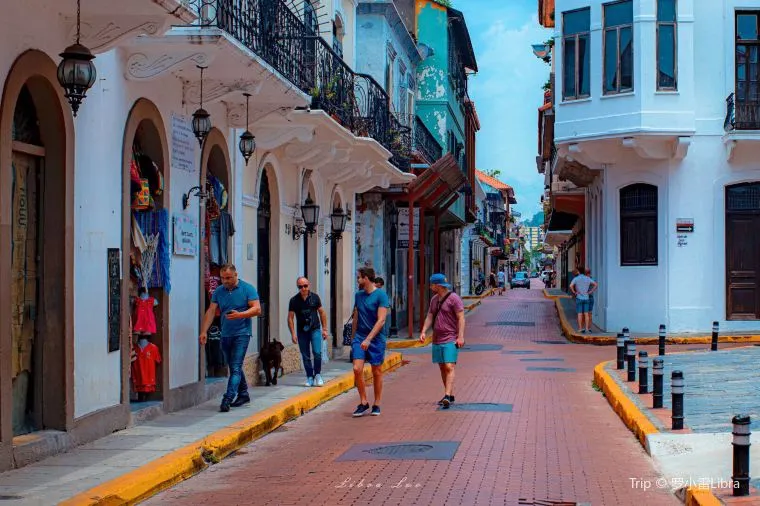
Planning a trip to Panama? Wondering about the cost? Look no further! In this article, we'll give you the lowdown on the trip to Panama cost and share some amazing tips to save money without compromising on quality. From hotels to food, souvenirs to transportation, we've got you covered. So, let's dive in and discover how you can make the most of your trip to Panama without breaking the bank!
When it comes to the cost of a trip to Panama, there are a few key factors to consider. Let's break it down for you:
Flights: The round-trip ticket cost to Panama can range from $300 to $800, depending on the season and your departure location.
Accommodation: Whether you're looking for budget hotels or luxurious resorts, Panama has options for every traveler. Prices can range from $20 to $300 per night.
Transportation: Panama boasts an extensive and efficient public transportation system, with one-way subway or train tickets costing around $0.35 to $1.50.
Food: From budget-friendly eateries to mid-range restaurants, Panama offers a variety of dining options. You can expect to spend around $5 to $30 per person for a meal.
Now, let's talk about how much you can expect to spend per day in Panama. For budget travelers, a daily budget of $30 to $50 should be sufficient to cover accommodation, food, transportation, and some activities. Mid-range travelers can expect to spend around $80 to $150 per day, allowing for a bit more comfort and indulgence. Remember, it's always a good idea to plan ahead and research activities and costs to create a budget that works for you. So, get ready to embark on an unforgettable adventure in Panama without breaking the bank!
- How much does it cost for 2 nights and 3 days when traveling to Panama?
Hey there, fellow travelers! Planning a trip to Panama and wondering how much it'll cost you for a 2-night, 3-day adventure? Well, hold on tight because we're about to break it down for you. The cost of your trip can vary depending on a few factors like your travel style, choice of accommodation, transportation, and activities. But fret not, we've got a rough estimate for you budget-savvy explorers.
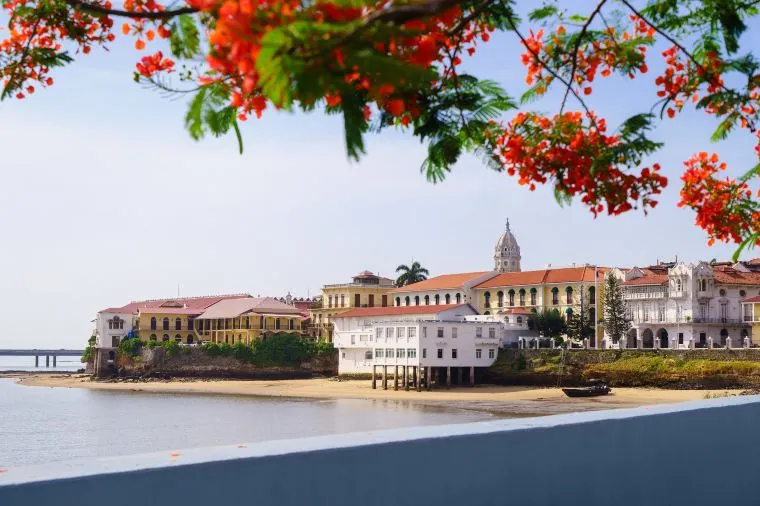
Let's start with flights, shall we? The cost of a round-trip ticket to Panama from major cities around the world can range anywhere from $400 to $1500, depending on where you're flying from and the time of year you're traveling. So, be sure to keep an eye out for those sweet deals!
Now, onto accommodation. If you're looking for budget-friendly options, you can find decent hotels for as low as $30 to $60 per night. That means for 2 nights, you're looking at a total cost of $60 to $120. Not too shabby, right?
When it comes to transportation, Panama offers various options. If you're planning on exploring the city, a one-way subway or train ticket will cost you around $0.35 to $1.50. So, for 3 days of getting around, you can expect to spend roughly $2 to $9. Not bad at all!
Now, let's talk about food and drinks. If you're on a budget, you can find meals at budget restaurants for around $5 to $10 per meal. But here's a little secret – street food and convenience store meals can cost even less! As for drinks, prices can vary depending on the type of drink and location. You can expect to spend around $1 to $5 per drink. So, for 3 days of delicious eats and refreshing drinks, budget around $60 to $150.
When it comes to sightseeing and activities, Panama has plenty to offer. There are popular attractions that may be free or have a small entrance fee of around $2 to $10 per person. If you're up for some splurging, there are other attractions that might cost a bit more, ranging from $20 to $50 per person. So, for 3 days of exploring the wonders of Panama, budget around $30 to $100.
So, to sum it all up, for a budget traveler looking for a 2-night and 3-day trip to Panama, you can expect to spend roughly $500 to $1500. Keep in mind that these are just rough estimates and your actual costs may vary depending on your travel style, activities, and other expenses.
Now that you have an idea of the trip to Panama cost, it's time to pack your bags and get ready for an unforgettable adventure in this beautiful country.
- How much does it cost for flights when traveling to Panama?
Planning a trip to Panama? One of the first things that comes to mind is the cost of flights. But here's the thing – the cost can vary depending on a multitude of factors. So, let's dive into the nitty-gritty and explore what influences the price of flights to this captivating country.
When it comes to booking flights, several factors come into play. Your departure location, the time of year, the airline you choose, and even the availability of tickets can all impact the cost. So, let's break it down and give you a general idea of what to expect in terms of prices.
If you're departing from major cities around the world, the cost of flights to Panama can range quite a bit. Keep in mind that these figures are in US dollars and are subject to change:
1. One-way tickets:
- Economy class: Prices can start from as low as $300 and go up to $800 or more.
- Premium economy class: Expect to pay between $600 and $1,200.
- Business class: Prices range from $1,200 to $2,500 or more.
- First class: Prepare to splurge between $2,500 and $5,000.
2. Round-trip tickets:
- Economy class: Prices can vary from $500 to $1,500.
- Premium economy class: Expect to pay between $1,000 and $2,400.
- Business class: Prices range from $2,400 to $5,000 or more.
- First class: Prepare to indulge yourself with prices starting from $5,000.
Remember, these prices are just a general range, and they can fluctuate depending on the factors we mentioned earlier. It's always a good idea to compare prices from different airlines and consider booking in advance to secure the best deals.
So, whether you're a budget traveler or looking to experience luxury in the skies, there's a flight option for everyone heading to Panama. Just keep in mind that prices can vary, so it's essential to plan ahead and be flexible with your travel dates if possible.
Now that you have an idea of the flight costs, it's time to pack your bags and get ready for an unforgettable adventure in Panama!
- How much does it cost for hotels when traveling to Panama?
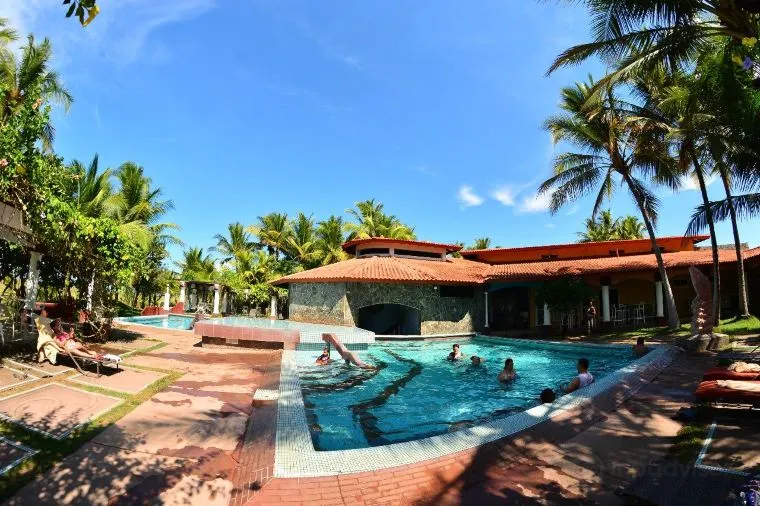
Planning a trip to Panama? One of the key aspects to consider is the cost of accommodation. The price of hotels in this beautiful country can vary depending on several factors, such as the location, season, and the type of accommodation you are looking for. Let's dive into the details to help you plan your stay.
When it comes to major cities like Panama City, David, and Colon, it's important to keep in mind that hotels tend to be more expensive compared to smaller cities or rural areas. The bustling urban centers offer a wide range of amenities and attractions, which often come with a higher price tag. On the other hand, if you're seeking a more budget-friendly option, exploring smaller towns and rural areas can be a great alternative.
In major cities like Panama City, the average cost range for a mid-range hotel room per night can be anywhere from $80 to $150. If you're looking for a luxurious experience, be prepared to spend around $200 to $400 per night for a high-end hotel room. These prices may vary depending on the location within the city and the time of year you plan to visit.
On the other hand, in smaller towns and cities like Boquete, Bocas del Toro, and Santa Catalina, the cost of accommodation tends to be more affordable. A mid-range hotel room in these areas can range from $50 to $100 per night, while a luxury hotel room can cost between $150 and $250 per night. These prices offer a great opportunity to explore the beauty of Panama without breaking the bank.
It's important to note that these price ranges are approximate and can vary depending on various factors. It's always a good idea to do some research and compare prices before making your final decision. Additionally, keep in mind that booking in advance and taking advantage of seasonal promotions can help you save some extra bucks.
So, whether you're planning to explore the vibrant city life or immerse yourself in the tranquility of smaller towns, Panama offers a range of accommodation options to suit every traveler's budget.
- How much does it cost for food when traveling to Panama?
When planning a trip to Panama, it's important to consider the cost of food and dining. The prices can vary widely depending on several factors, including the type of food, the restaurant's location, and the level of formality or luxury. So, let's dive into the delicious details!
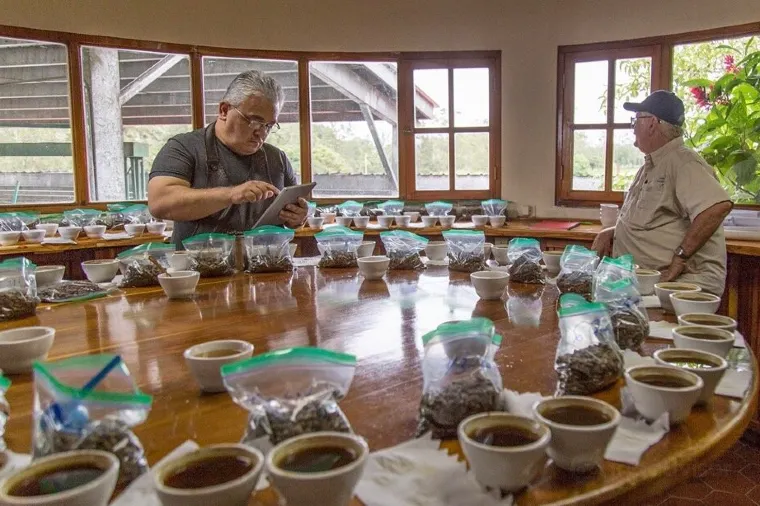
When it comes to food in Panama, you'll find a wide range of options to satisfy your taste buds. From street food and fast food joints to casual local restaurants and even mid-range and high-end establishments, there's something for every budget.
Here's a breakdown of the price ranges you can expect in US dollars per meal:
- Street food or fast food: $1 - $5
- Casual dining or local restaurants: $5 - $15
- Mid-range restaurants: $15 - $30
- High-end or luxury restaurants: $30 and above
As you can see, there are affordable options available, especially if you're willing to explore the local street food scene or opt for casual dining experiences. Additionally, convenience stores and supermarkets offer a variety of affordable food options for those on a tighter budget or looking for a quick bite.
Now, let's talk about tipping. In Panama, tipping is not as common as in some other countries. However, it is appreciated if you receive exceptional service. A general guideline is to leave a 10% tip if you feel the service was outstanding. But remember, it is not obligatory, so use your discretion.
So, whether you're a foodie looking to indulge in culinary delights or a budget-conscious traveler seeking affordable options, Panama has something for everyone. Enjoy exploring the vibrant food scene and savor the flavors of this beautiful country!
- How much does it cost for souvenirs when traveling to Panama?
Well, let me tell you, amigo, the cost of souvenirs in Panama can vary like the weather in the rainy season. It all depends on what you're after, where you're shopping, and the quality you're looking for. From colorful molas to handcrafted Panama hats, there's something for everyone. Take a gander at this image below, showcasing the vibrant diversity of Panamanian souvenirs.
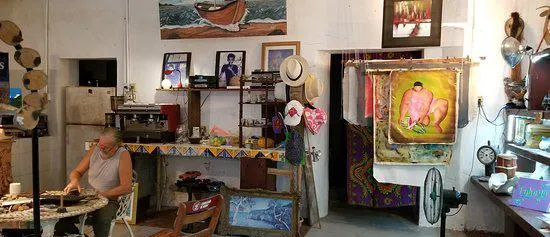
Now, let's dive into some examples, shall we? Brace yourself, because these prices might surprise you. A traditional mola, a stunning piece of textile art made by the Kuna indigenous people, can range anywhere from $20 to $200. If you're in the market for a genuine Panama hat, be prepared to shell out between $50 and $300, depending on the quality and craftsmanship. For those with a sweet tooth, a box of delicious Panamanian chocolate can set you back around $10 to $30. And if you're a fan of rum, a bottle of the famous Ron Abuelo can be yours for $20 to $50.
Now, here's the scoop, my friend. While many souvenir shops in touristy areas have fixed prices, there's still hope for the savvy negotiator. Head on over to flea markets or antique shops, and you might just strike a deal. Remember, haggling is an art form, so don't be afraid to flex those negotiation muscles. So, the next time you're planning a trip to Panama, keep in mind that the cost of souvenirs can vary, but with a little bit of charm and some bargaining skills, you'll be able to bring home a piece of Panama without breaking the bank.
- How much does it cost for transportation when traveling to Panama?
Planning a trip to Panama? One of the important factors to consider is the cost of transportation. Whether you're exploring the vibrant city of Panama City or venturing into the lush rainforests, understanding the transportation costs can help you budget your trip effectively. So, let's dive into the details!

The cost of transportation in Panama varies depending on the mode of transportation and the distance traveled. Let's take a look at some estimated cost ranges in US dollars for different types of transportation:
- Train: Panama does not have an extensive train network, so train travel options are limited. However, if you happen to come across a train ride, it can cost around $5 to $10 for shorter distances.
- Subway: Panama City offers a modern metro system, known as the Panama Metro. The fare for a single trip on the subway ranges from $0.35 to $0.70, depending on the distance.
- Bus: Buses are a popular mode of transportation in Panama, with an extensive network covering both urban and rural areas. The cost of a bus ride can range from $0.25 for short distances within the city to $5 for longer intercity trips.
- Taxi: Taxis are readily available in Panama, especially in urban areas. The fares are metered, and the starting rate is around $1.50. Additional charges may apply for luggage or late-night rides.
- Rental Car: If you prefer the freedom of driving yourself, renting a car is an option. Rental car prices vary depending on the vehicle type and rental duration. On average, you can expect to pay around $30 to $50 per day.
Now, you might be wondering if Panama offers any transportation passes or discount tickets for visitors. Well, the good news is that Panama does have some options to make your travel more affordable. For example, the Metrobus card allows you to pay a reduced fare for bus rides within Panama City. Additionally, the Panama Metro offers a reloadable card called the "Tarjeta Multiuso" that provides discounted fares for subway rides.
These passes and discount tickets can be a great value if you plan to do a lot of traveling in a short period. They not only save you money but also make your transportation experience more convenient.
So, when planning your trip to Panama, don't forget to consider the cost of transportation. By understanding the different transportation options and their associated costs, you can make informed decisions and ensure a smooth and budget-friendly journey.
- How much does it cost for sightseeing when traveling to Panama?
Planning a trip to Panama and wondering about the cost of sightseeing? Well, hold on tight because we're about to take you on a thrilling journey through the expenses you might encounter while exploring this beautiful country. From stunning beaches to lush rainforests, Panama offers a wide range of attractions that will leave you in awe. But before we dive into the details, let's set the stage with a captivating image of what awaits you:
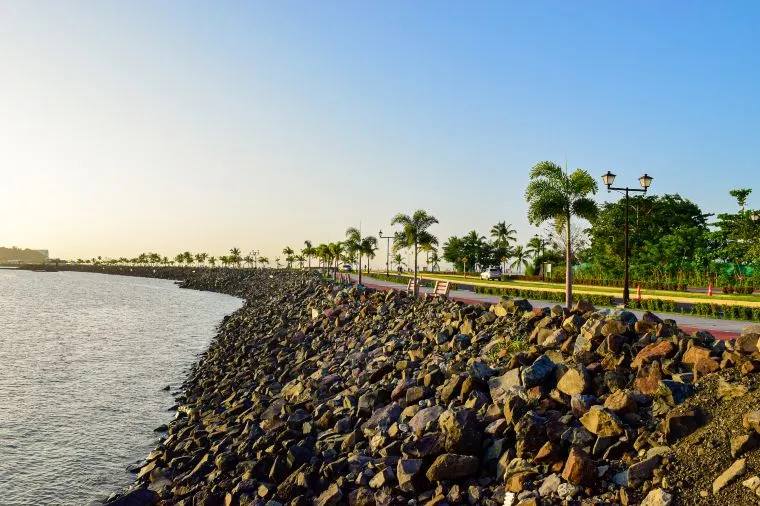
When it comes to the cost of sightseeing in Panama, it's important to note that prices can vary widely depending on the location, attraction, and activity you choose. To give you a better idea, here are six to eight popular tourist spots and their corresponding cost ranges in good old US dollars:
- The Panama Canal: $15 - $30 for a guided tour
- San Blas Islands: $25 - $150 for a day trip
- Bocas del Toro: $5 - $20 for a boat tour
- Boquete: $10 - $50 for a coffee plantation visit
- Panama City's Casco Viejo: Free - $10 for a walking tour
- Gamboa Rainforest: $30 - $100 for a jungle adventure
- Pearl Islands: $50 - $200 for a luxury island getaway
- Volcan Baru: $5 - $20 for a hiking expedition
Now, let's shed some light on the fact that Panama also offers numerous free or low-cost sightseeing options. Yes, you read that right! You don't always have to break the bank to experience the wonders of this country. Here are a few examples of budget-friendly activities:
- Exploring the vibrant street art scene in Panama City
- Visiting the local markets and indulging in delicious street food
- Taking a leisurely stroll along the Amador Causeway
- Discovering the historical treasures of Panama Viejo
- Relaxing on the picturesque beaches of Santa Catalina
So, whether you're a budget-conscious traveler or ready to splurge on unforgettable experiences, Panama has something for everyone. The cost of sightseeing may vary, but the memories you'll create will be priceless. Start planning your trip to Panama today and get ready to embark on an adventure like no other!
- How much does it cost for Wi-Fi & communication when traveling to Panama?
When planning a trip to Panama, it's essential to consider the cost of staying connected. Accessing Wi-Fi in Panama can be a breeze, but it's important to know the options and associated costs. Let's dive into the different ways you can get online and communicate while exploring this beautiful country. Firstly, one option is to rent a Wi-Fi router. Depending on the rental company and plan you choose, prices can range from $5 to $15 per day. This allows you to have a portable Wi-Fi hotspot wherever you go, ensuring you're always connected. Another option is to purchase a SIM card. Prices for SIM cards vary depending on the data plan and provider you select. You can expect to pay anywhere from $10 to $30 for a SIM card with a data plan that suits your needs. This option is great if you have an unlocked phone and want to use local networks for internet access. If you're looking for free Wi-Fi, Panama has got you covered. Many hotels and accommodations offer complimentary Wi-Fi for their guests, so be sure to check before booking. Additionally, some smartphone apps like "Wi-Fi Finder" and "Instabridge" provide access to free Wi-Fi hotspots throughout Panama, making it easier to stay connected without breaking the bank. It's important to note that the cost of Wi-Fi in Panama can vary depending on the method of access and the data plan you choose. However, with the multitude of options available, travelers can find a solution that fits their budget and keeps them connected throughout their journey. So, whether you're sharing your adventures on social media or staying in touch with loved ones back home, staying connected in Panama is both convenient and affordable.
- How much does it cost for visa when traveling to Panama?
Planning a trip to Panama? Well, let's talk about the cost of visas and passports! When it comes to traveling to Panama, the cost of visa applications can vary depending on your country of citizenship and the type of application. It's important to note that some countries may even offer visa-free access, saving you the hassle and expense of applying for a visa altogether. However, for those who do require a visa, let's dive into the numbers. For example, citizens from the United States can expect to pay around $160 for a tourist visa, while citizens from Canada may have to shell out approximately $50. These figures are just a glimpse into the wide range of costs you may encounter. Keep in mind that visa application fees can also be subject to change, so it's always wise to check with your local embassy or consulate for the most up-to-date information on passport and visa requirements and fees. Oh, and don't forget, some countries might have additional fees for visa applications or other travel documents, so it's best to be prepared for any surprises along the way. Happy planning!
- How much does it cost for insurance when traveling to Panama?
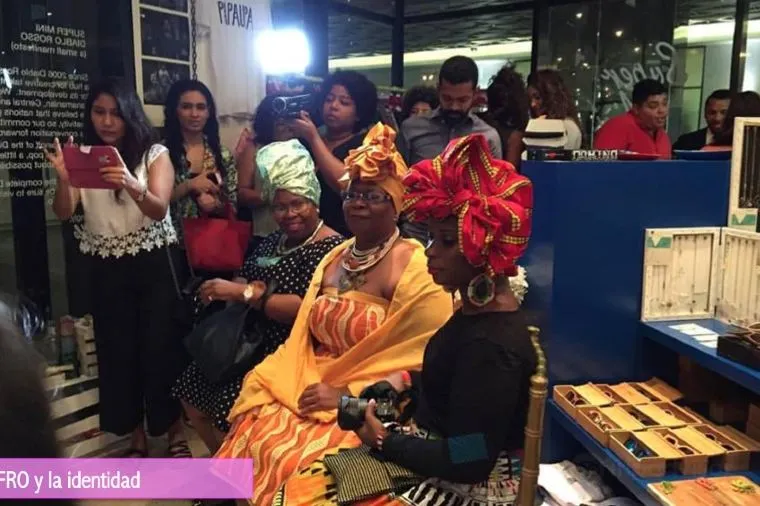
The cost of insurance for a trip to Panama can vary depending on several factors. These factors include your age, the length of your trip, the type of coverage you need, and the insurance provider you choose. To give you a general idea of the costs involved, here are some guidelines:
For a single trip, the cost range for travel insurance can be anywhere from $50 to $200. This range is influenced by the duration of your trip and the level of coverage you require. It's important to note that these prices are in US dollars.
If you are a frequent traveler and plan to visit Panama multiple times within a year, you might want to consider an annual travel insurance policy. The cost range for this type of policy is typically between $300 and $600. Again, the exact price will depend on factors such as your age and the level of coverage you need.
If you want comprehensive coverage that includes not only medical expenses but also trip cancellation, baggage loss, and other potential risks, the cost range for a comprehensive travel insurance policy can be between $100 and $500. The price will vary based on the duration of your trip and the extent of coverage you desire.
When shopping for travel insurance, it's essential to compare policies from different providers to find the one that best suits your needs and budget. Make sure to carefully read the policy details and understand what is covered and what is not. Pay attention to any deductibles or exclusions that may apply. Additionally, some credit cards and travel booking sites offer travel insurance as a benefit or add-on, so exploring those options is worth considering as well.
In summary, the cost of insurance for a trip to Panama can range from $50 to $600, depending on various factors. By comparing different policies and understanding the coverage details, you can find the insurance that provides the necessary protection while fitting within your budget.
- How much does it cost for family, couples or single when traveling to Panama?
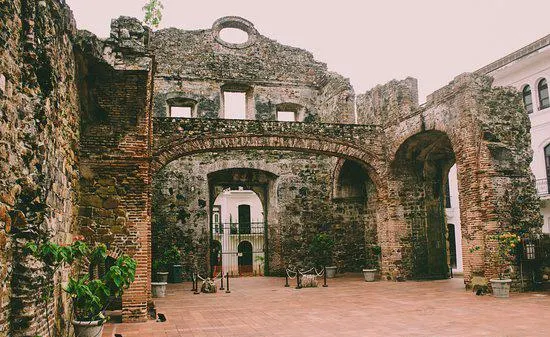
So you're planning a trip to Panama? Well, let's talk about the cost, shall we? The truth is, the cost of traveling to this beautiful country can vary widely depending on a number of factors. We're talking about the length of your trip, the type of accommodation you prefer, the level of luxury you're looking for, the activities you have in mind, and of course, the number of travelers in your party.
Let's break it down, shall we? First up, airfare. The cost of airfare to Panama can be quite the wild card. It all depends on where you're flying from in the United States and when you plan to go. We're talking about a range of prices here, but let's just say you should be prepared to spend a few hundred to a couple thousand dollars per person for a round-trip ticket.
Now, let's talk about accommodation. The cost of lodging in Panama can also vary quite a bit. If you're on a budget, you can find a decent hotel or hostel for around $30 to $50 per night. But if you're looking for something a bit more upscale, you can expect to pay anywhere from $100 to $300 per night for a mid-range hotel or luxury accommodations.
Of course, you'll need to eat and drink while you're in Panama. The cost of food and drink can also vary depending on your taste and preferences. If you're looking to save some cash, you can grab a budget meal at a local restaurant for around $5 to $10 per person. But if you're in the mood for something a bit fancier, a mid-range meal will set you back around $15 to $30 per person.
Now, let's talk transportation. Getting around in Panama can be quite the adventure. If you're planning on using public transportation, a single metro or train ticket will cost you around $0.35 to $1.50. But if you're looking to travel long distances, a bullet train ticket can set you back around $10 to $50. And don't forget about taxis and car rentals, which can add to your transportation costs.
So, what's the bottom line? Well, the cost of traveling to Panama can range from a few hundred to several thousand dollars per person. It all depends on your travel style and preferences. Whether you're traveling with your family, your significant other, or going solo, you should be prepared to spend anywhere from $500 to $5000 for your trip to Panama. Remember, this is just a rough estimate, and the final cost will depend on the choices you make along the way.
- Methods to Save Money When Traveling to Panama
Planning a trip to Panama can be an exciting adventure, but it's essential to keep an eye on your budget to make the most of your experience. By implementing a few smart strategies, you can save money without compromising on the quality of your trip. Here are some tips to help you make the most of your Panama adventure without breaking the bank.

First and foremost, consider traveling during the off-peak season. This will not only help you avoid the crowds but also save you a significant amount of money on accommodation and flights. Additionally, be flexible with your travel dates and use price comparison websites to find the best deals.
Another way to cut down on expenses is by opting for budget-friendly accommodations. Instead of staying in high-end hotels, consider booking a hostel or guesthouse. These options not only provide a more authentic experience but also come at a fraction of the cost.
When it comes to dining, venture away from touristy areas and explore local eateries. Not only will you get to savor delicious traditional cuisine, but you'll also save a considerable amount of money. Don't be afraid to try street food, as it often offers a unique culinary experience at a fraction of the cost.
Transportation costs can quickly add up, so consider using public transportation or walking whenever possible. Panama has an efficient bus system that can take you to various attractions at a fraction of the cost of taxis or rental cars. Additionally, take advantage of free walking tours to explore the city and learn about its history and culture.
Lastly, be sure to research and take advantage of any discounts or promotions available. Many attractions and activities offer discounted rates for students, seniors, or early bird bookings. By planning ahead and being resourceful, you can save a significant amount of money on your trip to Panama.
So, if you're looking to embark on an unforgettable adventure in Panama without breaking the bank, follow these money-saving methods. By being flexible, exploring budget-friendly options, and taking advantage of discounts, you can have an incredible experience while keeping your trip to Panama cost-effective.
- Tips for Traveling to Panama
Planning a trip to Panama? Look no further! We've got you covered with some essential tips to make your adventure in this Central American gem unforgettable. So, buckle up and get ready to explore the wonders of Panama!
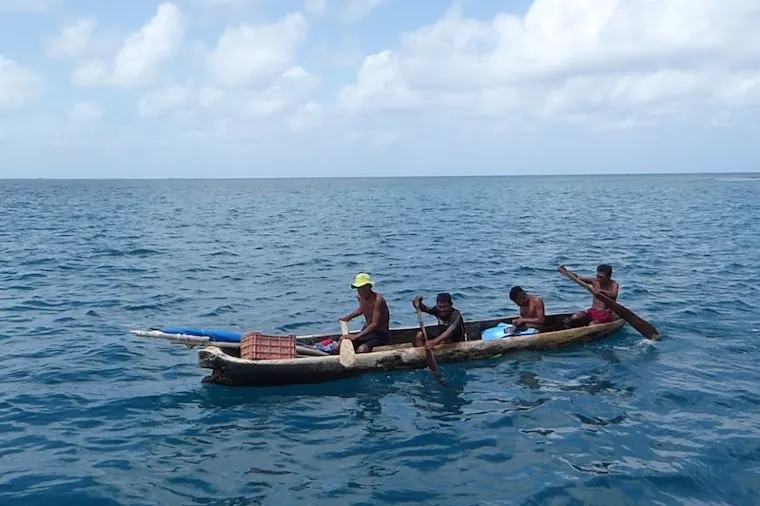
1. Don't miss the Panama Canal: This engineering marvel is a must-see. Witnessing the massive ships passing through the locks is a sight you won't want to miss. It's like watching poetry in motion!
2. Embrace the biodiversity: Panama is a paradise for nature lovers. From the lush rainforests of Darien to the stunning beaches of Bocas del Toro, there's an abundance of wildlife and natural beauty to explore. Get your camera ready!
3. Dive into the San Blas Islands: These idyllic islands offer a glimpse of paradise. Crystal-clear waters, white sandy beaches, and vibrant coral reefs await you. Snorkel, swim, and soak up the sun in this tropical paradise.
4. Explore the historic Casco Viejo: Step back in time as you wander through the cobblestone streets of Panama City's old quarter. Admire the colonial architecture, visit charming cafes, and indulge in delicious local cuisine.
5. Get adventurous in Boquete: If you're a thrill-seeker, head to Boquete. This mountain town is a haven for adrenaline junkies. Go hiking, zip-lining, or even try your hand at white-water rafting. Get ready for an adrenaline rush!
6. Sample the local cuisine: Don't leave Panama without trying the traditional dishes. From hearty sancocho (chicken soup) to mouthwatering ceviche, the flavors of Panama will tantalize your taste buds.
7. Learn some Spanish phrases: While many Panamanians speak English, knowing a few basic Spanish phrases will go a long way. Locals will appreciate your effort, and it will enhance your overall travel experience.
8. Stay hydrated and protect yourself from the sun: Panama's tropical climate can be intense. Drink plenty of water, wear sunscreen, and don't forget your hat and sunglasses. Stay cool and enjoy your adventure!
So, there you have it, fellow travelers! These tips will ensure that your journey through Panama is filled with unforgettable experiences. Get ready to immerse yourself in the beauty, culture, and adventure that this incredible country has to offer. Happy exploring!
* All user reviews in this article have been translated by machine.
* The information above is subject to change at any time. For the latest information, please check the websites of hotels and attractions.
Table of Content
- Customer Support
- Service Guarantee
- More Service Info
- Website Feedback
- About Trip.com
- Terms & Conditions
- Privacy Statement
- About Trip.com Group
Other Services
- Investor Relations
- Affiliate Program
- List My Property
- Become a Supplier
Cost of Living in Panama (2024)
Last updated on January 5, 2024 by Shannon
The United States’ strong presence in Panama dates back to the early 1900s, and it spans nearly all of the 20th century. This fact has had a lasting impact on the country, and it also why so many expats looking to move to Central America are quick to consider Panama.
In 1903, Panama granted the U.S. rights to the Canal, and the Panama Canal Zone became an unincorporated territory of the United States until 1979. The U.S. would maintain partial control over the canal until 1999. This is more than a quick history lesson, as it has a very real and direct impact on how your life might go as an expat in Panama.
My father grew up in the canal zone, spending 17 years there before moving to Florida to finish high school. In turn, I grew up with stories of his time in the country, and his own plans to eventually retire in Panama. That meant research trips to the country, patacones for dinner growing up, and a story about life in Panama that I hoped to see for myself.
When my dad and I first visited Panama in 2013, some of his retirement plans were a bit squashed. It’s a popular spot for retirees, and the cost of living for expats in Panama is rising in the most popular areas.
While we looked at property in Gamboa and Boquete, specifically, there are actually many other trendy expat areas. Each city has their own pros and cons. As a digital nomad myself, I have lived in Mexico , Thailand , and Spain for years. So, together we decided to explore what Panama has to offer.
We found that where in Panama you choose to live has a strong impact on living costs. This post will explore the vibes and quality of life for the most popular spots, as well as detailed resources for understanding the cost of living in each of Panama’s popular expat towns.
Table of Contents
Why Move to Panama?

Panama is an excellent spot for expats, retirees, and even an increasing number of digital nomads are calling Panama home for part of the year. The currency is pegged to the USD and a good deal of English is spoken in the popular cities, yet the food and culture remain solidly Panamanian.
There is a lot of U.S. influence on Panama thanks to decades of U.S. control over the Panama Canal. Today, Panama City has high-end malls and English is spoken widely in Boquete. While new arrivals surely make up some of the expats, there are also many retirees and military personnel living in Panama—these are leftovers from the Canal Zone era.
This means many of the expats are there for the very fact that it has the U.S. vibe. But the country boasts a range of cultures north to south, each one is a part of the compelling cultural experience of living in Panama.
During my research trip with my dad, we did the reconnaissance work looking at areas, but also visited an indigenous chocolate plantation , visited family friends , and enjoyed the history in Panama City. If you are there for considering Panama for the culture, it’s there, I promise. A lot of the online expat guides are for the more sanitized areas of the country, but all of Panama has a lot to offer potential expats.
Another reason that many consider Panama: It’s possible to live in Panama for as low as $1,000 per month. However, this is only in very specific cities. It’s not a country of rock-bottom prices like living in Thailand or even the affordable costs of living in Mexico . Consider this comparison of costs of living around the world for perspectives on where Panama fits.
Many people choose Panama because of the weather and ease of living. Even more, unlike other countries, Panama offers a special discount program to those who choose to retire in there; through the Pensionado program it is possible to get discounts between 10-50% on everything from food to hotel to entertainment to airline tickets. To qualify as a retiree, you need to prove just $1000 in monthly income, which is a lower bar than many countries require.
That said, while it’s not the cheapest place, the many other benefits have many expats choosing Panama over nearby places in Central America.
Average Cost of Living Across Panama: $1,120 – $4,000
Expect to spend $1120 – $8000 to live in Panama. All general estimates in this guide assume living costs for two people. The stories and resources provide specific information for singles, couples, and families.
Fast Facts About Living in Panama
Panama Balboa; pegged 1:1 with the US dollar.
What’s the expat scene like in Panama?
The majority of expats in Panama are retirees thanks to the country’s pensionados program, which gives retirees discounts, as well as a more relaxed visa process. Panama City has a younger expat scene, and you can often find digital nomads or long-term backpackers holing up in the Bocas del Toro islands for three- to six-month stints.
How is the wifi in Panama?
High-speed internet is readily available in cities like Panama City, Colon, and David. In remote areas, you’ll find DSL, cable, or satellite internet.
Average Local Salary
A middle class salary in Panama averages USD $1,200. In smaller cities, a monthly income is roughly $550. These fluctuate by region/city.
Pet Friendliness
Panama is relatively pet-friendly, however the process for bringing your pets can be a little overwhelming. Consider hiring a local agent/fixer for help. And start well before your planned move so you can get the vaccinations and documentations in place.
Possible Issues
Water and power outages are common outside of major cities.
U.S. citizens do not require a visa to enter Panama. To gain entry you will need a passport that is valid for three months after the date of your departure from Panama. Upon entry to Panama, you will receive a 30-day tourist card, which can be extended to a 60-day tourist card.
If you wish to retire in Panama, visit the U.S.’s Embassy of Panama website for documentation requirements. Also note that in the wake of the covid pandemic, the government launched a tax-free digital nomad visa that has some pretty excellent features!
Is Panama safe for digital nomads and retirees?
It’s relatively safe to live in Panama. Petty theft, opportunistic crime, credit card fraud, and muggings are common in major cities like Panama City.
Is the water safe to drink in Panama?
Yes, the water in Panama is safe in most areas. You can drink tap water in most of Panama. But avoid drinking tap water in Bocas del Toro and Comarca de Guna Yala.
Child Friendliness
I know of several families who have relocated to Panama, with many settling in places like Panama City or David. Most larger cities have at least one international/American school—if you want a variety of quality schooling choices, however, Panama City is just about your only option (or homeschooling).
What’s the Quality of Life?
There is a lot of U.S. influence on Panama. But Panama has a range of cultures north to south; this mix creates a compelling cultural experience. Even more, Panama offers a special discount program and an easy visa process for foreign retirees.
The U.S. influence on Panama has a big impact on why many expats tend to choose this spot. I can’t emphasize this enough—unlike nearby Costa Rica, Panama in particular has a very strong U.S. vibe, at times. There is also a large indigenous population and plenty of cultural activities for those expats looking for a good mix. Except for in the islands, most expats have cars for transportation.
The long-standing U.S. influence means many houses on the rental and buyers market are built by former foreigners, with that same style and flair. Food is plentiful, the high number of expats means that grocery stores often carry imports of your favorite items. Let’s take a closer look at the major expat spots.
This section looks at the vibes and why you might consider each city, the next section compares the actual costs of living for each city.
Panama City
Panama City is a cosmopolitan city, with a vibe similar to Miami and Hong Kong, an ideal place for expats with a more sophisticated budget, who don’t mind traffic, and love a diverse food and culture scene. While there are some retirees in Panama City, you are more likely to find younger expats with well-paying jobs.
Lots of expats report in on the style of life you can afford in Panama City and which parts of the city to consider first. Restoration efforts for several years now are under way in the oldest part of Panama City, Casco Viejo. This is a good going-out spot in the city and is growing in popularity as it is now becoming safer to visit after dark.
Boquete, Coronado, and El Valle de Anton are the three most popular expats destinations in Panama, partly because each of these cities are easy places set up an expat lifestyle. This does, of course, increase the cost of living over other small cities and towns.
Boquete is about 60 kms from the Costa Rican border, is a popular destination with retirees. The temperatures here are cooler than in Panama City, about 70-80ºF during the day, with the temperature dropping in the evenings.
In Boquete there are almost as many expats as there are Panamanians, there are plenty of outdoor adventures, nightlife, and good food. It’s a very pretty, idyllic setting.
Though there is a good deal walkable in the main city center, many expats have cars to navigate to homes in the outskirts. There are many festivals, a weekly market, and the number of activities that make this place enjoyable seem to increase each year.
Coronado is a beach resort town about sixty minutes south of Panama City, along the Pacific Ocean. A popular spot with beach-loving expats, and with Panamanians too. The cost of living in Coronado is higher than that of Boquete.
The expat community here is thriving and growing more every day. It’s a different vibe than Boquete in a very real way. It doesn’t have a lot of the local culture that you can find in other areas. This is the best piece I’ve read detailing the quality of life in Coronado . Think: nice roads, new buildings, shopping centers, McDonald’s, and more.
El Valle de Antón
El Valle de Antón is perched on the floor of a volcano crater in the central highlands about 120 kms from Panama City. El Valle de Antón has a large indigenous community, and a weekend arts and crafts market that attracts tourists, expats, and locals. Setting up life as an expat is easy, and the community is active and helpful. This is a good spot for a mix of culture with the expat amenities.
If you’re on a budget or moving your family to Panama, David (pronounced Daveed) is an excellent choice. The second largest city in Panama, and the capital city of the province of Chiriquí.
In the Panama Highlands, the temperature in David is hotter than that of Boquete—a lot hotter at times. But it’s a perfect spot for those who enjoy city life, but on a budget.
Being a large city, there are a both local and international schools, a mix of restaurants and hospitals, and everything you’d expat in a large city. Many expats from Boquete commute to David for healthcare.
Small Expat Towns
Smaller towns like Las Tablas , Aguadulce , Penonomé , Cerro Azul , and Bocas del Toro (a collection of islands on the Caribbean side of Panama, near the Costa Rican border) have a lower cost of living and give expats a chance to experience more local culture. Many of these areas lack the large, Western-style hospitals in larger cities. If you have ill-health, the remote nature of a place like Bocas del Toro isn’t be ideal.
In addition to those smaller expat towns, you’ll find expats living in even the most unlikely of cities. Anything commutable to Panama City has locals and expats interspersed. My dad and I visited his former nanny in La Chorrera , and she mentioned many retirees from the Canal Zone had set up shop there, even though no expat scene exists. Cities like this are local-level prices.
Realize that the local wages are often far lower than the cost of living estimates in other parts of this guide. Many Panamanians are living on local salaries of about $550 per month, so any non-expat cities are going to have very different costs and different qualities of life. In my experience, these towns also have no expat scene, so unless your Spanish is fluent and you plan to make new local friends, take this into consideration during your research.
The Food in Panama
Panamanian food is a mixture of African, Spanish, and Native American, with corn being the main ingredient in most dishes. Chicken, Pork, Beef, and Seafood are also integral components of Panamanian cuisine. The national dish is Sancocho , a stew like dish with chicken, yuca, mazorca and otoe. This is one of my dad’s favorite dishes and it gives you a good understanding of the flavors you’ll find present throughout the rest of Panamanian cuisine.
Expect foods when you go out to include a lot of rice, beans, corn, and vegetables on the low-end. But we found nice pizza restaurants, Italian, Chinese, and a mix of influences in even the most non-touristy cities in Panama.
Being a vegetarian in Panama wasn’t too difficult. The range of food influences was great for me. Wherever we ate, I could enjoy vegetarian food while my family enjoyed meat. That being said, there are few vegetarian-specific restaurants, so it’s a lot of beans, rice, and smashed plantains at local spots.
Being a celiac in Panama will be challenging; however, there is a website called Fundación de Celiacos de Panama that has a lot of helpful information. The website is in Spanish, so you might need to use Google translate.
What Does it Cost to Live in Panama?
It’s not as cheap as many expats might expect. In our scouting, my dad and I were surprised that houses in Gamboa easily sell for half a million U.S. That said, local wages are lower than these estimates. In general, unless you plan to live in the very local cities, where primarily only Panamanians live, a mid-range lifestyle will cost anywhere between $1,000 and $3,667 per month, depending on which city you choose.
These estimates are for couples, families, or solos looking to maintain a bit of their former lifestyle. Boquete is the perhaps the most popular expat spot, with Coronado and El Valle also popular. Boquete has a strong retiree community, while Panama City (and to an extent Bocas) attracts a younger expat/digital nomad crowd. Go to some small, niche expat spots like Cerro Azul or Las Tablas , and you save on some areas—rents as low as $400 per month.
Panama City Cost of Living: $2,000 – $2,600
Jessica Ramesch is the editor of International Living’s Panama website. An expat from the US, Jessica has written an informative post about the cost of living in Panama City . She gives rental information of various areas of the city, and reports that one could live well in Panama City on about $2,000 per month.
Mike is an expat from Tampa, Florida and lives in Panama City, Panama with his wife (and cat). He runs the site, Panama for Beginners. His cost of living in Panama post gives a detailed accounting of the costs involved with living in Panama City, as well as a comparison to what he was paying back in Tampa. He reports that the cost of living in Panama City is about $2,500 to $2,600 per month.
Boquete Cost of Living: $1,100 – $2,500
Park and Josh are expats from the US who sold their business and moved to a 400 acre island off the coast of Panama, and run a website called Viva Tropical which features articles on life in Latin America.
Park and Josh have written an extensive article on living in Boquete , providing helpful details on discounts given to Panama’s Pensionados (foreigners who choose to retire in Panama). Park and Josh report that a three bedroom home with two bathrooms will cost around $800 a month to rent. This estimate has been born out from my visit too.
Betsy, Reyn, Skylar, and Blaise are a family who have lived in Panama for the past eight years. They run a website called Living in Panama, which focuses on family life in Panama. They have written an incredibly informative post comparing the cost of living in Boquete , as well as two more towns in Panama that are popular with expats. They report that the cost of living in Boquete is about $1,100 to $3,267 per month.
David Cost of Living: $1,000 – $2,000
Kris Cunningham is an expat from Sarasota, Florida who moved to David, Panama with her husband in 2012. A retired RN, Kris writes detailed accounts of her life in David.
In her latest cost of living in Panama post, Kris details everything from rent to utilities to food, as well as costs for extra expenses such as drinking, painting class and supplies, and trips to Panama City.
Kris reports that their cost of living in David is $1,243.26 for them to live comfortably as a couple. As Boquete increasingly seems to price out some expats, David is becoming a more popular option for those who can stand the heat. It’s a more humid and hot climate, alongside a very different vibe.
Coronado Cost of Living: $1,500 – $3,200
That same family of four, Betsy, Reyn, Skylar, and Blaise, have lived in a lot of the country. In addition to Boquete, they shared an informative post comparing the cost of living in Coronado with two more towns in Panama that are popular with expats.
They report that the cost of living in Coronado is about $1,810 to $3,667 per month. Other estimates seem to fall into a similar range. Most of the accommodation is very near to the beach, and the prices are matched to the fact that this is a holiday town for many expats and locals alike.
Bocas del Toro Cost of Living: $900 – $2,000
Bocas del Toro is a gorgeous spot, it’s a collection of islands near Costa Rica, on the Caribbean side of Panama. But expats choosing to live here are looking at an increase in costs that goes with island life most anywhere in the world.
That being said, this is one of the cheaper possible spots in Panama. There is some lower-end accommodation—bungalows, small beaches, etc—and there are many potential islands to call home.
It’s a different quality of life than cities like Boquete, which are expat havens but a very different lifestyle. Younger expats or digital nomads will enjoy the possible mix of surfing, live music, snorkeling and other island life activities.
Chuck Bolotin is the man behind Best Places in the World to Retire, and he wrote a piece for The Street on the cost of living in Bocas del Toro . Chuck reports that it is possibly to live on $1000 per month, and $2000 would give you even more freedom to enjoy life and take part in extra activities.
El Valle de Antón Cost of Living: $1,200 – $2,800
Betsy, Reyn, Skylar, and Blaise, eight years into their Panama life, have a good grasp on which areas are best for families in Panama. They share a look at the cost of living in El Valle , as well as two more towns in Panama that are popular with expats. They report that the cost of living in Coronado is about $1,440 to $3,342 per month.
Overall, with all these destinations considered, living in Panama is comparable to Mexico: food, culture, and costs. Similar to Thailand, while it is possible to live on $1,000 per month in Panama, you will enjoy life more by expanding your budget and allowing for extra activities and events. A baseline of $1,250 a month would be more reasonable.
And while all this research gives a good baseline of vibes for each place and possible costs, I can’t tell you how much I recommend that you plan a trip to Panama so you can do your research in person.
If you have the time, consider spending your 60-day tourist visa as a research trip. You could move to the city with the most potential for the two months, or spend a few weeks in your top three spots.
My dad and I rented a car once we made it to Panama City, and this was such a good call. Driving in Panama City is stressful, but the rest of the roads tend to run pretty well. The resources at the end will help you continue your research, as well as help you plan your research trip to Panama.
Resources For Moving to Panama
- You will need comprehensive worldwide expat insurance and separate property insurance policy once you’re living overseas—I’ve used IMG Global and Clements for many years now with great success and highly recommend both.
- The Boquete (Not for Tourists!) Handbook : Dianne Heidke has been an expat in Boquete, Panama for over ten years. In her book, she provides detailed information on visas, purchasing property, banking, taxes, culture, and more. A valuable resource for anyone thinking about retiring in Boquete, Panama.
- The Gringo Guide to Panama, What to Know Before You Go : JuliAnne Murphy relocated to Panama in 2008, and after two challenging years of life as an expat in Panama, she decided to write a book. A cultural guide to Panama, and all that life as an expat entails.
- Living in Guatemala : This eguide shares the cost of living and what it’s like in one of my favorite spots in Central America, Guatemala. Although less developed than parts of Panama, there are some very compelling reasons (great culture and more affordable, to name two) to consider moving to Guate.
- A Better Life for Half the Price : A Mexican expat breaks down all the major expat spots in the world with costs, quality of living, and resources. I learned a lot and found a couple of countries I hadn’t previously considered. It’s worth buying if you’re still searching out which country is best for the life you want to live.
- Getting Out: Your Guide to Leaving America : There are a lot of these general guides. The book above, Better Life is about where is a good culture fit, whereas this is the better of the lot of “move overseas” books that covers the practicalities and very hands-on information you need as someone considering living anywhere outside the U.S. If you’re new all the researching, this can kick-start your process. And if you are laser-focused on the retirement topic, versus moving overseas at a different state in life, this retirement guide has great advice.
- The Tax Book for U.S. Expats : This is well-priced and unique to expats and retirees filing abroad. It gives a granular look at forms, terms, and sorting out exactly how to file—good for those with complicated tax situations. More recently released, U.S. Taxes for Worldly Americans goes broader and is aimed at younger expats and digital nomads still working and handling how to earn income overseas, pay taxes, and live a nomadic life. It doesn’t explain the terms or niche situations/forms as well as the other book, but instead acts as a guide for younger travelers. Depending on your situation, pick up a copy of one of these guides before you leave so that you will have a tax system in place that maximizes the opportunities to easily file.
- You’ll also want property insurance once you’re living overseas—I’ve used Clements for many years now.
- Bringing Pets to Panama—from A to Z : A thorough post on what you need to do to bring your pets with you to Panama, starting with what you need to do three months before moving to Panama.
- How Banking Works in Panama : A post on everything you need to know about opening a bank account in Panama, as well as some of the challenges.
- Check out these FB groups and expat forums: Young Expats in Panama , Expats in Panama , ExPats in Panama .
Books to Learn About Panama
- The Path Between the Seas: The Creation of the Panama Canal : A fascinating read on the building of the Panama Canal by famous historian, David McCullough, who tells the stories of the men and women fought the odds for over 400 years.
- The Tailor of Panama : John le Carre crafts a sensational spy mystery and The Tailor of Panama is one of his best. Set in Panama City, The Tailor of Panama is an ex-con who learned to tailor in prison and living a lie, and a British spy who travels to Panama to recruit agents and gather intel.
- Panama: A Novel : Twenty-five years after leaving Panama, Hank (who has both American and Panamanian ancestry) returns to Panama in 1989, just ten years before the American withdrawal. A captivating story by Carlos Ledson Miller that takes you throughout Panama, from the capital to the jungles to the canal zone to La Preventiva prison.
Planning a Research Trip to Panama?
- Pick out a good travel insurance policy. For comprehensive worldwide expat insurance, I have always used IMG Global —I’ve made claims on IMG and gotten emergency care abroad and it’s always worked quite well. Or, if you fly into Tocumen airport the country extends you 30-days of free travel insurance. Seriously, how cool is that? But if you’re staying longer than 30-days, you’ll need travel insurance. And once you move there, you’ll need a long-term local insurance policy.
- If you’re visiting Panama City , I recommend Los Mostros Hostel as a super budget option or Novotel Panama City for mid-range prices and accessibility to the places you’ll likely need to research.
- If you’re visiting Boquete , it’s a small city so you can’t go wrong with most of the central places. I recommend Refugio del Rio as a budget option—my dad, my niece, and I stayed here in a private room and it was quite nice. Casa de Montaña Bed & Breakfast is good for mid-range prices and good accessibility.
- In David , I recommend Bambu Hostel as an option for budget travelers, or Aranjuez Hotel & Suites for mid-range prices and accessibility.
Recommended Cultural Reading
If you’re hoping to fully immerse in the local culture, then there a few good books you should read. The Path Between the Seas: The Creation of the Panama Canal is the definitive book on the subject.
Panama’s history has been strongly shaped by the canal, and this makes a required reading for those moving to Panama—bonus is that it’s really quite readable. Besides that, the only other book on Canal history you should consider is this one . Between the two you should be covered.
For lighter reads, The Tailor of Panama is a fascinating read, as is The World in Half .
Receive exclusive advice about living for less abroad!
A long-time expat living in Spain shares advice and tips for digital nomads and retirees deciding where and how to maximize their cost of living by moving overseas.
Cost of Living Comparison
Still researching the right spot to live? Our Cost of Living Guides share extensive resources on all the major expat spots around the world. These guides include thorough breakdowns of the culture, quality of life, vibe, and—importantly—budget breakdowns so you can better plan which spot in the world best meets your needs.
More From Forbes
The best u.s. airlines in 2024—according to a new report.
- Share to Facebook
- Share to Twitter
- Share to Linkedin
The Best airlines in the U.S. is Alaska, according to a new study.
When you’re looking for flights, you’re probably most loyal to the airline that you have status with or that has a hub in your city—most often, they’re one in the same. Or, you’re looking for the best flight deals, which should be a little bit easier to come by this spring as flight costs are down 7% year-over-year. But safety, comfort, and other factors are also top of mind when it comes to booking flights, and a new study from WalletHub, a personal finance company, took those considerations and other metrics into consideration to determine the best U.S. airlines of 2024 .
Alaska Airlines is the top U.S. airline, according to the report that used 13 metrics to evaluate the nine largest carriers in the country, plus a regional carrier.
This year’s list is a shakeup from the previous two years, as Alaska has dethroned Delta as the top airline. Delta was WalletHub’s top airline in 2022 and 2023. But Alaska has been previously ranked as the best airline, taking the top spot on WalletHub’s list from 2017 to 2019 and again in 2021.
Alaska Airlines is ranked the No. 1 airline in the U.S. by WalletHub.
A budget carrier, Spirit Airlines, cracked the top 3 and was also named the safest airline. Meanwhile, Delta led in categories like reliability and comfort.
How Was the Best U.S. Airline Determined?
For its rankings, WalletHub considered factors like reliability, comfort, affordability, and safety. That’s to say the analysts considered which airlines had the lowest rates of delays and cancellations, which airlines offer the most leg room and in-flight perks like free wifi, the price of flights, and safety incidents per 100,000 flights.
Bitcoin Suddenly Braced For A 35 Trillion Halving Price Earthquake
New google play biometrics warning issued to all android users, apple watch series 9 hits all time low special offer price.
The analysts used data from the U.S. Department of Transportation. When it comes to things like flight cancellations and delays, the team collected information about each airline, but then tossed out any disruptions that were caused by weather, security, or National Aviation System-related cancellations as they’re not specific to any one carrier.
Passanger airplane flying above clouds in evening.
Categories were also weighted differently, with baggage and departures accounting for 50 points, safety counting for 35 points, and in-flight comfort counting for 15 points. Within each category, points were assigned — i.e. in the comfort category, leg room got a max score of 2 points.
Ahead, we dive into the ratings from WalletHub, which includes best overall, most comfortable , safest, and the most budget-friendly.
What are the Best Airlines in the U.S.?
An Alaska Airlines Boeing 737 landing at Portland International Airport at dusk.
Here are the top airlines, according to the study findings from WalletHub:
WalletHub's list of Best airlines in 2024.
No. 1: Alaska Airlines
No. 2: SkyWest Airlines
No. 3: Spirit Airlines
No. 4: Delta Airlines
No. 5: United Airlines
No. 6: JetBlue Airways
No. 7: Hawaiian Airlines
No. 8: American Airlines
No. 9: Frontier Airlines
No. 10: Southwest Airlines
What are the Most Reliable Airlines in the U.S.?
A Boeing 767 passenger aircraft of Delta airlines arrives from Dublin at JFK International Airport ... [+] in New York as the Manhattan skyline looms in the background on February 7, 2024. (Photo by Charly TRIBALLEAU / AFP) (Photo by CHARLY TRIBALLEAU/AFP via Getty Images)
WalletHub analysts say Delta had the lowest rates of cancellations, delays, mishandled luggage, and denied boardings, which earned the airline the top rank in this category.
No. 1: Delta Airlines
No. 3: Alaska Airlines
No. 4: United Airlines
No. 5: Southwest Airlines
No. 6: Spirit Airlines
No. 7: JetBlue Airways
No. 8: Hawaiian Airlines
No. 9: American Airlines
No. 10: Frontier Airlines
What are the Safest Airlines in the U.S.?
Spirit Airlines is the safest airline, according to WalletHub, because it had a low number of incidents per 100,000 flight operations, no fatalities, and fewer than 15 people injured in the last five years. The airline's relatively new fleet of aircrafts also helped boost its score.
No. 1: Spirit Airlines
No. 2: Alaska Airlines
No. 3: Frontier Airlines
No. 4: SkyWest Airlines
No. 5: American Airlines
No. 6: Delta Airlines
No. 9: United Airlines
What are the Most Affordable Airlines in the U.S.?
Los Angeles, CA - April 04: A Spirit Airlines jet taxis at Los Angeles International Airport where ... [+] travelers are getting a window seat view of wildflower fields blooming between the runways at the airport on Thursday, April 4, 2024 in Los Angeles, CA. (Brian van der Brug / Los Angeles Times via Getty Images)
For this ranking, WalletHub analysts looked at the passenger revenue per available seat mile. On the low end, Spirit’s was 5.23 cents per mile and on the high end, American Airlines’ rate was 16.15 cents per mile.
No. 2: Frontier Airlines
No. 3: SkyWest Airlines
No. 4: Alaska Airlines
No. 5: JetBlue Airways
No. 6: Hawaiian Airlines
No. 7: Southwest Airlines
No. 8: United Airlines
No. 9: Delta Airlines
No. 10: American Airlines
What are the Most Comfortable Airlines in the U.S.?
Tail with the logo of JetBlue, Airbus A320 passenger aircraft of the low-cost airline as seen at the ... [+] tarmac and jet bridges of LaGuardia Airport in New York City. (Photo by Nicolas Economou/NurPhoto via Getty Images)
WalletHub considered things like in-flight entertainment options, snacks and drink availability, leg room for the comfort category.
No. 1 (Tie): Delta Airlines
No. 1 (Tie): JetBlue Airways
No. 2 (Tie): Alaska Airlines
No. 2 (Tie): American Airlines
No. 2 (Tie): Southwest Airlines
No. 3: United Airlines
No. 4: Hawaiian Airlines
No. 5: Spirit Airlines
No. 6: Frontier Airlines
Note: SkyWest, a regional carrier, wasn’t included because it serves other major airlines, which dictates what in-flight services and amenities are provided.
- Editorial Standards
- Reprints & Permissions
- Share full article
Advertisement
Supported by
The Maya Train Will Get You to All of Yucatán’s Best Spots. But Not Yet.
In December, the train began running on its first route through Mexico’s Yucatán Peninsula. On a five-day journey a few months later, the author encountered enthusiasm, and scheduling hiccups.

By Elisabeth Malkin
Elisabeth Malkin has been visiting the Yucatán Peninsula for three decades.
I stepped off the platform at the gleaming new Maxcanú train station, eager to see the magnificent Maya archaeological site of Uxmal. All I needed was a taxi to take me there, a trip of about 30 miles away.
There are no taxis, said the stationmaster, as we stood on the polished limestone floors of the high-ceilinged station, which was cool and breezy despite the brilliant late-morning sun outside. And I was the third person in two weeks to get off at Maxcanú expecting to reach Uxmal, he said.
I was midway through a five-day trip to explore the brand-new Maya Train and several of its destinations in the Yucatán Peninsula of Mexico . Designed to run 965 miles (1,554 kilometers) around a loop of 34 stations when completed, the train will whisk passengers in cool comfort through colonial cities, archaeological sites, splashy resorts and tropical forests.
Now I was stunned. Wrangling a taxi has never been a problem in Mexico. But the drivers gathered in the main square of Maxcanú offered only beat-up vans that hopscotch through small towns, where I might or might not find a taxi to Uxmal. The next van was leaving in 45 minutes.
Yucatán’s layers of history have long held me spellbound. During earlier car trips, I have clambered up deserted Maya temples and palaces, stepped into the cool naves of massive 16th-century churches and visited restored haciendas, testaments of the ostentation — and hardship — of the peninsula’s 19th-century plantation economy. Traveling by train, I thought, would allow me to steep myself in more of that history.
But as I found in Maxcanú, a train won’t necessarily get you to where you want to go.
During my February trip, I traveled on the only route then available, an east-west leg that opened in December and runs from Cancún to Mérida, and then south through the port city of Campeche to the Maya site of Palenque (a short route between Cancún and Playa del Carmen opened last month, with three trains a day). I encountered scheduling confusion, unfinished stations and a dearth of trains — just two operating daily each way between Cancún and Campeche, and only one to Palenque. Overnight sleepers and special dining trains seem years away.
President Andrés Manuel López Obrador considers the Maya Train his showcase development project, and wants to inaugurate the rest of the train before he leaves office on October 1. Based on my experience, that goal seems elusive.
A $29-billion route through the jungle
I started my journey in Cancún, where in the pre-dawn gloom the station hovered like a glowing spaceship. An attendant scanned the ticket I had bought online and a half-dozen more pointed me toward my tourist-class car, which was about a quarter full. I planned to go to Campeche, about 300 miles away, stopping once each day. At 120 kilometers (about 75 miles) an hour, the train covers the route in about six hours, the same as a car. (When construction is complete, the train’s speed should increase to 160 kilometers an hour.)
The car’s wide windows looked out at a wall of low jungle. The blue-green seats were comfortable and there was ample space between the rows. I bought a very good cappuccino at the snack bar, but declined the plastic-wrapped sandwiches. The rest of the merchandise was fruit cups, milk boxes and junk food.
The train will ultimately cost much more than the $29 billion budgeted so far, and it’s not the first time ambitious planners have alighted on the region. Cancún was once a tiny fishing village, selected half a century ago as a tourist hub. Last year 10 million international tourists flew into its airport, more than the airports of Mexico City, Los Cabos and Puerto Vallarta combined.
But uncontrolled growth has stressed the Caribbean coast’s fragile environment. The Maya Train, scientists warn , will push those problems south, threatening the area’s water supply, its unique system of underground limestone caves and its vast nature reserves.
Mr. López Obrador has charged ahead, handing the train over to the military , and arguing that it will spread Cancún’s wealth and attract new visitors. Mexico received more than 42 million overseas tourists last year and they spent almost $31 billion .
Local governments see an opportunity. “The train will allow people to disperse throughout the peninsula,” said Michelle Fridman, the tourism secretary for Yucatán state, which promotes dozens of attractions far beyond highlights like Mérida and Chichén Itzá .
Now that the train is operating, transport companies will begin to connect stations with lesser-known sites nearby, she said.
It’s fair to ask whether the train is the most effective way to develop the peninsula’s tourism. Tour companies already run trips to many sites from major cities, which are well served by buses. Driving a rental car through most of the area is considered safe , according to U.S. State Department travel guidance .
Route of Mexico’s Maya Train
Canceled trip.
It took two hours (and one time-zone change) to reach Valladolid, a colonial city of handsome streets and ancient churches, where I bought the rest of my tickets at the station. A tourist-class ticket from Cancún to Valladolid costs 472 pesos (around $28) for foreigners and 355 pesos (around $21) for Mexicans. First class, with wider seats, costs 755.50 pesos and 566.50 pesos, and discounts are available for older travelers and residents of the five states along the train’s route. (A first-class bus from downtown Cancún to Valladolid costs between 222 and 344 pesos, depending on the time of day, and takes half an hour longer.)
It was impossible to run the new Maya Train tracks into dense city centers and the Valladolid station, like the rest, was outside the urban core. A waiting bus took disembarking passengers downtown, a 15-minute ride for 35 pesos.
That day I toured Ek Balam , the site of a ninth-century Maya kingdom that is dominated by a 100-foot palace distinguished by a facade of carvings depicting winged warriors, stylized animal features and geometric patterns bordered by giant fangs. Admission to the site includes entry to the X-Canché cenote, one of thousands of limestone sinkholes that were sacred to the Maya.
Later that afternoon, I was wandering through the Museum of Ethnic Clothing, a private collection of traditional dress, embroidery and hats, when a WhatsApp message from the ticket office blinked on my phone. My train scheduled for the following day was canceled.
I decided to deal with the problem in the morning and enjoy the city. As I wandered past the antique shops and boutique hotels of the elegant Calzada de los Frailes, it was clear that Valladolid’s tourism, and the infrastructure to handle it, was well established. The Maya Train is simply an alternative way to reach a city that tourists discovered years ago.
‘We’re on the Tren Maya!’
In the morning, I found that my train had not been canceled, but the station for which I had a ticket, Tixkokob, was closed. I got off instead one stop earlier at Izamal, known for its ocher streets and the giant Franciscan convent of San Antonio de Padua, built atop the ruins of a pyramid.
During the 90-minute ride, I heard widespread enthusiasm among fellow travelers who expressed a willingness to give the train time to work out the kinks. “We’re an experiment,” said Oliva Escobedo Ochoa, 64, who was vacationing from her home in central Mexico.
Leticia Iliassich, 57, who is Mexican, was traveling with her Croatian husband along with relatives from Mexico and Croatia. They had initially been scheduled on an earlier train to Mérida that had been canceled. “We knew that it was a new project,” she said. “We don’t mind.”
The group had already sent a video to friends declaring, “We’re on the Tren Maya!”
At the Izamal station I hitched a 15-minute ride into the town center with a man who had asked me to take his photo alongside the train and his father. From there I negotiated a taxi to Hacienda San Lorenzo Aké, a working hacienda that still turns the fiber from an agave plant called henequén into coarse rope. Global demand for henequén, known as Yucatán’s “green gold,” brought fantastic wealth to the region in the mid-19th century, speckling the peninsula with more than 1,000 haciendas. ( Many are now sumptuous hotels.)
Where geometry, nature and the divine merge
It was during my third day that I found myself stuck in Maxcanú, after a 90-minute train ride from Izamal. The stationmaster, an army captain, offered me a ride to Uxmal, just as he had to the stranded tourists before me.
Eying Uxmal’s 4 p.m. final ticket sale, I accepted.
My situation made it clear just how distant the Maya Train’s promises are for tourists seeking to explore more of Yucatán. In time, that will change, said Ms. Fridman, the tourism secretary. “The idea is to have more hotels along the train line,” she said. “That will happen little by little.”
But Uxmal , among the most stunning of the Maya sites, made up for the inconvenience. Uxmal’s grand buildings are faced with intricate decorative masks as well as friezes in which geometry, nature and the divine merge. New plaques at each structure offer detailed information in English and Spanish, part of the government’s investment in improving displays at Maya sites for the train project.
Most tourists either take day trips by car or bus to Uxmal from Mérida or stay at one of three nearby hotels. As I finished dinner at my hotel, the dining room began to fill up: 47 Polish tourists had arrived.
Panama hats and a cramped van
My plan for the day was to go by taxi to Bécal, a town where Panama hats are woven in limestone caves to keep the fibers soft, and then pick up the afternoon train in nearby Calkiní for the port city of Campeche.
But I spent so much time watching the hat-making demonstration and then fitting my new hat and buying gifts that we set off with little time to reach the station. To my chagrin, I missed the train, the last one of the day.
On Calkiní’s central square, I found a van that was leaving for Campeche. Cost: 65 pesos. Time: about 1 hour and 20 minutes, similar to what I would have spent on the train. Of course, I was trapped in a cramped seat and had to listen to the driver’s choice of sentimental ballads, but I was dropped off in downtown Campeche, close to my hotel.
The next day, I toured the Museum of Maya Archaeology , an expertly curated collection that included haunting jade funeral masks, glyphs and delicate ceramic figures.
José Madrigal, 45, an engineer from Fremont, Calif., was trying to make Maya pottery interesting for his twin sons. The boys had just turned 5 and their birthday present had been a ride on the Maya Train. “They love trains,” Mr. Madrigal said. Then the family moved on, keeping up a brisk clip through the museum. They had another train to catch.
Should you take the train?
Yes, if you are traveling between larger stations. The train also offers a way to get to Palenque, which is harder to reach and has roads with security concerns. Travelers can stow bicycles on board.
To see train times, check the destinations on the website . You cannot buy tickets online more than a week in advance. But when you finally board, the ride is smooth — and the coffee is excellent.
Follow New York Times Travel on Instagram and sign up for our weekly Travel Dispatch newsletter to get expert tips on traveling smarter and inspiration for your next vacation. Dreaming up a future getaway or just armchair traveling? Check out our 52 Places to Go in 2024 .

IMAGES
VIDEO
COMMENTS
How much does it cost to travel to Panama? You should plan to spend around $79 (B/.78) per day on your vacation in Panama. This is the average daily price based on the expenses of other visitors. Past travelers have spent, on average for one day: $23 (B/.23) on meals; $11 (B/.11) on local transportation; $69 (B/.69) on hotels
To help you plan your trip to Panama, here are some common prices you can use as a reference point when outlining your trip: Bottle of water/Cola - $1.29 USD. Hostel dorm - $10-20 USD per night. Local bus ticket - $0.35 USD. Cheap restaurant - $4-9 USD. Mid-range restaurant - $20 USD.
Central America / Panama /. Visitors to Panama usually spend between $31 and $197 per day on average for one person and $63 to $394 for two people. While this is a wide range, the average daily cost averages $79 (B/.78) per person. This average includes sightseeing, hotel, food, and local transportation expenses from other travelers.
The 1-hr flight is between $130-$145 USD. You can also fly from Panama City to David (near Boquete), Pedasi, Chitre, the San Blas Islands and the Pearl Islands. The 1-hr flight from Panama City to David costs $134 USD, vs. a 6-hr bus ride for only $9 USD.
Also: shirtless men are an absolute no-no. 8. Confirm the fare before taking a cab. Panama's yellow licensed taxis can be a wallet-friendly way to get around but don't forget to negotiate a fare before you set off. Taxis aren't metered, official rates are usually ignored, and tourists are typically overcharged.
For two people, a two week trip would cost $2,204. On average, a one month trip to Panama costs about $2,362 per person. This is based on the previous expenses of actual travelers, and includes accommodation, food, activities, local transportation, and more. For two people, a one month trip costs $4,723. Isla Diablo, Panama.
Transportation costs in Panama. In general, buses and roads in Panama are good. The cheapest way to travel is by bus. A trip from Panama City to Boquete takes about 9 hours and costs around $30-$35. With the bus, you can get anywhere in Panama, but sometimes the connections are not very convenient, and you may have to transfer buses several times.
There is much more to do when you travel to Panama than just visiting the Panama canal. Here's a quick guide for Panama travel. ... While rooms usually start at $12-$15 USD a person, travelers can reduce costs by taking advantage of local cafes, markets, and transportation. More affluent travelers will find a pleasing selection of plush resorts ...
Plan your trip to Panama with our guide on the cost of traveling. Discover budgeting tips, money-saving strategies, and more for a memorable vacation. Destinations; ... Public transportation options such as buses are a popular and inexpensive way to travel between cities and towns. The cost of a bus ticket can range from $1-10 USD, depending on ...
Feb 26, 2024 • 6 min read. With a plethora of islands, chilled Caribbean vibes on one side and monster Pacific swells on the other, Panama delivers the very best of beach life. Activities. All the reasons Panama is great place to travel with kids. Jan 2, 2024 • 6 min read.
Here are our top tips for making your Panama adventure bueno, bonito y barato (good, nice and cheap). Daily costs. Dorm bed in a hostel: US$10 to US$20; Basic hotel room for two: US$30 to US$50; Self-catering apartment (including Airbnb): US$70 to US$100+ Public transportation in Panama City: US$0.25 to US$0.35, or US$1.25 for toll roads ...
from 52.34 USD to 65.71 USD. Daily budget for one person, assuming that two people travel in a standard close to 1 star (hostels, public transport). When traveling alone, the cost may be slightly higher (hotel room) or the same (dormitory accommodation). Average daily expenses were calculated on the basis of the prices of accommodation, food ...
But since Panama is located only nine degrees north of the equator, temperatures are pretty consistent year-round. The lowland regions, including Panama City, are always hot and humid. Daytime temperatures average 30-33°C (86-91°F), nighttime temperatures are around 21-23°C (69-73°F).
The cost of living in Panama has been steadily increasing over the past decade, and today is at its highest thus far. With the recent change in the minimum wage, which went up almost 30%, everyone is raising prices to be able to continue making profits. And that means that travel costs have increased as well.
The official taxi cost around $30 while Uber is almost 50% cheaper. We enjoyed Panama City a lot, to be honest, we think it is the nicest capital city in South and Central America with plenty of things to do, and it is easy to stay there even longer than three days. ... Bocas del Toro, Panama Travel Guide. panama Lucie March 25, 2023 what to ...
Read the country information page for additional information on travel to Panama. If you decide to travel to Panama: Enroll in the Smart Traveler Enrollment Program (STEP) ... These costs can be in excess of USD$10,000-$20,000, depending on the nature of the treatment. In Panama, most hospitals accept credit cards for hospital charges, but not ...
How to Visit the Pacific Coast of Panama, According to a Travel Expert . A new boutique itinerary guides travelers to two fantastic island retreats. By Emmanuel Burgio. Published on October 25, 2023.
Entry to the visitor center to see the Panama Canal costs between $10 - $20 per ticket. A tour guide is usually not necessary as the visitor's center is very informative, as is the Panama Canal Museum in the Casco Viejo neighborhood of Panama City. The best time to visit the Panama Canal is when there is the most transit, so try to plan to be there when the Canal is at its busiest, usually ...
Bocas del Toro - 2 nights. Day 5 - Take a morning flight to the Bocas del Toro archipelago. Once you arrive on Isla Colón, head out to Starfish Beach. If you have arrived early, consider getting a colectivo to the beach and doing the hike. Alternatively, you can pay for a water taxi to take you there.
Bocas del Toro - Panama City: $28 - a 12-hour trip. Santa Catalina - Sona: $4.85 - a 2-hour trip. Sona - Panama City: $10 - a 5-hour trip. Panama City is also home to the so-called "Diablo rojos," colorful, old American buses. Those cost only 50 cents per ride. A ride on the regular bus costs one dollar.
Prices can range from $20 to $300 per night. Transportation: Panama boasts an extensive and efficient public transportation system, with one-way subway or train tickets costing around $0.35 to $1.50. Food: From budget-friendly eateries to mid-range restaurants, Panama offers a variety of dining options.
Average Cost of Living Across Panama: $1,120 - $4,000. Expect to spend $1120 - $8000 to live in Panama. All general estimates in this guide assume living costs for two people. The stories and resources provide specific information for singles, couples, and families. Monthly Expenses.
Here are some of the top ways Americans may be able to reduce the overall cost of a trip, according to travel experts. 1. Be flexible with trip timing and location. Being flexible with your plans ...
WalletHub released its 2024 list of the best U.S. airlines, Analysts considered safety, cost, comfort, reliability and other criteria for the rankings. ... 7 Ways To Travel More Sustainably. Apr ...
First class, with wider seats, costs 755.50 pesos and 566.50 pesos, and discounts are available for older travelers and residents of the five states along the train's route.
Over the last three years, Calhoun racked up $979,000 in personal air travel, according to the company. Boeing did not have any comment beyond the information in the filing. Why it matters